Or perhaps I’m on…

But either way…

Or perhaps I’m on…

But either way…

I live in San Diego County, and when I hear about a book author who also lives in San Diego County, it makes me a little extra-curious about the author and their book.
“They live here,” I’ll think, “and they wrote this here. Cool!”
The book may be set in San Diego or not, but either way, I have an added incentive to look into it.
My reactions to books are many and varied, and here are three:
Reaction #1: I was entertained.
Reaction #2: I learned something new.
Reaction #3: I learned something new and was prompted to do my own research and learn more.
Here is one of each, from three San Diego authors:

Publication date: October 2022
Category: World War II Historical Fiction, Women’s Literature and Fiction.
Review, short version: Three roses out of four.
Review, long version:
Jennifer Coburn’s Cradles of the Reich is my Reaction #3 novel: I learned something new that prompted me to do my own research and learn more.
Going in, I knew reading a book with “Reich” in the title – referring to the Nazi regime in Germany and its role in World War II – wasn’t going to be a fun day at the beach.
How could anything that’s Reich-related be anything but grim?
Cradles is set in Germany and begins in 1939. The lead characters are Gundi, 20; Hilde, 18; and Irma, 44. The three women don’t encounter each other until they separately arrive at Heim Hochland, a Nazi breeding home in Bavaria.

Yes – a Nazi breeding home. This was Heinrich Himmler’s Lebensborn program, where young, pregnant, mostly single women could give birth in comfort and secret, then give their child to the Nazi’s who would take charge of its education and adoption. Himmler’s goal was to ramp up the birth rate of racially “pure” Germanic babies, to create a “super-race” of Lebensborn children who would grow up and become the next leaders of Hitler’s “thousand-year Reich.”
But the quantity of babies didn’t meet Himmler’s expectations, so in 1942 German soldiers were encouraged to fraternize with women in the countries the Nazis were conquering. When those women became pregnant, if they were deemed “racially fit,” they were invited to give birth – and give up their babies – at Lebensborn homes.
According to this article in the Jewish Virtual Library:

“Ultimately there were 10 Lebensborn homes established in Germany, nine in Norway, two in Austria, and one each in Belgium, Holland, France, Luxembourg and Denmark.”
Author Coburn’s Gundi and Hilde characters are the pregnant women, and Irma works as a nurse at Heim Hochland. Their lives intersect and then separate, with uncertain futures for all three.
Cradles of the Reich gave me an introduction to what the Jewish Virtual Library called “one of the most secret and terrifying Nazi projects.”
There’s so much to learn about the Lebensborn program, and now – because I read Cradles of the Reich – I’m learning it.

*****

Publication date: May 2022
Category: Biographical Historical Fiction, 20th-Century Historical Romance.
Review, short version: Three roses out of four.
Review, long version:
The Blue Butterfly by Leslie Johansen Nack is my Reaction #2 novel: I learned something new.
Yes, something new, from a story that’s as old as the human race: a single woman’s affair with a married man.
The “new” part was that the woman and man were real people, really high profile, and – according to author Nack – really in love.
She was Marion Davies (1897-1961), a Broadway performer who would become a hugely popular silent film actress. He was William Randolph Hearst (1863-1951), a powerful newspaper publisher and one of the richest men in America.

I knew about their relationship, but I thought Butterfly – as a novel – might give me some insights into Davies’ character that you may not get with biographies. When Davies met Hearst in 1916 she was 19; he was 34 years older, and married with five children.
Was she attracted to Hearst? Attracted to his wealth and power? Was she in love with him…or his money…or perhaps both?
And what motivated Davies to continue the “living-in-sin” relationship for 34 years, until Hearst’s death, when she might have married another man, might have had children…
According to author Nack, Davis and Hearst were deeply in love.
Simple as that.
In May 2022 this website…

…published an article by Nack, in which she unequivocally stated,
“…Hearst loved Marion and was devoted to her…She loved him deeply.”
And at the end of Butterfly, as Hearst lay dying and Davies is at his side, the thoughts Nack wrote for Davies leave no doubt that Nack believed Davies and Hearst were deeply in love:
“He was a towering figure, possessing the heart of a kitten around me – a warm and soft heart filled with love, kindness and generosity. He was my lover, my benefactor, my best friend. I couldn’t manage a deep breath without a pain in my chest at the thought of facing a day without him…
“William Randolph Hearst made me feel loved, valued, and worth something in this life. You can’t put a price on that.”
*****

Published: July 2022
Category: Feel-Good Fiction, Contemporary Women Fiction, Romantic Comedy.
Review, short version: Three roses out of four.
Review, long version:
I find the above book categories on Amazon and though I’ve seen many, I’d never seen the category “Feel-Good Fiction.”
I’d agree with that assessment of Holly James’ Nothing But the Truth, which is my “Reaction #1: I was entertained” novel.
I had that feel-good feeling every time James’ lead character, Lucy Green, speaks the truth. And she can’t help but speak the truth, because – for mysterious reasons – Lucy wakes up on her 30th birthday and realizes that she can’t lie.
She can’t lie to her clients, to her (loser) boyfriend, to her (sexually harassing) boss, and most importantly – she can’t lie to herself.
I read about Truth in this article…

…and in it, James shared her story about the book, which she began writing during the pandemic:
“‘I had been working at home for five months, and I remember distinctly lying in bed thinking how much time I was saving by not doing my hair and my makeup and wondering what to wear. And it struck me that it was really nice,’ said James, who is the head of scientific research for a local tech company.

“‘I started thinking how a story could be framed around that. What would happen if a woman decided to stop going along with these expectations? That was floating around in my head for a few weeks. One day, my husband was watching [the movie] Liar Liar and I thought, What if a woman spent an entire day not being able to lie about anything?’”
James’ book, says the article, …
“…is a life-changing, nail-biting ride, as heroine Lucy Green finds personal and professional fulfillment by liberating herself from spin class, diets, catcalls from doofus men, and petty workplace dramas that are all drain and no gain.”
Lucy turns her life upside down and inside out – in one day – and it’s unbelievable fun.
And I mean “unbelievable” literally – nobody could make all these life changes in a day.

And I’m OK with that.
I don’t read fiction to read about real life.
I get plenty of that on a daily basis online, on TV, in my newspaper, in my face.
If you spend Lucy’s 30th birthday with her I think you’ll enjoy (and perhaps reflect upon) what she – and author James – have to say about…
“…being a woman in a male-dominated world and the satisfaction that comes from making yourself seen, heard and respected, despite the odds.”
*****
So those area my three San Diego authors.
And it turns out my three “reactions” aren’t as clearly delineated as I’d thought.
I was entertained by Nothing But the Truth, but also learned from it.
I learned from The Blue Butterfly but also enjoyed the love story.
And as for Cradles of the Reich, I did learn from it, and I’m learning more from my own research. And while I didn’t “enjoy it,” I can say reading it…
Reading all three books…
Was…

Interspersed in this article are pictures of U.S. Catholic clergy who have been convicted of sexual abuse. While there apparently is no database that tracks these convictions, the most recent estimate I could find lists more than 6,400 U.S. priests or other Catholic Church personnel who have been accused of sexual abuse, and that only “three percent of all priests against whom allegations were made were convicted and about two percent received prison sentences.”
The above image is of Robert McElroy, Bishop of the San Diego Roman Catholic Diocese, holding the playbook referenced in the title of this post.
What prompted that image was this story:
On February 11, San Diego Union-Tribune readers were greeted with this front-page headline:

“The Roman Catholic Diocese of San Diego is warning it may have to file bankruptcy in the future because of the potential fallout from hundreds of pending lawsuits alleging sexual abuse by clergy over the past 75 years.”
The article noted this wasn’t the first time the Roman Catholic Diocese of San Diego filed for bankruptcy for the same reason:

“The warning comes nearly 16 years to the day since the diocese last sought the sanctuary of the bankruptcy code, filing for Chapter 11 reorganization in the face of 144 claims of sexual abuse by clergy. The bankruptcy was dismissed eight months later, after the diocese reached a settlement with the victims for $198 million.”
So, not the first time for this diocese, nor the first time for a U.S. diocese (or archdiocese or religious order) to file for bankruptcy in response to sexual abuse lawsuits.
Let’s go back to when this tragedy first became public.
It began with this, in January 2002:

The Boston Globe story spread across the country, and people began coming forward, talking about how they’d been abused by Catholic clergy. At the time of the abuse, many were male and female children, but male and female adults claimed abuse as well.
And the accusers weren’t just talking about their abuse by clergy. They were also talking to lawyers, and demanding justice.
So the church hierarchy put their red-beanied heads together…

And they also hired lawyers, and came up with a strategy:

A mere two years after the Boston Globe story, the first Catholic diocese filed for bankruptcy, according to this article:

“Archdiocese of Portland Oregon – filed 7/6/04 – $75 million settlement. At the time the archdiocese filed for bankruptcy, almost 170 people had filed suits alleging abuse.”
That same article lists – at #5:
“Diocese of San Diego, California – 2/27/07 – $198 million. 144 victims.”
And now the Diocese of San Diego may make the list again.

Going back to the Union-Tribune article, here’s one of the catalysts for this new slew of lawsuits:
“…the main driver behind a possible bankruptcy was the passage by the state Legislature in 2019 of AB 218, a law that reopened for three years a window for filing sexual abuse claims which occurred long ago and would otherwise be barred by legal deadlines. The law applied not only to churches but any organization. That window closed at the end of 2022.
“The law, which was signed by Gov. Gavin Newsom in October 2019, also contains a provision allowing a tripling of any monetary damages awarded if the organization was proven to have engaged in a cover-up.

“…the majority of the claims date from 50 to 75 years ago, and no cases have been filed alleging abuse by a clergy member this century. No current priests are named in the suits…”
In my research for this post I came across an organization called ChildUSA.org, whose website says:
“Our mission is to employ in-depth legal analysis and cutting-edge social science research to protect children, prevent future abuse and neglect, and bring justice to survivors.”
This led me to a 2021 report from ChildUSA.org that I think is worth quoting:
“Starting in 2004, Roman Catholic dioceses started to explore the use of Chapter 11 bankruptcy filings to deal with the many victims of the Catholic clergy sex abuse crisis. To date, 29 Archdioceses and dioceses have filed for Chapter 11.”
(That number of 29, according to the Bishop-Accountability.org website, is now 31 as of 12/2/22.)

“Resorting to bankruptcy when facing civil abuse liability for child sexual abuse (CSA)…now has become a preferred choice for institutions facing liability for CSA.”
“The bankruptcy system was not established with child sex abuse victims in mind. Chapter 11, in particular, exists to manage assets for an organization going through difficult times. The purpose of a Chapter 11 filing is to stay actions against a debtor and its property so that the value of the estate can be distributed to creditors in the orderly manner provided by the Bankruptcy Code.
“In a cruel, though unintended, irony in these CSA cases, the focus is on the well-being of the institution that covered up child sex abuse and on providing victims with as little financial compensation as possible.”
And that’s exactly what the Diocese of San Diego is once again contemplating – “providing victims with as little financial compensation as possible.”
The Union-Tribune article talks about attorney Irwin Zalkin, who represents about 120 of the 400 plaintiffs who have filed suits in San Diego Superior Court

Zalkin filed the first case, and it’s set to go to trial in July.
The Union-Tribune article explains.
“Filing for bankruptcy prompts an immediate halt to any lawsuits against the person or entity filing for bankruptcy protection. That stay remains in effect for the duration of the bankruptcy.
“If the diocese were to file in late spring or early summer, it would be similar to what happened in February 2007, when the diocese went into bankruptcy court just hours before a trial in the first of the 144 cases was set to begin. The trial never happened because the settlement resolved all the cases.”
“Resolved all the cases” – but “with as little financial compensation as possible.”
The Diocese of San Diego 2007 settlement was $198 million for 144 victims. That works out to an average of $1,375,000 per victim.

Which sounds like a lot of money, until you subtract substantial lawyers’ fees and possibly taxes…
And add in what can happen to the victims of clergy sexual abuse after they’ve bravely come forward, talked about the abuse, and are then subjected to “bankruptcy judges [who have no] training on the trauma inflicted on children by sex abuse or the details of sex abuse, sex trafficking, and organizational dysfunction in dealing with child sex abuse victims”:
“The result is the re-traumatization of many victims, either through the way the process works, or through the feeling of being re-victimized by the institution that caused their problems, which typically include depression, PTSD, substance abuse, failed relationships and marriages, and suicidal ideation, as well as suicide itself.
“Other difficulties for victims in the legal process can include challenges in acquiring evidence as well as experiencing emotional hardships such as shame, or mistrust of the judicial system.”
When you consider this kind of long-lasting – often permanent – damage…
That money awarded in 2007 to the 144 victims is a pittance.
Especially when you consider this February 2023 article:

“If you’re looking at the Catholic Church alone, ‘God’ has at least – and we’re putting a huge emphasis on ‘at least’ – $73 billion in assets.”
If the 400 plaintiffs who have filed suits now are awarded the same settlement as in 2007, the total bill would be in excess of $550 million.

Keven Eckery, the communications director for the Diocese of San Diego was quoted as saying,
“And frankly, we don’t have that kind of money.”
Tsk, tsk, Kevin.
Are you unfamiliar with the 10 Commandments, #9 of which is:
“Thou shall not bear false witness.”
This means:
Do not lie.
Eckery also said any bankruptcy filing would be so all people who claimed they were abused would be treated fairly.
“Treated fairly”?
Catholic clergy at all levels have done an immeasurable amount of damage to their victims, but instead of doing the right thing, the church is going to weasel out of as much responsibility as it possibly can.
So, Mr. Eckery, here’s your assignment: Pick up the chalk and write 100 times…

It’s hard to know who to feel sorriest for in this tragedy – the victims of sexual abuse…
Or the 1.3 million Roman Catholics who go to church in the 98 diocesan parishes in San Diego and Imperial counties. Who give their – in most cases – hard-earned money to the church…

…so the church can provide spiritual comfort and guidance, provide outreach to the poor and the marginalized, and do other good works.
Instead, in 2007 San Diego Catholic Church members saw their money go to this:

And today’s San Diego Diocese church members may soon see the same again.
During the first weekend in February the above pictured Bishop Robert McElroy sent a letter to parishioners, which said in part:

“…the Diocese must face the staggering legal costs of responding to these new lawsuits. In 2007, the Diocese paid out $198 million to settle 144 claims of abuse that had been brought during an earlier lifting of the statute of limitations. This depleted most of the assets of the Diocese. Even with insurance, the Diocese will not be able to pay out similar sums now. This challenge is compounded by the fact that a bill has now been introduced into the Legislature that seeks to eliminate the statute of limitations entirely, leaving the Diocese vulnerable to potential lawsuits forever.
“For all of these reasons, we may be facing a moment where the Diocese enters into bankruptcy in the coming months…
Did somebody say…
“Weasel”?
I call it like I see it.
And in the meantime, the hits just keep on coming.
Here’s one from last month:

One of my favorite topics for reading and viewing is English and Scottish royal history – fiction, nonfiction, biographies, and films.

I’m always on the lookout for new information, but when we’re talking about people who lived centuries ago, new information seldom surfaces.
So while I’m always on the lookout for new information, what I usually encounter is old information with an author’s new spin on it.
For example, Natalie Grueninger has a new biography by about Anne Boleyn (born early 1500s, died 1536), the second wife of Henry VIII. The book is coming out in March, and the description says,
“Through close examination of these intriguing events considered in their social and historical context, readers will gain a fresh perspective into the life and death of the woman behind the tantalizing tale.”
“Fresh perspective”?
Maybe.

But new information?
Doesn’t sound like it.
And a novel about Henry VIII (1491-1547) is due out in May. The author is Alison Weir, who’s written many novels and biographies about English and Scottish royal history, but…
Will Weir have anything new to say?
Maybe.
Or will she just give us a new spin on old information?
Probably.
So I keep hoping…
I keep hoping that somewhere out there is a treasure trove of royal history-related materials. A treasure trove that for centuries has lain untouched somewhere – in the attic of an old English country house, in a box hidden behind a wall in a Scottish castle, in an archive on a bottom shelf in a museum…
And someone will discover it.
And now, someone has discovered a treasure trove!

“Lost Letters by Mary, Queen of Scots”!
This is HUGE news!
Mary, Queen of Scots, lived from 1542 to 1587, and the letters referred to in the headline – 57 of them – were written by her between 1578 and 1584, and apparently were mislabeled:
“Deep in the archives of France’s national library, an assortment of coded letters listed as Italian texts lay untouched for more than 400 years.
“Deep in the archives…untouched for more than 400 years…”
And,
“One leading biographer of Mary described the discovery as the most significant in the study of her life for more than a century.”
THIS is what I’m talking about.
THIS will be new information.
The letters were written during Mary’s imprisonment by her cousin, Queen Elizabeth I and, says this article:

“In the letters, Mary complained about the conditions of her captivity and her poor health. She lamented that her negotiations with Elizabeth I to be released weren’t carried out in good faith. Mary detailed her dislike of Walsingham [Elizabeth’s spymaster] as well as Robert Dudley, Earl of Leicester – a favorite of her cousin. Mary also tried to bribe the queen’s officials.”
OK – I’ll admit the content of the letters doesn’t sound all that interesting to me.
I was hoping for love letters to and from Mary’s third husband, James Hepburn, 4th Earl of Bothwell:

In the newly discovered letters it actually sounds like Mary did a lot of whining, but then – she had a lot to whine about. Elizabeth I jailed Mary because Elizabeth believed Mary was a threat to Elizabeth’s rule, and:
“After 19 years as a prisoner, Mary was eventually executed in 1587, at age 44, accused of involvement in a Catholic plot to assassinate the Protestant Elizabeth.”
Mary wrote her letters in cipher, and the whole story about the discovery of the letters, and the team that deciphered them, is fascinating reading. As detailed in this Smithsonian article:

The trio of code breakers were George Lasry, a computer scientist and cryptographer based in Israel; Norbert Biermann, a German pianist; and Satoshi Tomokiyo, a Japanese physicist and patents expert.
They started with the ciphered letters – here’s an excerpt from one of them:

The Smithsonian article says,
“First, the men transcribed the documents, rendering the 150,000 symbols readable by a computer. Then they employed a hill-climbing algorithm, in which a computer tries out different cipher keys, making small changes to high-scoring keys before attempting to decipher the text again.
“Put simply, codes involve simple substitutions, with specific symbols standing in for letters, numbers or words. Ciphers are more complex, using algorithms to transform messages into seemingly random strings of symbols. Mary’s letters fall under this second category.”
Whew!
The New York Times headline referred to these guys as “amateurs,” but they sure don’t sound like amateurs to me.
Eventually the team accomplished this, with the ciphers translated into French:

There was a lot more to the process, including discovering who wrote the letters, since Mary didn’t identify herself.
So, three guys from three different backgrounds broke Queen Mary’s code, including identifying her as the writer. In addition to their computer work, much of that labor required an old, reliable process: trial and error.
“‘Breaking the code was not a eureka moment – it took quite a while, each time peeling another layer of the onion,’” Lasry [pictured below] said.

“‘This is like solving a very large crossword puzzle,’ he continued. ‘Most of the effort was spent on transcribing the ciphered letters (150,000 symbols in total), and interpreting them – 50,000 words, enough to fill a book.’”
Lasry hopes to “work with historians to produce an edited book of Queen Mary’s letters deciphered, annotated, and translated,” so – a new book, and this time with new information.
This discovery does encourage me to keep hoping that somewhere out there are other treasure troves of royal history-related materials.
Somewhere…I hope people are looking in the attic of that old English country house… and for the box hidden behind a wall in that Scottish castle…and in an archive on that bottom shelf in a museum…
Or in this case, in their back yards:

“An important hoard of Tudor coins – some of which shine light on the marriage history of Henry VIII – has been found by a somewhat startled family weeding their garden.
“…the unnamed New Forest family dug up 63 gold coins and one silver coin dating from the 15th and 16th centuries. ‘They were out turning up the soil and all of a sudden these coins popped out of the ground…miraculously,’ said Ian Richardson, treasure registrar at the British Museum. ‘It is quite a shocking find for them and very interesting for us.’
“Probably hidden in about 1540, they include coins from Henry VIII’s reign, which are unusual in that they also, separately, feature the initials of three of his wives – Catherine of Aragon (K), Anne Boleyn (A) and Jane Seymour (I).”

KUSI-TV in San Diego is something of a vanishing breed:

It’s an indy.
That means KUSI is an independent television station, the sole property of McKinnon Broadcasting Company (MBC), based in San Diego.
That means no network affiliations, so no programming or news from ABC, NBC or et cetera.
That means there’s lots of airtime to fill with programs like these:

And programs like these:

And lots of time for locally produced news programs.
This post is about the former co-anchors of two of those KUSI news programs, Andrea Maas and Allen Denton:

Mass started at KUSI as a morning anchor in 2004. Denton joined KUSI in 2010. The pair co-anchored the station’s afternoon and evening news broadcast for six years. Denton retired in early 2019, and in May 2019 Maas was informed that MBC would permit her employment contract to expire.
Which is another way of telling Maas…

The backstory:
According to various articles, in 2017, Maas began to suspect Denton was being paid more than she was. A former manager confirmed Maas was making at least $80,000 less a year than her co-anchor, who was earning $240,000 a year.
In April 2018 Maas wrote a letter to management highlighting her 35-year broadcasting career and “more than a dozen Emmy nominations.” Maas said no reason existed that “my compensation should be less than multiple male counterparts at KUSI.”
Shortly after her departure from KUSI in June 2019, Maas sued KUSI’s owner for $10 million, alleging her contract wasn’t renewed because she sought the same salary as her recently retired co-anchor, Allen Denton.
Now the story is back in the news because Maas’ lawsuit trial has begun. She alleges gender and age discrimination, and accuses KUSI-TV of violating California’s Equal Pay Act:

What caught my attention in various articles were the reasons for not renewing Maas’ contract. Here are some of those reasons from depositions, lawyer statements and et cetera:
“The company argued that it treated and paid her fairly, and said that in her last few years at the station Maas was ‘not a good team member or journalist.’”

“Maas’ on-air performance was excellent, but that off camera she was ‘disengaged, difficult, and disinterested.’”
“The company said in filings that Denton had more experience, more awards and worked harder.”
“Maas had less experience, worked fewer hours and was ‘not as dedicated to the news’ as Denton.”
“KUSI was moving toward a fresh news format, with more banter and conversation, and the news director decided ‘she was not right for the role.’ It was a ‘casting decision based on her style.’”
Let’s take a look at that last reason.
It appears that Maas wasn’t up to snuff when it came to the “banter and conversation” that KUSI wanted in its “fresh news format.”
“Banter and conversation.”
If you watch local news, you know what they’re talking about.
It’s when two news anchors stop reading the news from the teleprompter and start chatting like they’re Best Friends Forever. All topics are welcome – their personal opinions, their personal lives, their personal hygiene.
It sounds like this:

Melody: Jack, that story you just did about the double murder in Sanford Park? Have you been to the merry-go-round in Sanford Park? I took my daughter there – right after we moved here!
Jack: Really! Did she enjoy it?
Melody: Oh, she loved it! But then the merry-go-round stopped and she started to cry and she was all, you know, boo-hoo and…
Jack: How old is your daughter?
Melody: She was five then.
Jack: That’s such a cute age.

Melody: Oh, it is. She’s eight now, and – wait… (reaches under the news desk for her phone) …Here are some pictures! Yeah, I know – I’ve got a Mom’s Brag Book on my phone. Oh, here’s my daughter in her soccer uniform!
Jack: Aw, what a sweetie! They grow up so fast, don’t they? It seems like one day my son was learning to walk (Jack starts to tear up) and the next day he was off to college. And speaking of college…
Melody: Yeah, Jack, that awful mass shooting at Michigan State University…

Jack: That’s right! Stay with us, and we’ll have that story and more right after this break.
(The break concludes with a commercial I expect you’ve seen – the bent-carrot-standing-in-for-a-bent-penis/Peyronie’s disease commercial:)


Melody: Ooooh, that Peyronie’s stuff sounds so painful – it gives me the shivers! And I don’t even have a…uh…you know, a…a…ummm…
Jack: And Melody, do you know where Peyronie’s disease got its name? It’s named after French surgeon François Gigot de la Peyronie, who described the condition in 1743!

Melody: Wow, Jack – you seem to know a lot about it!
Jack: I do, Melody. And I’m now sharing with you and (nods toward camera) our viewers – for the first time – that I have Peyronie’s disease, or PD, as it’s also known. I was diagnosed about two years ago, and…
This is why I – and I suspect others – are watching less and less local news:
“Banter and conversation.”
And apparently this is one of the reasons Sandra Maas lost her job as a KUSI news anchor.
She lacks that banter-and-conversation ability that news directors and TV station owners think is so appealing to local news viewers:
“Honey, I wish Melody shown us the pictures of her daughter!”
“Gosh, I love when they do stuff like that!”
“Honey, she almost said ‘penis’ on the air!””
“Gosh, I love when they do stuff like that!”
What the jury will decide in Maas’ lawsuit trial of her banter-and-conversation deficiency – and the other reasons for her being let go – remains to be seen.
And as for me, I’ll stick with these folks:

They don’t have anyone to banter and et cetera with.

I’m trying to figure out what was going through this woman’s mind…

As she got dressed to go rob a 7-Eleven in San Diego.

“Let’s see,” she’s thinking, “the last time I robbed a 7-Eleven I wore the grey t-shirt and black sweatpants. Fashionistas never wear the same thing twice, so this time I’ll go white t-shirt and gray sweatpants.”
She nods, satisfied, then considers her footwear. “Darn! All I have are black running shoes!” She grabs a pen and paper and writes, “Buy white running shoes after this robbery.” She peruses her closet for a moment, then smiles. “Got it!” she says jubilantly:

“Slippers! SO not-obvious. Nobody robs a store in their slippers. Talk about a fashion statement!”
I’m making light of this, when I know there’s nothing funny about it.
Here’s the full version of the above image of the woman:

We can’t see her slippers, but we can see what she’s holding in her hand.
According to the Union-Tribune article, the woman was holding a “black semi-automatic handgun,” and it appears she’s pointing it straight at the poor employee behind the counter.
Was the gun real? Was it loaded? Did she own it legally?
Doesn’t matter. When someone’s pointing a gun at you, you don’t spring a pop quiz on them.
The employee – wisely – gave the woman an undisclosed amount of money, and the woman left.
Here are the two pictures from the Union-Tribune article, from the store’s camera:

This woman means business.
Is she brazen? Stupid? She’s got to know she’s being videotaped, yet she made no attempt to conceal her face:

If she was nervous, it wasn’t apparent.
I’m guessing this wasn’t her first robbery.
And since this happened on January 19, and the story ran more than two weeks later, and now it’s been a month, and San Diego police are still…
“…hoping someone will help them figure out who and where she is.”
She’s either left town, or is really good at hiding. Or her friends/acquaintances are too afraid of her to call the police.
But…why was she wearing slippers?
Is it possible…

That this woman had never committed a crime in her life – never – and was just sitting around at home one day, wearing her comfortable clothes and slippers, cleaning her gun as conscientious gun owners are wont to do, and suddenly a light bulb goes on…
And she thinks…
“I could use my gun to rob a store!”

And she walked out her front door (being careful to make sure it was locked – you just can’t trust people nowadays), strolled a couple of blocks to her neighborhood 7-Eleven, and…
Walked out with the cash?
Is that possible?
Doubtful.
The police described the woman as “roughly 25 to 30 years old,” and if she’s caught and convicted…
What’s in store for the robber-in-slippers?
Prison time, and possibly a lot of it.
According to this California law firm:

“Robbery is a Felony punished in First and Second Degrees. If convicted of First-Degree Robbery, you face up to nine years in state prison. If convicted of the Second-Degree form, you can serve up to five years in a state prison. You also face fines of up to $10,000 or fines and a prison sentence with both forms.
And from this law firm:

“California has a law known as “10-20-Life” that applies to convictions when a gun is used during the commissioning of a violent crime. Also known as the ‘Use a Gun and You’re Done’ law, it adds extra prison time to the sentence of anyone who is convicted of using a gun while committing a robbery.
“Under this statute convicted felons who used a firearm or other weapon to cause intimidation and instill fear during a crime may face up to ten years in a California state prison on top of the sentence for their crime. This means that someone who commits first-degree robbery may face 19 years in prison without even firing the gun.”
But in San Diego, says this October 2022 article:

“The annual mid-year report…showed 6,182 violent crimes, including 51 homicides, 475 rapes, 1,355 robberies and 4,301 aggravated assaults in the first six months of the year.”
So many crimes, never enough police to solve them all.
Our robber-in-slippers may never be brought to justice.
And we may never know why she went on that day and that time and to that store…
And in her slippers.
But we do know this:
She’ll go down in the annals of 2023 crimes in San Diego as the…

On February 14 CNN provided a photomontage that included Trump, plus the people whom the media consider potential Republican candidates for president in 2024:

The fact that any of them would consider opposing Trump renders them brave in my opinion:

Brave – because by announcing they’ll seek the GOP’s nomination for president, they’ve invited a nonstop fusillade of Trump denigrations, insults and lies about their character, values, heritage, appearance, and any other facet Trump takes aim at.
So I’ll credit anyone who is considering opposing Trump with being brave.
There are 16 images in the photomontage from CNN – Trump, three women and 12 men.
But only one is the bravest of them all.
This one:

And – if I’m being unfair, so be it – I’m imagining, in the time since Trump announced he was running back in mid-November, at least some of these potential candidates texting each other:
“You announce first.”
“No, YOU announce first.”
“I don’t wanna be the first!”
“Well, I’m not gonna be first!”
The first to announce they’ll oppose Trump – the bravest of them all, braver than any of the men – is a woman:
Nikki Haley.

In a 3½-minute video that aired on February 14 Halley said, “I’m Nikki Haley, and I’m running for president.”
This article:

Noted that Haley…
“…was a rare figure to leave the Trump administration while earning praise from Mr. Trump rather than a parting insult.”
“That the former president has so far not coined an insulting nickname or otherwise attacked Ms. Haley is a sign, perhaps, that he does not perceive her as a major threat.”
But that was then, and this is now.
Now it’s official: Haley is running for president.
And here’s what she’s in for.
Let’s do a refresher of just some of the insults Trump has hurled at women in recent years.
I’ll start with the numerous women who have accused Trump of sexual misconduct. Here’s a story from 2016:

“Donald Trump vowed Saturday to sue the women who have accused him of sexual misconduct in recent weeks.

“‘Every woman lied when they came forward to hurt my campaign,’ Trump said during remarks in Gettysburg, PA. ‘Total fabrication. The events never happened. Never. All of these liars will be sued after the election is over.’”
Trump never sued, of course.
He’d end up in a courtroom under oath, and his keepers would never allow that.

To continue with Trump’s denigrations of women:
“Horseface,” “fat pigs,” “slobs,” “crazed, crying lowlife,” “liar,” “face of a pig,” “bimbo,” “disgusting,” “Miss Piggy,” and “dogs.”
“Wacky and deranged,” “off the wall, a neurotic and not very bright mess,” “very insecure,” “totally lying,” and “crazy and very dumb.”

“How do the breasts look?”
“She’s certainly not hot.”
“Nasty woman.”
“…that fat, ugly face of hers.”
“You could see there was blood coming out of her eyes. Blood coming out of her wherever.”

“Sadly, she’s no longer a 10.”
“Extremely unattractive (both inside and out).”
“Look at that face, would anyone vote for that?”
“I’m not allowed to talk about her ugly face or body…”
“An extraordinarily low IQ person.”

“…bleeding badly from a face-lift.”
“Does she have a good body? No. Does she have a fat ass? Absolutely.”
“…if you like a woman with a bad complexion who is built like a linebacker.”

“Why don’t they go back and help fix the totally broken and crime infested places from which they came.”
“And when you’re a star, they let you do it. You can do anything…Grab ‘em by the pussy. You can do anything.”
After that list, I need to wash out my eyes – and brain – with soap.

How about you?
And because Nikki Haley is regarded as “nonwhite,” and she herself said (of her early life) “I was a brown girl, in a Black and white world,” well…
That gives Trump even more opportunities for insults.
Trump’s first response to Haley’s announcement apparently was low-key, though he’d hurled pre-announcement insults at Haley on February 2, according to this article:


“Trump said Haley was a ‘very ambitious person’ and that ‘she just couldn’t stay in her seat.’
“‘Nikki suffers from something that’s a very tough thing to suffer from: She’s overly ambitious,’ Trump said later in the interview.”
“Stay in her seat?”
The “seat” Trump designates for her?
In Trumpworld, women should know their place, and stay there.
In Trumpworld, ambition in men = good/ambition in women = bad.
But if Trump’s response to Haley’s February 14 presidential bid was low-key, here’s a Trump toady who didn’t hold back, according to this February 14 article:

“MAGA Inc. executive and former Trump spokesman Taylor Budowich (pictured) released a statement on behalf of the super PAC mocking Haley and her presidential bid.

“‘Nikki Haley is just another career politician,’ Budowich said. ‘She started out as a Never Trumper before resigning to serve in the Trump admin. She then resigned early to go rake in money on corporate boards,’ Budowich wrote.
“‘Now, she’s telling us she represents a ‘new generation.’ Sure just looks like more of the same, a career politician whose only fulfilled commitment is to herself,’ Budowich wrote.”
So begin the insults.
OK: It’s unlikely I’ll vote for Haley or any Republican.
But I salute her for being the first to announce – and the bravest.
And when Haley is asked – as she inevitably will be – if she is willing to be Trump’s running mate, I hope she responds…

“Oxymoron” is such a great word.
And it came to mind recently when I was reading this article:

The first oxymoron in the article that popped out at me was this:
“Employee happiness.”
Who in the world came up with the idea that “employees” are supposed to be “happy”?
No employer, that’s for sure.
Employees are supposed to show up, be on time and functioning. In return, employees get a paycheck.
And maybe benefits. Or maybe not.
But “happiness”?
I’m pretty sure that when companies look at their year-to-date balance sheets…

“Employee happiness” appears nowhere on it.
Assets and liabilities and bottom lines, yes – but employee happiness?
I think not.
Here’s another oxymoron from the article:
“Fulfilling workplace.”
Who in the world came up with the idea that a being in a “workplace” is supposed to be “fulfilling”?
A “workplace” is just that: A place where people work.
I’m pretty sure not one of these…

Ever has or ever will say anything about the employer providing a “fulfilling workplace.”
It appears that the quest for “employee happiness” and a “fulfilling workplace” was at least part of the reason for what’s come to be called…

The “Great Resignation.”
According to the article:
“About 50.5 million people quit their jobs in 2022, besting the prior record set in 2021, according to the federal JOLTS [Job Openings and Labor Turnover Survey] report.”
“Most people quit to take new jobs, not to leave the workforce altogether. Ample job prospects, higher wages and remote work helped fuel the trend.”
So it’s not that people don’t want to work, but because of those “ample job prospects” out there, they’re looking for higher wages and the opportunity to work remotely?
Yes, but – there are many reasons for the Great Resignation, says this May 2022 article:

“The top reasons workers gave for quitting were a toxic company culture (62%), low salary (59%), poor management (56%), and a lack of work-life balance (49%).
“Other reasons included:
No remote work options (43%).
Burnout (42%).
No flexible schedules (41%).
Limited advancement opportunities or career progression (37%).
No benefits or poor benefits, such as health insurance or a 401(k) plan (31%).
Limited personal time off or sick leave (27%).”
Whew.
All that seems like a lot to ask of any employer.
The employer, after all, only offered you a job.
Not a “to have and to hold from this day forward, for better, for worse, for richer, for poorer, in sickness and in health, to love and to cherish, until death do us part” kind of arrangement.
And those 50.5 million who quit their jobs in 2022?
Did some of them perhaps make the proverbial out-of-the-frying-pan-into-the-fire move, as suggested in this recent article:

“…mental health professionals are seeing a new trend among many known as ‘layoff anxiety.’”
“That anxiety is well-founded, according to Hightower Las Vegas economist Mike PeQueen. ‘In the last month or two, we’ve seen some very big-name tech companies lay off tens of thousands of people,’ PeQueen said.
“As that happens, layoff anxiety has the potential to become more widespread. ‘They have to know that the possibility [of being laid-off] is out there,’ said licensed therapist Trey Tucker.”
This could be a lot of…

As the economist in the 3News article said – and this February 7 article reiterates – a lot of “very big-name tech companies” have laid off people:

“The tech industry started the year with a wave of job cuts, around 50,000 in January alone, and there doesn’t appear to be any let up this month. The computer maker Dell said Monday that it’s cutting about 6,600 jobs.”
And it’s not just big-name tech companies – let’s add Morgan Stanley, Goldman Sachs, PepsiCo, CNN, 3M, DoorDash, Stitch Fix, Dow Chemical Company, Yankee Candle, Compass, and now this, also from February 7:

“Boeing plans to cut about 2,000 white-collar jobs in finance and human resources, and it will be shifting some of that work to an outside contractor in India.”
And this, from February 8:

And this, yet another tech company, from two days ago:

Let’s circle back to that New York Times article for more language, not oxymorons this time, but still ideas I find somewhat fanciful:
“…workers say they are not fulfilled at their jobs.”
“…unfair treatment at work.”
“…not inspired by your work.”
My responses to those:
Look for fulfillment outside of work – family, friends, hobbies, take a trip, take a class, take a nap.
“Unfair”? Life isn’t fair, so why would work be?
I challenge you to find one definition of “work” that includes the word “inspire.”
You won’t find “inspire,” but when it comes to definitions of “work,” you will find these words:

Are we employees – perhaps – asking too much of our employers?
Trust me – I’m not pro-employer in any way. Just the opposite.
But to expect to have better pay and fabulous managers and work-life balance and flex time and remote options and career opportunities and incredible benefits and happiness and fulfillment and fair treatment and inspiration and …
All from your employer?
All from a place where you’re there only – only – because they’re paying you to be there?
Otherwise, you wouldn’t be there.
Maybe we should just accept this reality:
And this is no oxymoron:


Marjorie Taylor Green was in typical form at the February 7 State of the Union Address.
She heckled the President of the United States:

Gave the President a thumbs-down:

And called the President a “Liar!”

You’ll notice that she cupped her hands around her mouth, megaphone style.
Not that Marjorie needs anything to enhance her voice volume.

Every time Marjorie Taylor Greene opens her mouth – which is way, way too often – I wonder,
First: “Is she really speaking for the people in her district?”
Second: “Who are the people in her district?”
Marjorie has been elected twice by the residents of Georgia’s 14th congressional district, so we have to assume that Marjorie is saying what they want to hear.

Including her rant about the “gazpacho police” patrolling the Capitol building in Washington, DC, mixing up the famous cold Spanish soup gazpacho with the Gestapo – the brutal Nazi-era secret police in Germany.
Which prompted a Twitter storm, and a plethora of helpful clarifications including this:

Our Marjorie is a Republican in the House, elected in 2020, and re-elected in 2022.
Here’s Georgia’s 14th congressional district, in the northwest corner of the state:

The population is around 777,000 people, and regarding that population, says this article:


“Georgia’s 14th congressional district is an overwhelmingly white and rural area, where most residents have just a high school education and the median household income is about $10,000 less than the national average, per Census figures.
“The district is considered the 10th-most Republican district in the nation, with Republicans averaging 32 more points in Georgia’s 14th than nationally, according to a Cook Political Report analysis of 2012 and 2016 presidential election results.

“Luke Martin, the Floyd County Republican Party chair, said conservatives in the district look for candidates who are pro-life, pro-gun, pro-business, and support a limited government.”
The article goes on to say,
“What voters liked about Greene was her likeness to Trump, who was popular in the district. (He won the 14th’s counties by over 80% in the 2020 election, per state public records.)

“‘She’s an in-your-face type and people really warmed up to that,’ Tim Shiflett, Democratic Party chair for Georgia’s 14th congressional district, said. ‘They like that because they like Donald Trump.’”
Here are Marjorie and Trump…


…Best Friends Forever…
Until she pisses him off.
And that’s unlikely, especially since, as this and many other recent articles suggest:

Our Marjorie is aiming to be Trump’s running mate:


Then all she has to do is sit back, keep her fingers crossed, and hope that Trump dies in office.
Or better yet – bypass Trump and make our Marjorie president in 2024!
These folks have started the ball rolling, right here on Amazon:

One of my family’s ways of displaying our dysfunction has to do with politics.

If we have a family get-together, and we still want to be speaking to each other at the conclusion of the gathering…
We…
Do not.
Talk.
Politics.
Ever.
There are five of us siblings. Two are Trumpers, and the other three are sensible, clear-thinking, wise liberals.
Obviously I say this because I’m in the latter group.
Sadly, several years ago at Thanksgiving dinner, one of the liberals violated the no-politics rule.
They did one of those “if-then” statements. As in, “If you did this, then you are this.” A simplified version might be, “If you eat turkey, then you are not a vegetarian.”

At Thanksgiving dinner, the liberal stated, “Trump is a racist; if you voted for him, then you are also a racist.”
I disagreed, but kept my mouth shut, declining to be drawn into what became a maelstrom of anger, shouting, and finger-pointing.
I disagreed, and here’s why:
Close to 63 million people voted for Trump in 2016, and they are not all racists.
And my two Trumper siblings are not racists.
I’m of the opinion that we vote for the person we believe is the best candidate for the office, even if we disagree with some of their beliefs and actions.
Sometimes it may be despite some of those beliefs and actions.
I voted for Biden in 2020.
And yet I strongly disagreed with Biden on this issue:

Biden was up front about his intentions, according to this article:

“When President-elect Joe Biden was asked whether student loan cancellation figured into his economic recovery plan, he declared, ‘It should be done immediately.’
“‘[Student debt is] holding people up,’ Biden said on November 16, 2020. ‘They’re in real trouble. They’re having to make choices between paying their student loan and paying the rent.’”
“On the campaign trail, Biden had pledged to cancel at least $10,000 of student debt per person.”
I strongly, hugely disagree with Biden’s forgiveness of all or any part of federal student loan debt.
The talk became big headlines in August 2022:

And so did the big price tag:
“Biden’s decision to move ahead with $10,000 in student debt cancellation for borrowers who earn under $125,000 will cost the federal government around $244 billion, according to higher education expert Mark Kantrowitz. The $20,000 in relief for Pell Grant recipients may add around $120 billion to the government’s costs.”
Let’s be clear here. Student loan forgiveness doesn’t “cost” the federal government anything.
The federal government gets its money from our…

It’s we taxpayers whose money goes to student loans, and forgiving $360 billion+ – according to the above estimate – means that money just…
Vanishes.
Here’s why I strongly, hugely disagree with forgiveness of all or any part of federal student loans.
I had a federal student loan, and I paid it off.
I attended college for two years, and each year I received a federal student loan.
At the end of two years I dropped out of college, for a variety of reasons. One of them being – I hated going further into debt.
What I didn’t realize when I dropped out of college was that my federal student loan debt would automatically become due, meaning making a payment – plus interest – every month, payable by a certain date, starting immediately.

The amount, in today’s dollars, was $23,000.
My God – I’d never been in debt in my life, and now I owed $23,000.
The amount seemed insurmountable. I had no degree, a minimum wage job, and limited prospects of getting anything better.
How? How would I ever pay this off?
I found a better-paying job, and sometimes worked two jobs.
Eight years later I was still making those federal student loan payments – plus interest – and eventually I did pay off my debt.
Now: I realize I sound like that old cliché about,
“You young people today! Why, when I was your age, I got up at 3am and chopped a week’s supply of wood, milked the cows, then walked 10 miles to school in the dead of winter!”
I don’t care if that’s how I sound.
I paid my debt, and today’s students should, too.
And as for people currently in college or considering college, I say this:
First, have you exhausted all scholarship possibilities?
If you have, then why do we see headlines like this?

“The National Scholarship Providers Association reports that as much as $100 in million in scholarships also go unclaimed each academic year.”
And headlines like this, regarding Pell Grants:

“A study from the National College Attainment Network found that Class of 2022 seniors left close to $3.6 billion in Pell Grants because they didn’t complete the Free Application for Federal Student Aid (FAFSA). Pell Grants, which are distributed to low-income students, can only be acquired one way: by filling out the FAFSA…The act of leaving financial aid money on the table is still happening.”
(And yes, Pell Grants are just that – grants, not loans. And the money comes from our tax dollars. But that’s etched in stone, and Biden’s forgiveness plan is not.)
Second, due to the pandemic, federal student loan repayments were suspended in March 2020 and the freeze has been extended seven times, now “until 60 days after Biden’s forgiveness program goes into effect or 60 days after June 30, 2023, whichever comes first,” according to paeaonline.org. By my count that’s 41 months with no loan payments.
Have you been stashing your loan repayment money in a savings account – or spending it?
And third, if you can’t afford to go to college without borrowing money, then go to work, save your money, and then enroll. If you run out of money after your first year, go back to work, save more money, and return to school.
Sure, it will take longer, but you’ll graduate from college debt-free…
Instead of being one of these statistics:

Now, Biden’s federal student loan forgiveness plan may never happen – it’s been challenged:

“Republicans and conservative groups have now brought at least six lawsuits against the president’s plan, arguing it is harmful and an overreach of executive authority.
“The U.S. Supreme Court has agreed to hear oral arguments later this month [on February 28] for two of those challenges, one brought by six states and another backed by the Job Creators Network Foundation, a conservative advocacy organization.”
Many people have many objections to federal student loan forgiveness, and here’s one objection that’s especially on my mind:

“Sixty-four percent of Americans oppose forgiving $10,000 per borrower if it raises their taxes…”
Of course federal student loan forgiveness will raise our taxes!
That $360 billion+ I talked about earlier? Rest assured that the government had plans for that loan repayment money. You can’t allow $360 billion+ of the federal budget to just vanish – it must be replaced. And who will have to replace it?

Looking at you, kid.
And me.
The people with federal student loans did not borrow money from “the government.”
They borrowed it from me.
And I want that debt repaid, damnit.
So: If the Biden plan survives the Supreme Court and comes to fruition, I’ll be angry.
But I’ll vote for Biden if he runs in 2024.
Because despite what my liberal sibling said at that dreadful Thanksgiving dinner…
You can vote for a person even if you disagree with some of their beliefs and actions.
OK, this rant has gone on long enough.
And I’ve wood to chop and…

I was reading a newspaper article on a page that happened to be adjacent to the comics page.
Normally I don’t read the comics, but something caught my eye and I took a closer look.
It was this:

I was sorry I’d looked.
This – thing – is an example of ageism, and sexism, and stereotyping.
Let’s unpack it.

Ageism: The man is portrayed as elderly – balding, thick glasses, his expression bewildered. His appearance suggests that because he’s elderly, he’s therefore also feeble. He’s dressed in a tuxedo, suggesting he’s wealthy, and they’re drinking champagne, which also suggests his wealth.

Sexism: The woman is much younger, slender, and large-breasted, with long, curling hair. She’s wearing a showy necklace, and a headband the likes of which I’ve never seen on anyone except Wonder Woman. Her statement suggests that she is a rapacious gold digger, willing to commit short-term, while hoping for the man’s speedy demise so she can inherit his wealth.
Stereotyping: Elderly people are feeble, and women are rapacious gold diggers, preying on wealthy, elderly, feeble men.
Who is the creator of this travesty?
His name is Vic Lee, and the above image is his Pardon My Planet, a daily single panel cartoon syndicated in many newspapers and available online. Various websites describe Pardon My Planet as:
“…a feature in which Lee showcases his ironic view of the world and the eccentricities of the human race.”
“Pardon My Planet is a visual record of the nincompoopities of the human spirit. This imaginatively sly panel peeks under the veil of the taboo and paints smiley face on the shroud…gives us a rubbernecker’s eye-view into the boarded-up attic of the human psyche.”
“…this laugh-out-loud strip that deftly balances the tightrope of political correctness.”
As to the last, I wasn’t laughing out loud.
Instead, I was picturing a kid looking at this:

And the kid coming away with the impression that the world is full of greedy women who prey on old (feeble) guys for their money.
So to counterpoint the stereotyping, I’ll offer a dose of reality:

I don’t know why I – unwisely – let my eyes stray further on the comics page, where I encountered this:

And what do we have here?

“Fat dude”: Body shaming. Also known as “weightism.”
“In the saber-toothed muumuu”: Suggesting a “dude” wearing a muumuu is somehow…wrong?
And that a wheel vehicle with an awning is also somehow…wrong?

And that only a “fat dude” in a “saber-toothed muumuu” would have an awning on his vehicle?
Stereotyping. Marginalizing. Confirming “otherness” as a bad thing.
The names above the B.C. image identify the creators as “Mastroianni and Hart,” and according to this website:

Mastroianni is the grandson of John Hart, creator of B.C., which made its newspaper debut in 1958. Apparently another Mastroianni grandson is involved as well.
Like Pardon My Planet, B.C. is syndicated in many newspapers and available online.
Also available are B.C. books and videos…

T-shirts and posters…

And – unfortunately – images, including this one:

Once again, I was picturing a kid looking at this.
Kid’s takeaway:
Body shaming: Good.
Being different: Bad.
And once again, I’ll offer an alternative:

Pardon My Planet and B.C. and other comic strips like them aren’t just in the…

They’re seven days a week, in print (including comic books) and online:

And they’re one of many – however unintended by their creators – ways that harmful ideas are perpetuated. Send these messages often enough, and they become ingrained:
“All elderly people are feeble.”
“All women are gold diggers.”
“All overweight people are disgusting.”
“All people who are different are wrong.”
For adults, it reinforces their negative thinking.
And for kids…it’s one more part of the indoctrination.
It takes no imagination on my part to connect the dots, from kids’ indoctrination to – in a few years’ time – young adults being receptive to this…

The alleged shooter, Payton Gendron, was only 18 at the time of the shooting.
And finally…
My takeaway:
Next time something catches my eye on the comics page…
I’ll ignore it.
Not doing so makes me…

It’s so easy to mock the United States Postal Service – USPS.
It’s so easy, it’s like…

I’ve mocked USPS six times in this blog, and I never run out of inspiration.
Here comes #7.
*****
My husband and I like to get our taxes done as early as possible. “Get ‘em done and forget about it,” is our motto.

That won’t be possible this year, because we’re waiting for a tax document from a financial institution. I can’t access the document online because we closed the account last year.
In hopes of finding a workaround I called the company. Their recorded message advised that the tax documents were mailed on January 31, and “should be” delivered in “seven to 10 business days.”
Seven business days is more than a week. Ten business days is two weeks, unless there’s a holiday in there – then it’s longer.
So our tax document may not arrive via USPS for a week, or two weeks.
Or three weeks.
Or maybe three months.
Or maybe in 100 years, like this piece of mail in Belding, MI:

Regarding the hundred-year-delayed mail, according to a USPS employee:
“‘…there are a few things that could have happened here,’ said Mindy Ponover, who works for the Postal Service in Michigan.
“Her best guess is that the postcard got stuck behind a baseboard, a crack in the floor or a piece of machinery in an old post office that was recently renovated.”
“There’s a very good possibility of that,” said Ponover.
A higher-up USPS employee was quick to jump in and say:
“But ‘in most cases these incidents do not involve mail that had been lost in our network and later found,’ added Sara Martin, a USPS public relations representative.”
Or maybe our tax document will arrive – shredded – in one of those USPS pre-printed apology bags:

Seriously – can you name another organization that screws up so frequently, it has pre-printed apology bags?
Just imagine…
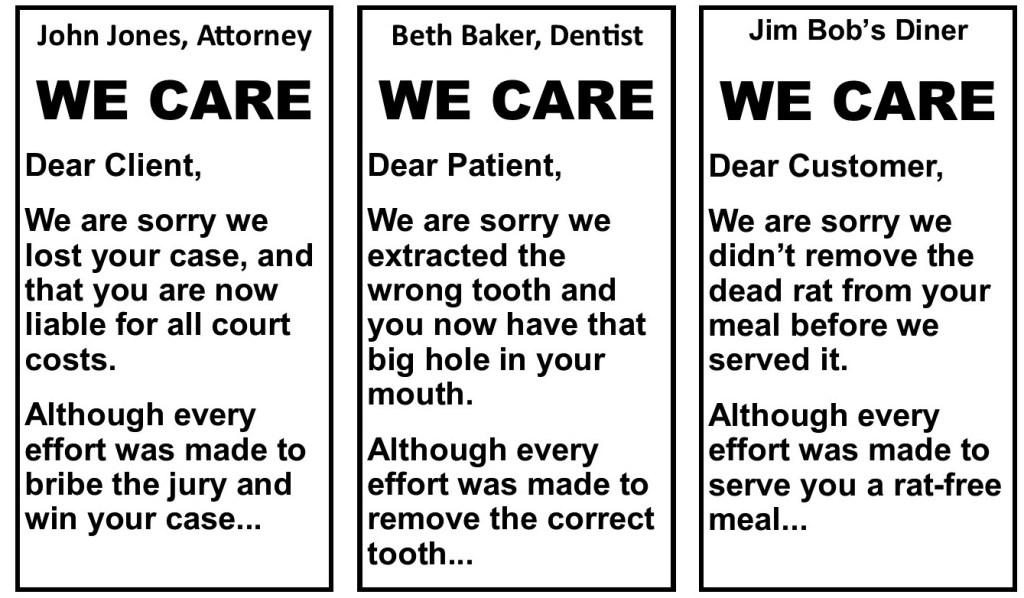
So – what was I referring to in this post’s title, about USPS getting two raises a year?
This:

“The price for first-class Forever stamps increased to 63 cents from 60 cents this week, a 5 percent price jump that stemmed from rising operating expenses and losses for the Postal Service.”
“Officials have said that customers can expect price increases twice a year at least through 2024.”
And it’s not just the cost of Forever stamps that’s increased:
“The new rates also include increases in the prices of one-ounce metered mail, to 60 cents from 57 cents, and domestic postcards, to 48 cents from 44 cents. Sending a one-ounce letter overseas is now $1.45, up from $1.40.”
And what do we get, in exchange for these increased rates?
More of this:

And this:

And this:

The New York Times article went on to say,
“‘As operating expenses continue to rise, these price adjustments provide the Postal Service with much needed revenue to achieve the financial stability sought by its Delivering for America 10-year plan,’ the Postal Service said, referring to its plan to become ‘self-sustaining and high performing.’
“The agency said in 2021 that it projected $160 billion in losses over the next 10 years that it hoped to mitigate.”
Three notes:
First: I’m no expert, but I’m pretty sure “$160 billion in losses over the next 10 years” is not a good business model.
Second: Regarding the second paragraph and that USPS “hoped to mitigate…’’

Third: Regarding that “Delivering for America 10-year plan…”
I’ve never heard of it.
Have you?
Apparently USPS published the Delivering for America plan – all 60 pages of it –on March 23, 2021:

Here’s the front cover:

And on page 58, a message from everyone’s favorite millionaire/Trump crony, Postmaster General Louis DeJoy:

Here’s a recent USPS-related headline:

“A Minnesota congresswoman wants to know what’s causing days-long delays in mail delivery in the Twin Cities’ southern suburbs.
“Democratic U.S. Rep. Angie Craig sent U.S. Postmaster General Louis DeJoy a letter on Friday saying she was frustrated with reports that her constituents regularly go up to four days without mail, with some saying they haven’t gotten any mail since December 16, the St. Paul Pioneer Press reported.

Let’s see…
The Delivering for America plan was announced on March 23, 2021, coming up on two years ago. In his statement, DeJoy talked about “within three years” and “95 percent” mail delivery “on time.”
Yet some Minnesotans were regularly going “up to four days without mail.”
Maybe according to Louis DeJoy, four days without mail is the new “95 percent on time”?
I confess I did not read everything – or anything – between the Delivering for America front cover and Louie’s message, but I did open option #2, what USPS calls its “Plan at a Glance PDF.”
And in both documents I couldn’t help but notice the words “service excellence.”

It appears that it’s just now occurring to USPS that “service excellence” is something they ought to consider including in their goals.
Especially since USPS:
And oh, by the way:
“‘The Postal Service expects that, in each subsequent year, it will implement price changes for all Market Dominant classes in January and July of such year,’ the Postal Regulatory Commission said in a report about rate schedules. It was not clear how much they would go up each year.”
There you go: For the foreseeable future, USPS gets two raises a year.
Whether USPS is providing “service excellence…”
Or more of this:

And in the meantime, my husband and I have no choice but to wait for USPS to deliver our tax document.
To wait and watch for USPS…

And wonder if…

Or will out taxes be…

Publication Dates: June and July 2020
Review, short version: All skunks, all the time.
Review, long version:
I read two books back-to-back and they were so awful, I decided to kill two birds with one stone, or in this case, trash two books with one review.
The books are The Lies That Bind by Emily Griffin and Things You Save in a Fire by Katherine Center.
Griffin’s lead character is Cecily Gardner, 28, and the setting is New York in 2001.

This list isn’t the bare bones of the story – it is the story.
Now for Things You Save in a Fire.
Center’s lead character is Cassie Hanwell, 26. The setting is a mythical town near Boston.

Yup, that’s it.
Here’s the category I’d give to these two books:

You know how, on Amazon, books are categorized as Biography or Young Adult or Women’s Contemporary Fiction and so on? Here’s my category:
“Millennial Neurotic Lead Character’s Life is All Screwed Up Until She meets Mr. Right and Then All Her Issues are Resolved in the Last 20 Pages.”
Although come to think of it, that really isn’t a new category after all…



If you’re a fan of audiobooks, you have lots of company.
According to statista.com, around 45 percent of adults listen to audiobooks.
And it’s no surprise – in part because it’s so easy. There are many ways to listen, says this article…

“Most audiobooks are available to listen to on your smartphone, tablet, smartwatch and desktop or laptop – how to listen to audiobooks depends mostly on which device you have and which apps can be downloaded on it. Both Apple and Android devices will allow you to access virtually every audiobook app.”

And if your choice is audiobooks on CD with a CD player (pictured) – that works, too.
You can listen to audiobooks at home, in your car, on the bus, on the subway, on an airplane, while walking or running or doing almost anything anywhere, with or without headphones.
Just be careful not to drop your device in what many consider their favorite reading room…

But wherever and however you listen to audiobooks, did you know that the voice you’re hearing is called an “audiobook narrator”?
And it’s quite possible that you’ve heard the voice of this audiobook narrator:

This is Julia Whelan, and it’s her – and her five careers – I’m referring to in the title of this post.
According to this article in my Sunday Union-Tribune:

“Julia Whelan is a bestselling author, a screenwriter, an actor, a Grammy-nominated audiobook director, and an award-winning audiobook narrator.”
Yup. Julia has five careers.
Hardly seems fair, does it?
What’s that? You think you’re hearing envy in my voice?
Envy? Moi? Because Julia Whelan has fabulous careers she loves, she’s won tons of awards, is very likely rich, and was profiled not only in the San Diego Union-Tribune, but in The New York Times?

Envy? No.
OK, maybe. A little.
But – curiosity, too. I started doing some research, and now…
Let’s unpack Julia’s many hats.
Julia, a bestselling author:

Kirkus Reviews, considered a “credible, industry-renowned resource among authors, publishers, the media, libraries, booksellers, and readers,” said this about My Oxford Year:
“Whelan has created a beautiful, romantic story that focuses on big ideas – love, death, poetry, and what really matters in the end.”
And this about Thank You for Listening:
“A compulsively readable story about self-discovery with plenty of laughs and spice along the way.”
I hadn’t heard of her books, and I’m going to give Thank You for Listening a try.
Julia, a screenwriter:
I found many online references for Julia as a “screenwriter” but was unable to find any references to screenplays she’s written, on her website or elsewhere.

However, I did find a reference to her being “tapped to work on the screenplay for My Oxford Year,” so we’ll see if the movie happens.
I’ll consider that career a “maybe.”
Julia, an actor:
This was much easier – her website says:

“Whelan’s breakout role came at the ripe old age of fourteen when she was cast as Grace Manning on ABC’s critically acclaimed Once And Again.”
“Among her numerous guest-star roles, she has appeared on NCIS:LA, Castle, and an ABC pilot, Warriors. On a special episode of The Closer, she received accolades for her portrayal of a bipolar, homeless rape victim. She has also had leads in the TV movies Fifteen and Pregnant, The Secret Life of Zoey, and The Confession…Most recently, she was the leading actor in two short films, Avalon and Ghosts of New York.”
Julia’s bio on IMDb confirms this, from her 60 episodes of Once and Again (1999-2002) to her last TV appearance on NCIS in 2017.
Julia, a Grammy-nominated audiobook director:
What the heck is an “audiobook director”? Doesn’t an audiobook narrator just sit in front of a microphone and read? Who needs a director?
According to this article:

“As the [audiobook] director, you’re there for the technical and the artistic. For the technical, you’re making sure that nothing is missed, words are pronounced correctly, you’re running on schedule, stumbles are re-recorded, and diction is clear. With the artistic, you’re there as a listener and responding as a producer/editor, engaging with the text and making sure the interpretation is coming across clearly. It’s a balancing act.”
Who knew? Not me, until now.
As for the “Grammy-nominated” audiobook director language, again – I found many online references using that language, but when I searched for Julia on Grammy.com I got…

Surely if she’d been nominated, she would have been somewhere on Grammy.com?
Maybe the “Grammy-nominated” is one of those phrases that one person used online, and someone else repeated it online, then 10 other people repeated it…
I’ll consider this another “maybe.”
Now let’s get to the big-ticket item in Julia’s career:

Julia, an award-winning audiobook narrator:
Again, from her website:
“Having narrated over 400 audiobooks in all genres, Whelan is, by industry standards, considered one of the top narrators recording today. She’s repeatedly featured on Audiofile Magazine’s annual Best-Of Lists. She was named Audible’s Narrator of the Year in 2014…She has acquired multiple Audies and SOVAS (Society of Voice Arts) Awards, including for the performance of her own novel, My Oxford Year. She has won dozens of Earphone Awards, the Audie Award for Best Female Narrator of 2019, and was presented with Audiofile Magazine’s Lifetime Achievement Golden Voice Award in 2020.”

I was able to confirm some of these awards, but not all of them.
Perhaps Julia…or her webmaster…or someone…did just a bit of resume embellishment…you know – like what’s his name…
But “award-winning” – yes.
I can also confirm that Julia has narrated many, many books.
This article from 2020:

Lists some of the audiobooks Julia has narrated:
“Newly honored Golden Voice narrator Julia Whelan is known to listeners of all ages for her performances in a broad range of subjects. For listeners of young adult audiobooks, Julia is a favorite for Girl in Pieces by Kathleen Glasgow, I’ll Give You the Sun by Jandy Nelson, and Plus One by Elizabeth Fama. Lovers of fantasy might know her for Nora Roberts’s Chronicle of One trilogy, or Laurie Forest’s The Black Witch Chronicles.

“Julia also stands out for her recordings of literary fiction like Flights by Olga Tokarczuk and My Year of Rest and Relaxation by Ottessa Moshfegh. And let’s pile on the wonderful romance titles Julia has brought to listeners – more Nora Roberts, and Beach Read by Emily Henry. My personal favorite in recent months is Julia’s wonderful performance of The Giver of Stars by Jojo Moyes.”
And for those who like visuals – that would be me – here’s an image of some of audiobooks Julia has recorded:

Note the “344 more” in the lower-right corner.
Now let’s go back to that first quote about Julia, this time with my edits in bold:
“Julia Whelan is a bestselling author, a screenwriter (maybe), an actor, a Grammy-nominated (maybe) audiobook director and an award-winning audiobook narrator.”
But even if Julia has only three (confirmed by me) careers – author, actor and narrator – that still means she’s darn busy pursuing her work of choice.
So busy that, when the author of the Union-Tribune article asked her:
Q: Do you have time to read for pleasure?
Julia’s response was:
A: Ha, no. My list is massive and I don’t see getting to it until retirement.
And with that, I found my envy fading.
Because even though Julia Whelan has fabulous careers she loves, has won tons of awards, is very likely rich, and was profiled not only in the San Diego Union-Tribune and The New York Times…
It seems that I have the time to do something that Julia does not:
Listen to audiobooks:

This past Friday’s blog post recounted the story of a 500,000-gallon raw sewage spill in San Diego (where I live), transforming “America’s Finest City” into “America’s Foulest City.”
The raw sewage spill happened on January 16. It geyesered up out of manholes, fouling streets and homes and businesses and San Diego Bay with…

Raw sewage.
According to the local news stories…
“…a sensor malfunction…caused the wastewater pumps to shut down.”
The wastewater pumps were the machines at a pump station (in this case, a facility called “Pump Station 2”) which sends raw sewage to a wastewater treatment plant.
Neither the San Diego County Department of Environmental Health and Quality (DEHQ) nor any other acronymed entity has been able to determine the cause of the “sensor malfunction.”
Regarding that 500,000-gallon spill, according to this article:

“On January 18 city spokesperson Arian Collins said that number could increase as they investigate further. ‘By the end of the week, City crews will have a final estimate of the number of gallons spilled.’”
I kept checking online, and finally – on January 23 – came this story:

That estimate of 500,000 gallons of raw sewage had grown to 11.2 million gallons.
That’s 22+ times higher
than the City’s original estimate.
The NBC 7 article reiterated:
“County officials originally said last week’s sewage spill, which impacted at least 18 sites around the city of San Diego, involved a staggering 500,000 gallons of effluent.”
If 500,000 gallons were considered “staggering,” I wonder how they’d describe 11.2 million gallons?
This City of San Diego spokesperson wasn’t saying:
“On January 23, though, Tom Rosales, an assistant director with the water recovery branch of the city’s public utilities department, said the spill was, in fact, estimated to be in the neighborhood of 11.2 million gallons of sewage.”
Rosales didn’t describe 11.2 million gallons “staggering.”
He didn’t describe it as any of these, either:

*Though I daresay 11.2 million gallons of raw sewage flowing through the streets would have been – at the very least – “breathtaking.”
So perhaps Rosales isn’t big on adjectives.
But he is a master at using many words…
To say nothing.
For instance, regarding the cause of the Pump Station 2 “sensor malfunction”:

“‘…it’s a combination of just an off-chance failure with the sensor and the logic of the program, logic that operates the pumping system,’ Rosales said, adding, ‘we haven’t completed our forensics evaluation yet. That’s still being done and expect at some point to get an actual report from our staff to explain in more detail exactly why it failed.”
What our pal Rosales meant is:
“By the time we figure this out, we’re hoping everyone’s forgotten about our screw-up.”
Apparently the article’s author – or someone – asked Rosales what this mess was going to cost San Diego taxpayers. He said:

“‘They have a kind of a starting point, if you will, but then they have mitigating factors along the way where they consider your record and your response and so forth, and, ultimately, it is a negotiated process that will bring it down to, I’d say, kind of very high level to something more manageable,’ Rosales said, regarding penalties from the state, adding ‘again, that’s a long process. So I don’t want to guess what that might be, but we’ve been through it a couple of times, and we’ll go through it again with them.’”
What our pal Rosales meant is:
“The taxpayers are screwed.”
And as for Rosales’ “we’ve been through it a couple of times,” yes – San Diego has.
Including this sewage spill in 2016, a cost to taxpayers of $2.5 million:

San Diego taxpayers didn’t cause the sensors to fail.
But they’re on the hook for the fine.
Correction: Fines, plural.
And how about cleaning up the mess in raw sewage recipients’ homes and businesses?
“As far as cleanup costs go, Rosales said that homeowners and businesses have the option, if they are insured, to take care of the cleanup that way, or the city will provide cleanup via a firm it works with for mitigation. Until claims are made, a cost estimate for clean-up can’t yet be provided.”
No “cost estimate for clean-up” as yet, but some of that, too, will be paid for with San Diego residents’…

So, let’s say I submit a claim to my homeowner’s insurance, as Rosales suggested. But if the city doesn’t settle up with my insurance company, then my rates will probably go up.
Or, perhaps the insurance companies will simply advise as follows:
“The raw sewage flooded the streets, therefore it was a flood. Your policy does not include flood insurance, therefore the damages to your home/business are not covered in this event.”
Rosales also referenced “the city” providing cleanup “via a firm it works with for mitigation,” but offered no contact information for residents or business owners to contact.
It took me a dozen phone calls to track down a San Diego city employee with answers, and lucky me – I wasn’t a panicked homeowner standing on a floor that had been bathed in raw sewage.

Here’s the consoling thought in this whole smelly, filthy, completely-avoidable-11.5-million-gallon-raw-sewage-mess:
“Rosales does not expect a repeat of the massive spill anytime soon.”
Gosh, I feel so much better because Rosales “does not expect” another massive raw sewage spill “anytime soon”!
But then…he didn’t “expect” the January 16 spill either, did he?
Here’s Rosales’ final comment:
“‘We don’t ever want to spill,’ Rosales said. ‘It happened because of some equipment failure, and we don’t expect it will happen again.’”
Wow!
Rosales doesn’t “expect” another equipment failure because…?
Because it happened on January 16 and therefore can never, ever, ever happen again?
But – how about that 2016 example I cited above, with the $2.5 million fine?
How about this example, from 2011:
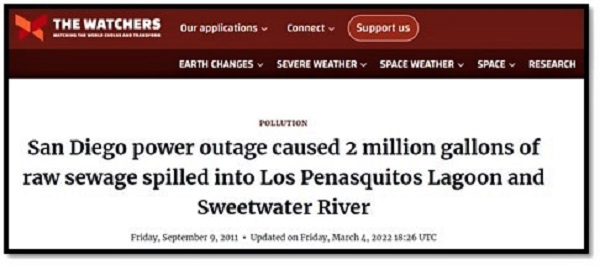
And this $680,278 fine, for a 2007 raw sewage spill:

San Diego taxpayers, here’s that consoling thought:
Tom Rosales, assistant director with the water recovery branch of the city’s public utilities department…
Has a crystal ball and can predict the future!


The damage to California from the rain that began on December 16 and continued for three weeks has been extensively written about:

And exhaustively photographed:

According to the Washington Post article, we were hit with:
“Nine separate atmospheric rivers – narrow plumes of deep moisture generated by ocean storms.”

And that, said the article, brought:
“Thirty-two trillion gallons of water.”
How do we even imagine that much water?
Let’s try this:
This is Lake Tahoe:

Lake Tahoe straddles the state line between California and Nevada. According to various websites, Lake Tahoe is 22 miles long, 12 miles wide, and the surface area covers 191 square miles.
Lake Tahoe contains an average of 37 trillion gallons of water.
California got almost a Lake Tahoe of rainwater.
But where I live, apparently some in San Diego – also known as “America’s Finest City” – decided that we hadn’t gotten quite enough liquid.
So shortly after the rain stopped, the city added this to the mix:

According to the article:
“Sewage flowed out of manholes into streets and storm drains in downtown San Diego and the Midway District…”
Specifically, into 18 different areas in downtown San Diego and the Midway District.
Let’s imagine it.
It’s a Monday, a little past 3pm. You’ve taken some personal time off from work for a dentist appointment. You parked on the street because the dentist’s parking lot was full. After your appointment you head for the street, and this is what greets you:

Thousands of gallons of raw sewage. Your car is sitting in it, up to its hubcaps.
And how do you know it’s raw sewage?
The smell.
You’re going to need a lot more of these:

Here’s an image from a video of what the raw sewage looked like, practically geyser-ing out of a manhole:

The person who shot the video described what she saw:
“It looked like a Loch Ness monster coming out of the ground…a two-foot-tall gurgling brown-black mountain of sewage.”
Where did this smelly, filthy nightmare come from?
It came from San Diego’s Pump Station 2.
According to constructionjournal.com:
“Pump Stations 1 (PS-1) and 2 (PS-2) are the largest and most critical pump stations within the City of San Diego’s wastewater collection system.”
Here’s Pump Station 2:

The station was constructed by Swift Lee Office (SLO), a “full-service architecture firm.” On their website they describe Pump Station 2 (PS-2) as follows:

“PS-2 is a critical pump station; nearly 80% of the City’s sewage flows into PS-2 and ultimately into the Point Loma Wastewater Treatment Plant. Thus, it is crucial that PS-2 remain operational throughout an emergency situation.”
Well, PS-2 sure didn’t “remain operational” through this “emergency situation.”
What went wrong at Pump Station 2 and caused the 500,000-gallon raw sewage spill?
According to the Union-Tribune:
“…a sensor malfunction…caused the wastewater pumps to shut down.”
A “sensor malfunction.”
Considering the fact that Swift Lee Office built Pump Station 2, and San Diego paid plenty for Swift Lee Office to do so, I’d like to introduce both to a concept that isn’t new, but apparently unknown to the people involved.
The concept is…

Backup systems.
You know – to back up data, like the Cloud. On airplanes they’re called “redundant systems.” In homes and hospitals they’re called “backup generators.” An extra pair of eyeglasses is a backup system. So are extra rolls of toilet paper. And a useable spare tire in your trunk.

In my purse it’s called, “Having two pens instead of one.”
Pretty simple concept – yes?
Apparently not.
Since the builders and operators of PS-2 knew it was a “critical pump station,” where was the backup in case of a “sensor malfunction”?
Instead of a backup system kicking in at PS-2, raw sewage flowed until the pumps “were manually restarted.”
“Manually restarted” 27 minutes later.
The story made national headlines:

The raw sewage closed beaches:

There were lots of these along miles of our shorelines:

And, says this article:

The people who live in Park Place luxury apartments…

…and multiple other locations were not happy to be sharing their space with…

Raw sewage.
For those folks, the Union-Tribune article offered this consolation – a number to call for assistance:
“Residential and commercial customers who were impacted by the sewage spill were told to call city officials at (619) 515-3525.”
Curious, I called the number.
This is what I heard:

You have reached San Diego’s Get It Done helpline.
If you’re calling about parking issues, press 1.
If you’re calling about illegal dumping, press 2.
If you’re calling about graffiti, press 3.
If your home or business has been impacted by the recent raw sewage spill, hold your nose until further notice.
Goodbye.
OK – I made that up. But I did call the number, and I’ll talk about that in Monday’s Part II.
What caused the “sensor malfunction” at PS-2?
I thought I’d found the answer in the above NBC 7 article, which said:
“A power outage caused the city of San Diego pump station to lose function, a spokesperson for the San Diego County Department of Environmental Health and Quality (DEHQ) said.”
But – strangely, I thought – later the same article said:
“An investigation is underway to determine what caused the sensor malfunction, but on Wednesday afternoon they were able to say it was not due to a power failure.”
So – cause unknown.
The cause of the sensor malfunction is unknown, but the cause of the 27-minute flood of raw sewage seems pretty clear:
No sensor backup system at Pump Station 2:

My takeaway:
As I was researching this story I found an article from 2011 about another raw sewage spill in San Diego, which this time was due to a power outage.
When once again, “America’s Finest City” became “America’s Foulest City.”
I think this succinct – if pungent – headline sums up the situation better than I ever could:

Update: If you think 500,000 gallons of raw sewage is a lot…check out my update on Monday, January 30.

I believe my husband makes the best spinach dip in the world.
It’s spinach-y, crunchy, slightly chewy, slightly sweet and nutty, and so darned good I can (and do) make a meal out of it.
And to answer the question in the post title …
Yes, he does put those ugly things in his spinach dip.
But – those things don’t look like those things when he puts them in the dip.
Before that, they look like this:

Described as a “grass-like sedge,” my researched introduced me to Eleocharis dulcis, native to Asia, tropical Africa, and Oceania.
How does this “grass-like” foreign plant fit into my hub’s spinach dip?
For that, let’s dig a bit deeper.
When we do, we see the whole plant:

Those dark, round things at the bottom of the plant are called “corms”:
“A corm, bulbo-tuber, or bulbotuber is a short, vertical, swollen underground plant stem that serves as a storage organ that some plants use to survive winter or other adverse conditions such as summer drought and heat.”
Corms: That’s what we’re after.
Harvest the plant, including the roots, and voila – corms:

OK, we have the corms in hand – now what?
We rename them…but what?
Here are some clues:
The corms are classified as vegetables; specifically, “aquatic tuber vegetables.”
They’re edible and, according to various articles, they’re good for you:
So what the heck is this dark, ugly, bulbous-looking, healthy-for-you corm-thing?

It’s a beautiful thing.
It’s this:

Water chestnuts!
Just peel off the dark ugly…

And eat them raw, boiled, grilled, fried, roasted, candied, grated, pickled, or straight from the can.
You can add them to all sorts of dishes; when I googled “water chestnut recipes” I got 16 million+ results.
So, to correct a commonly held (including me) misconception:
Water chestnuts are not nuts.
How did they get that name?
This article had as reasonable an explanation as any:

“The name ‘water chestnut’ comes from the fact that it resembles a chestnut in shape and coloring – papery brown skin over white flesh.”
And there is a resemblance:

I couldn’t discover who gave water chestnuts that America moniker, but I did learn that most water chestnuts aren’t American grown:

“…water chestnuts are primarily cultivated in China and imported to the United States and other countries. Rarely have attempts been made to cultivate in the U.S.; however, it has been tried in Florida, California, and Hawaii with limited commercial success.”
I also learned that we in the U.S. love our water chestnuts: We’re the largest importer of water chestnuts in the world, with 570.06M metric tons in 2021, valued at $759 million.
I suspect that many people – including me – were introduced to water chestnuts this way:

Asian food.
How did water chestnuts transition from Chinese food to 16 million+ recipes including bacon-wrapped water chestnuts, water chestnut cake, water chestnut soup, candied water chestnuts, water chestnut salad, and my beloved’s beloved spinach dip?
I don’t know.
But let’s have some spinach dip while we ponder this:


The judge who made the above statement is my pick for Judge of the Year. Here’s why…

New Jersey attorney Alina Habba (pictured) has several videos posted on the website of her law firm, Habba Madaio & Associates, LLP.
This isn’t unusual – attorneys are interviewed on TV and if they like how they look and sound, the video gets uploaded for all to see and admire.
Two of the videos from March 2022 have captions that reference Donald Trump “suing Hilary Clinton” and others over “Russia Hoax,” also known as the “false narrative about Russia collusion”:

Habba, described as “President Trump’s personal counsel,” has plenty to say in both videos about the righteousness of Trump’s lawsuit.
Interestingly, the Habba Madaio website offers no follow-up videos about the outcome of that lawsuit, which was widely covered in recent articles like this:

“In a scathing ruling, a federal judge in Florida on Thursday ordered Donald J. Trump and one of his lawyers together to pay nearly a million dollars in sanctions for filing a frivolous lawsuit against nearly three dozen of Mr. Trump’s perceived political enemies, including Hillary Clinton and the former F.B.I. director James B. Comey.”
Wow! “Nearly a million dollars in sanctions” against Trump and his lawyer?

For a “frivolous lawsuit”?

A judge – finally – is telling it like it is.
And it gets better. Here are quotes from this Washington Post story:

From the judge’s 46-page decision:
Trump is a “prolific and sophisticated litigant who is repeatedly using the courts to seek revenge on political adversaries…”

“He is the mastermind of strategic abuse of the judicial process, and he cannot be seen as a litigant blindly following the advice of a lawyer. He knew full well the impact of his actions. As such, I find that sanctions should be imposed upon Mr. Trump and his lead counsel, Ms. Habba.”
[The judge] described the legal complaint as “a hodgepodge of disconnected, often immaterial events, followed by an implausible conclusion.”
“The Plaintiff consistently misrepresented and cherry-picked portions of public reports and filings to support a false factual narrative,” Thursday’s judgment found. “It happened too often to be accidental; its purpose was political, not legal.”

Who is this judge, who finally – finally – states just exactly what Trump is, and the damage Trump causes, including diverting “resources from those who have suffered actual legal harm”?
He is U.S. District Judge Donald M. Middlebrooks, Southern District of Florida (pictured). He was confirmed by the U.S. Senate in 1997, so this lawsuit wasn’t his first rodeo.
And – I’m thrilled to say – the judge does not pull his punches:

“Here, we are confronted with a lawsuit that should never have been filed, which was completely frivolous, both factually and legally, and which was brought in bad faith for an improper purpose,” Middlebrooks wrote, decrying what he called “abusive litigation tactics.”
In a blistering judgment, he said the case was “intended for a political purpose” and showed a “continuing pattern of misuse of the courts by Mr. Trump and his lawyers,” undermining the rule of law and diverting resources. “No reasonable lawyer would have filed it,” he added.
Now you see why Judge Middlebrooks is my nominee for Judge of the Year.
Let’s revisit that last sentence in the last quote:
“No reasonable lawyer.”
The judge is referring, of course, to Trump’s “personal counsel,” Alina Habba.
Trump, Habba, and the Habba Madaio & Associates law firm are jointly liable for $937,989.39, the court found.
I have every expectation that Trump will tell Habba that since she lost the case, then she is liable for the entire fine.
As for paying Habba for her services, Trump’s failure to pay his attorneys is widely known:

And as for Trump – is he appealing?
Not very…


Release date: March 2022.
Category: Comedy; Action & Adventure.
Review, short version: All thumbs down.
Review, long version:
I recently watched all 111 torturous minutes of The Lost City, and afterwards my only thought was:
“I wish I hadn’t wasted 111 minutes of my life watching The Lost City.”
Which let to this question:
“Why did I want to see The Lost City?”
Answer: Because Sandra Bullock was in it.
Am I a fan of Sandra Bullock?
I thought I was.

Then I started thinking about the movies I’d seen her in, and realized that no – I wasn’t a fan. I thought she was good in The Blind Side (2009), but I disliked her – or rather, the characters she chose to play – in The Proposal (2009), Miss Congeniality (2000), Speed (1994), and some of her other movies.
So my conclusion is, I like Sandra Bullock but not most of her movies.
What do I like about her?

I admire her adoption of two children (pictured, in 2019) as a single woman. At age 58 she’s the parent of a 12-year-old son and a 10-year-old daughter, when many women her age are celebrating being empty nesters and looking forward to grandchildren.
I also admire Bullock for her staying power: Her first film was in 1987 and she’s still going strong, when so many other aging actresses have been discarded by Hollywood.
And I’ll even admit to admiring Bullock’s credible Lost City portrayal of a romance with a male character who is younger – significantly younger – than Bullock.
He’s played by Channing Tatum, 42. I always get him and this other actor mixed up – do you know who is who?

Yes, what I just did was stereotyping.
Like what happens in this movie.
Read on.
Here’s some of what I disliked about The Lost City:
Bullock was a producer of this movie, and chose to spend a large part of it dressed in an outfit that displayed her chest. One giant step backwards for womankind:

I’m fine with showing skin, I’m fine with nudity, but this was purely…
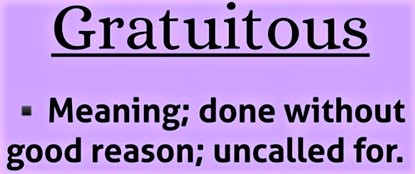
And why is she the one tied to a chair, instead of him? When will we discard the helpless-woman-needing-to-be-rescued-by-a-big-strong-man stereotyping?

In The Lost City Bullock plays a romance novel writer who has an adventure, a direct rip-off of Romancing the Stone (1984). I saw other rip-offs, including from Raiders of the Lost Ark (1981) and The African Queen (1951). The Lost City was…
Derivative: Having parts that originate from another source; made up of or marked by derived elements.
I dislike derivative. Come up with something original, will you?
The Lost City is supposed to be a comedy, but I don’t recall laughing. It’s supposed to have action and adventure, but neither engaged my interest enough to care what happened to Bullock and Tatum. Tatum’s character was mostly dopey, and Bullock’s character was tense, twitchy and mostly helpless. As a New York Times review put it,
“But while Loretta [Bullock] isn’t as helpless as she might have been back in the old studio days, this is still about a man rescuing a woman whose eye makeup never runs even when she does.”
Speaking of reviews, I think it’s fair to say there were both good and bad:
Loved It
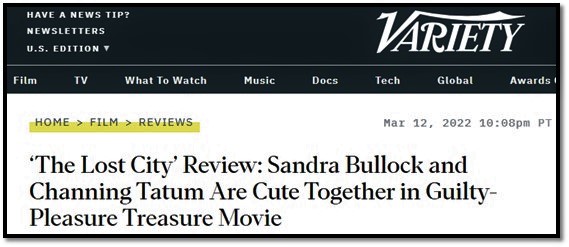

Hated It


To be fair, I’ll acknowledge that there were many more good reviews than bad.
And the same on Amazon:

I’d say 35,000+ reviews, and 78 percent of those people giving the movie four and five stars, is impressive. Two examples:
Loved It

“What a pleasure! This movie is artfully done, as it’s hard to keep narrative cohesion and thematic consistency weaving together true heartfelt romance, side-splitting comedy, and action parody. Every character of the movie was so well done that you surfed between the different plot lines without resistance, wanting no scene to end. The cutest, funniest fun flick I’ve seen in years.”
Hated It
“The script sucked, the acting was so contrived, the directorial decisions… laughable, the cast…a farce. Honestly, the question is what DIDN’T suck about this movie? Mother Nature. The scenes outside (if they were really outdoors) immersed in the splendor of the jungle…that was the ONLY winning point.”
In mid-2022 there was a slew of headlines – all of which I missed – about Bullock’s future career plans:

According to the Today Show and other articles, after starring in 50 films, Bullock said,
“‘I don’t want to be beholden to anyone’s schedule other than my own. I’m so burnt out. I’m so tired, and I’m so not capable of making healthy, smart decisions, and I know it.’”
And:
“‘I take my job very seriously when I’m at work,’ the actor said, adding that is it a ‘24/7’ job. ‘And I just want to be 24/7 with my babies and my family. That’s where I’m gonna be for a while.’”
So even if I don’t like most of Bullock’s movies, this is yet another reason for me to like Sandra Bullock:
She’s clear on her…

I’m a great fan of many things British.
And because I’m a fan, I can feel the Brits’ pain about a story from last week.

The story is about Great Britain’s failed spacecraft mission.
And the many British taxpayer dollars – or pounds and pence, in this case – going down in flames.
The image at the top is my interpretation of what this debacle may have looked like.
Failed spacecraft and spacecraft missions happen in the U.S. all the time, so I can empathize.
The failed mission happened January 9:

“The rocket was set to make history, carrying satellites on what would be the first-ever orbital launch from the U.K. on Monday night. But Virgin Orbit says its LauncherOne rocket ‘experienced an anomaly’ just before it could deliver its payload, and the craft was lost.”
Let’s unpack this.
Virgin Orbit is owned by Richard Branson, a member of what I call the “Billionaire Boys Space Club”:

“LauncherOne” is a rocket that was affixed to the underside of a modified 747:

That modified 747 is named “Cosmic Girl”:

What asshole came up with that name?
Cosmic Girl and LauncherOne were launched from Spaceport Cornwall in western England:

The idea was that the LauncherOne rocket would separate from the 747. The rocket would then take off into outer space, at some point separate from something else, then release its “payload,” in this case nine satellites:

LauncherOne did separate from the 747, but then experienced the aforementioned “anomaly”:

Meaning: “We don’t bloody well know what the hell happened.”
After the failure anomaly, in a statement on the Virgin Orbit website, Melissa Thorpe, head of Spaceport Cornwall said,
“Though the mission did not achieve its final orbit, by reaching space and achieving numerous significant first-time achievements, it represents an important step forward…and demonstrated that space launch is achievable from UK soil.”
Thorpe continued,
“Yes, space is hard, but we are only just getting started.”

You want to know what’s “hard”?
Getting my venti peppermint mocha Frappuccino Blended beverage correctly made at Starbucks is “hard.”
“Space” is just stupid.
And expensive.
How expensive for Britain’s taxpayers?
According to this article:

“Virgin Orbit usually charges around $12 million for a launch, although the fees can vary.”
Then there was the cost to build Spaceport Cornwall which, according to that same Melissa Thorpe in this pre-failure article:

“Thorpe, the CEO of Spaceport Cornwall, said it cost less than £20 million ($24 million) to convert the tiny Newquay airport into a space-ready site.”
What does “less than” mean?
Maybe instead of £20 million it cost £19.9 million?
Then there was the cost of hosting all the media and others who wanted to watch the launch, including these folks:

This article…

…said:
“According to Cornwall Council’s procurement website, it…cost a grand old sum of £8,000 [$9,700] to put it all together.”
And since we’re doing the math, I’d be remiss if I didn’t include the not one – but two U.S. satellites, paid for by U.S. taxpayers, that were onboard LauncherOne:

“From the US, the Navy Research Laboratory had delivered two Coordinated Ionospheric Reconstruction CubeSat Experiment (CIRCE) satellites to the UK.”
Try as I might, I couldn’t find a cost for a CIRCE satellite, but I did find an article that said this:
“If you have at least $290 million in your bank account, that money can go into making a satellite that can track and monitor hurricanes. Add about $100 million dollars more if you want a satellite that carries a missile-warning device.”
So let’s guesstimate $350 million for each of the two CIRCE satellites.
Since we know that anything that comes out of NASA with a logo like this:

…is mega-expensive (as well as over budget, and past deadline).
In conclusion, here’s my message to the good people of Great Britain:
First: Brits are known for their moderation, so why launch nine more satellites into space when, according to this article:

“2022 has witnessed the maximum number of orbital and sub-orbital launches…According to United Nations Office for Outer Space Affairs (UNOOSA), 8,261 individual satellites are orbiting the Earth now, out of which 4,852 satellites are active.”
There are already more than 8,200 satellites out there.
Good people of Great Britain, did you really need to add nine more satellites to this chaos?
Second: Everyone does some things well. But no one does everything well.
You Brits excel at many things, and here are three of my favorites:
Your royalty – a tradition that’s been in place for most of the past 1,000 years…

Your food with fun names…

And really old stuff? You’ve got that all over the place:

So, good people of Britain, I urge you to pull the plug on your space program now and stick with the many things you do so well.
Just imagine if you did that.
No more aircraft with embarrassing (and sexist) names like “Cosmic Girl.”
No more embarrassing space mission failures announced in every media outlet in the world…

No more embarrassing space mission failures costing you millions of pounds and pence.
As Eliza Doolittle sang in My Fair Lady…
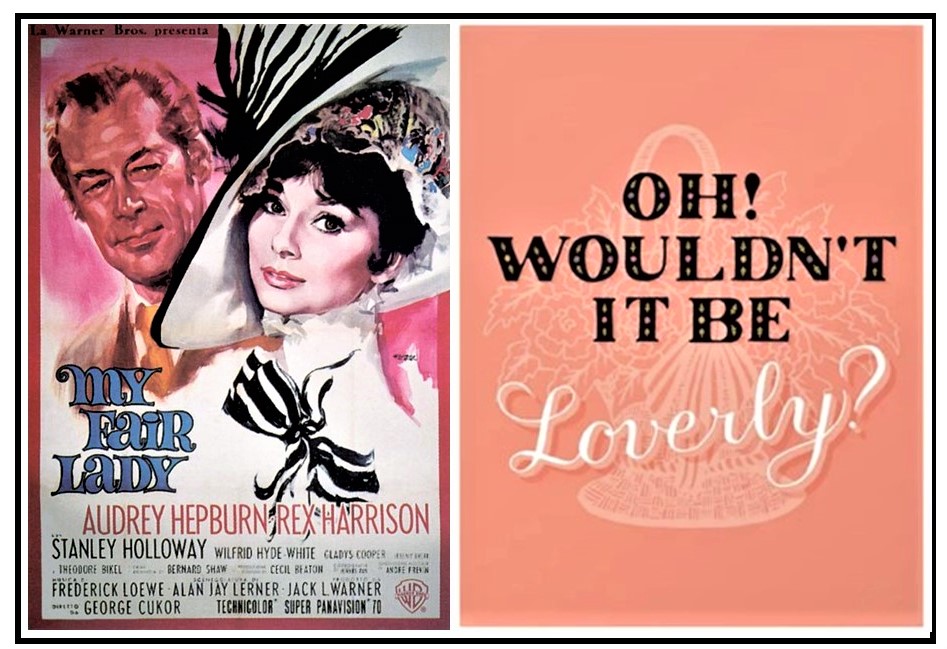

Publication date: June 2022
Category: Women’s Domestic Life Fiction, Family Life Fiction, Contemporary Women Fiction
Review, short version: Four roses for Blake, four skunks for Kat.
Review, long version:
I believe that sometimes novelists deliberately create characters whom you love to hate.
And I know there’s something so satisfying about absolutely loathing a character that…
I almost wallow in it.
It seems to me that one reason authors do this is to keep readers engaged as we move from loathing to liking that character, watching her/him transform from awful to wonderful, thus redeeming themselves.
In The Beach Trap, I’ll theorize that author Ali Brady was going for that awful-to-wonderful transformation in one of her lead female characters.
There are two female lead characters: Blake and Kat.
Blake is a great character, and I immediately felt a connection to her.

The recipient of my four skunks – Kat – is so shallow, so narcissistic, and so completely boring that it was easy to loathe her. She considers herself the center of the universe, and she broadcasts this on Instagram, where she’s a wanna-be influencer.
Does Kat ultimately transition from awful to wonderful?
The Beach Trap premise does have possibilities. When the story opens, Kat and Blake, both 12, happen to be at the same summer camp. They’ve become besties, but that all blows up when they discover that they’re half-sisters – they share the same father. (No spoiler alert needed here – it’s on the book’s back cover.)
The dad is married to Kat’s mother, and in a relationship with Blake’s mother. He impregnated both women at the same time, which is all I need to say about him.
After their heart-breaking discovery at summer camp, Blake writes to Kat but Kat doesn’t respond. The book fast forwards to 2022 and there’s been no two-way communication between them for 15 years.
Until an event that will change both their lives.
Through no fault of her own, Blake has experienced some tough turns in her life. She has no self-confidence, but she’s smart and resilient and kind. And hardworking. I mention that specifically because…
Kat is exactly what her parents raised her to be: useless. Her only goal in life is to be a successful Instagram influencer, I suppose like Kylie Jenner, whose name I know not because I follow her, but because of this article:

For comparison purposes, Jenner: 377 million followers; Kat: 75,000.

So Kat spends her every waking moment focused on finding “Gram-worthy” (her word) circumstances in which she can position herself as the star of “Grammable moments” (her words), in the hopes of attracting more “people who see me, who love me, who look to me for advice,” (her words). More followers will help Kat attract companies who will pay her a lot of money to shill their products, which in her pea brain equals success.
Here are a few more examples of Kat’s words:
“Every fourth picture is of me, since I am my brand.”

“The rest of my grid is full of artful shots of products of beautiful things I eat, drink, and discover throughout my day.”
“I look cute.”
“A yacht is where I belong.”
“My motto is: Life is a fashion show.”
And when Kat’s – and Blake’s – father dies, Kat is ecstatic because:
“The post about my dad dying had more than triple the engagement of my average fashion posts!”
Kat does go through a sort-of transition, but it took until page 285 out of 356 pages for her to even begin to demonstrate that that she might transform into something beyond shallow, narcissistic, and boring.
If you think you can stomach spending time reading Kat’s drivel, then go for it.
Or, skip The Beach Trap.
And consider the time I’ve just given back as a belated holiday gift, from me to you:

This is the sequel (and conclusion) to Part I: Some Words On Words from Wednesday, January 11.

“You know what those are?” my aggravated husband said, pointing to the TV screen.
We were watching the evening news, and a reporter had asked a politician a question.
“What are they, honey?” I said.
“Those are side words” he said, with something of a sneer.
He was referring to words that often start someone’s – often a politician’s – answer (or non-answer) to a question. They’re meaningless and, in some cases, stalling tactics as in, “(Side words side words while I come up with a non-answer) …and it’s clear that the governor hasn’t…”
Here’s how side words work:

News reporter: Mr. Mayor, what is your city doing with regards to your homeless situation?
Mayor: Look. I mean, you know – I’m glad you asked that. And it’s clear that the governor hasn’t…”
The “Look, I mean, you know – I’m glad you asked that” are side words.
You hear them in various combinations all the time.
Here are more side words we also hear a lot:
“That’s a good question” and, “That’s a great question” and, “That’s an excellent question.”
Again, side word stall tactics.
I wish the interviewer would respond, “I know it’s a good question. That’s why I asked it, you moron.”
Another side word I’m hearing more and more lately is “Right?”
News reporter: Mr. Mayor, the governor stated that your city, specifically, isn’t following any of his team’s recommended policies and procedures with regards to your city’s homeless situation.

Mayor: He said that, right?!!
The mayor is agreeing, probably with a wink and a self-satisfied smirk, that yes, the governor did say that – and wasn’t that stupid?
That “right?!!” is also a hook to get the reporter on the mayor’s side.
It turns out that there’s actually another name for side words (though my hub was on exactly the right track). They’re called:

According to this article:

“Filler words are words such as ‘um,’ ‘ah,’ ‘hmm,’ ‘like,’ ‘you know,’ and ‘alright’ that are used to give the speaker time to think, express uncertainty or make something awkward feel less awkward, or as a verbal tick. Filler words are also known as vocal disfluencies or hesitations.
“The most common filler phrases…are ‘needless to say,’ ‘in my humble opinion,’ ‘for what it’s worth…’”
This website:

Listed additional filler words including:

Why anyone would “thank” themselves for “learning” filler words – as the above headline suggested – is a mystery to me.
I discovered many online articles that talked about filler words.
And why articulate people – or those wishing to sound articulate – should avoid filler words. Hence the big, red “No” symbol over the “filler words” image above.
Now we come to the “punctuation” part in the image at the top of this post.
Let’s go back to a sentence from the above Resound article:
“Filler words are words such as ‘um,’ ‘ah,’ ‘hmm,’ ‘like,’ ‘you know,’ and ‘alright’ that are used…”
You see the phrase ‘you know,’ and the comma that follows it?
That’s not just a comma.
It’s…

I’ve been hearing the phrase “Oxford comma” for years, mainly because of the controversy – some of it quite heated – around the pros and cons of Oxford commas.
What I didn’t know was why the comma was called “Oxford.” Other punctuation mark names aren’t preceded by capitalized adjectives, or any adjectives:

Quotation marks are just “quotes,” a semicolon is just “semicolon,” and a period is just “period” (or “fullstop”).
So, why “Oxford”?
My research revealed that the “Oxford” part is as controversial as the use of the Oxford comma itself.
Let’s start with this article:

“The Oxford comma…name comes from the Oxford University Press (OUP), where for over a century it has been standard in the Oxford Style Manual. Sometimes it’s called a ‘serial comma’ and less frequently a ‘Harvard comma’ (from Harvard University Press).”
Not true, says this article:

“The Oxford comma gets its name from being used by the Oxford University Press, but its exact origins are unclear. It’s doubtful the use of an Oxford comma (also called a serial comma) originated at the University of Oxford. If it did, there doesn’t seem to be any proof to back it up.”
There are other explanations for attaching “Oxford” to “comma,” but rather than getting bogged down in all that, let’s move on from the why “Oxford” to the what.
What is it?
The Oxford comma is, as are all commas, a punctuation mark.
In the English language there are multiple punctuation marks – I found articles with numbers ranging from 12 to 26 (more controversy) – but all have the same goal:

“Punctuation fills our writing with silent intonation. We pause, stop, emphasize, or question using a comma, a period, an exclamation point or a question mark. Correct punctuation adds clarity and precision to writing; it allows the writer to stop, pause, or give emphasis to certain parts of the sentence.”
The point of punctuation is to clearly convey a writer’s meaning, and the point of the Oxford comma is the same.
Definition:
The Oxford comma is the final comma in a list, used just before the conjunction, the conjunction often being “and.”
Example:
With Oxford comma: Her favorite foods were chocolate, marshmallows, cake, and chicken.
Without Oxford comma: Her favorite foods were chocolate, marshmallows, cake and chicken.
When I read these two sentences, I see no need for the Oxford comma after “cake.”
But – how about this?

Example:
With Oxford comma: I dedicate this book to my parents, the Pope, and Mother Teresa.
Without Oxford comma: I dedicate this book to my parents, the Pope and Mother Teresa.
Ah-ha! Without the Oxford comma, one might think that “my parents” are the Pope and Mother Teresa!
Awhile back my newspaper, the San Diego Union-Tribune, waded into the Oxford comma fray and invited readers to weigh in. One pro-Oxford comma responder provided this example:
“A wife sent a note with her husband to buy some items after work. She asked for milk, bread, eggs, frozen peas and carrots. When he came home he had one bag of frozen peas and carrots. She said, ‘I wanted a bag of peas and a bag of carrots.’ He said, ‘If you had used the Oxford comma I would have known what you meant.’”
Again – ah-ha!
Fortunately, there is a lighter side to the Oxford comma controversy:

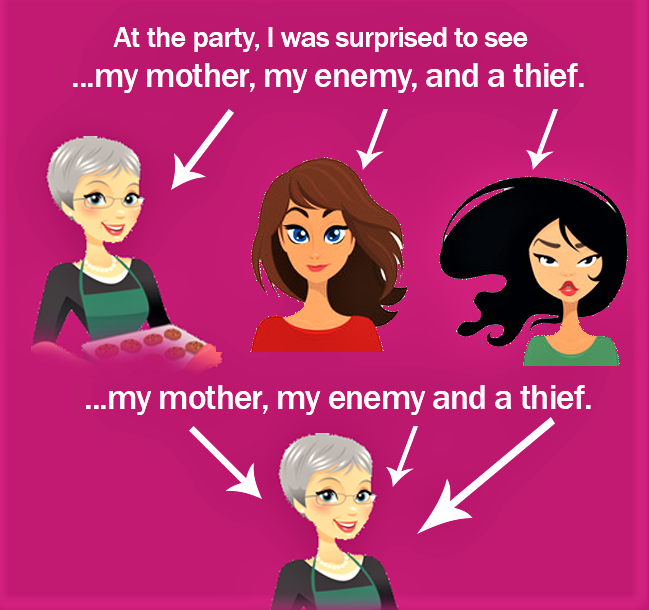

So while there is a lighter side, the company involved in this lawsuit found no humor in the Oxford comma controversy:

The article says that in 2014, three truck drivers sued Oakhurst Dairy, a company in Portland, ME, seeking more than four years’ worth of overtime pay that they had been denied.

Due to the lack of an Oxford comma in a state law, the United States Court of Appeals for the First Circuit sided with the drivers, saying the absence of a comma produced enough uncertainty to rule in their favor. It reversed a lower court decision.
Though three drivers filed the class-action lawsuit, about 75 would share the money – an estimated $10 million.
Here’s the follow-up to the story:

“Ending a case that electrified punctuation pedants, grammar goons and comma connoisseurs, Oakhurst Dairy settled an overtime dispute with its drivers that hinged entirely on the lack of an Oxford comma in state law.

“The dairy company in Portland, ME agreed to pay $5 million to the drivers, according to court documents.
“The relatively small-scale dispute gained international notoriety last year when the United States Court of Appeals for the First Circuit ruled that the missing comma created enough uncertainty to side with the drivers, granting those who love the Oxford comma a chance to run a victory lap across the internet.”
The article noted that the Maine Legislature had “addressed the punctuation problem” in the law.
In summary:
There are those who insist the Oxford comma must always be used; those who insist it never be used; and those who say to use it when clarity is needed.
If you were to ask me about Oxford comma usage, I would say this:
“That’s an excellent question! Look. I mean, at the end of the day, you know – in my humble opinion, to be honest, basically…
“Right?!!”

A few weeks ago there was a phrase in an NBC article that caught my attention:
“…with the soul-satisfying sight of Trump being frog-marched down the Mar-a-Lago porte-cochère.”
“Frog-marched.”

I’d heard the expression and knew it was something bad, and something bad + Trump in the same sentence sounded good to me.
But “frog-marched” isn’t a phrase we hear often, and I decided to find out exactly what it meant.
There are lots of etymology sites online, “etymology” itself being an interesting word meaning “the study of the origin of words and the way in which their meanings have changed throughout history.”
I started my study with this site:

I learned that “frog-marched” first came into use in London, “and the earliest reference to it is in the 18 April 1871 Evening Standard” in the form of “frog’s march,” a noun rather than a verb:
“The London method is called the ‘frog’s march’ in which the prisoner is carried to the station, with the face downwards and the whole weight of the body dependent on the limbs.”
The article thoughtfully provided this illustration:

It pleases me to imagine Trump in this prisoner’s position.
Over time “the frog’s march” noun also became a verb:
“By the 1930s, the verb was used in reference to the much more efficient (but less frog-like) method of getting someone in an arms-behind-the-back hold and hustling him or her along.”
An unknown graphic artist thoughtfully provided this image:

This image also pleases me.
*****
Another word that got me thinking is “pithy.”
I encountered it in an otherwise forgettable book, when a character referred to the writing she did for her Instagram posts as “clever and pithy.”
“Pithy” has two meanings:
Of language or style: Concise; brief but full of substance and meaning.
Of a fruit or plant: Containing much pith.
Anyone who’s encountered citrus fruit has encountered pith – it’s that yucky white stuff between the peel and the fruit segments:

But how did that stuff get the name “pith,” and how did “pith” evolve into the adjective “pithy,” referring to language?
I looked at a number of etymology sites, but this time I did better on Wikipedia:

“The term pith is also used to refer to the pale, spongy inner layer of the rind…of citrus fruits (such as oranges). The word comes from the Old English word piþa, meaning substance, akin to Middle Dutch pitte (modern Dutch pit), meaning the pit of a fruit.”
Well, a bit of a stretch, but…OK
But – how did “pith” become the adjective “pithy,” meaning “concise; brief but full of substance and meaning”?
“Pith is also used figuratively to refer to the essential part of something.”
Ah…so if someone’s writing or speaking is “pithy,” it’s expressing the “essential part of something” in a way that’s “brief but full of substance and meaning.”
So I’d say “pithy” is a compliment
Unless you’re referring to that yucky white stuff:

*****
I love words, which is a good thing since I’m a writer.
So I always look forward to Merriam-Webster’s Word of the Year, which comes out around the end of the year.
Here are their recent choices:

The 2022 word is an appropriate choice, but…
Not a nice choice:

“Merriam-Webster’s word of the year – and this you can believe – is ‘gaslighting.’
“The online dictionary chose ‘gaslighting,’ which it defines as ‘the act or practice of grossly misleading someone especially for one’s own advantage,’ as its top word of 2022 because it has become the ‘favored word for the perception of deception.’”
“Gaslighting” comes from the 1938 play and 1944 film Gaslight, the latter starring Ingrid Bergman, Charles Boyer and Joseph Cotten:
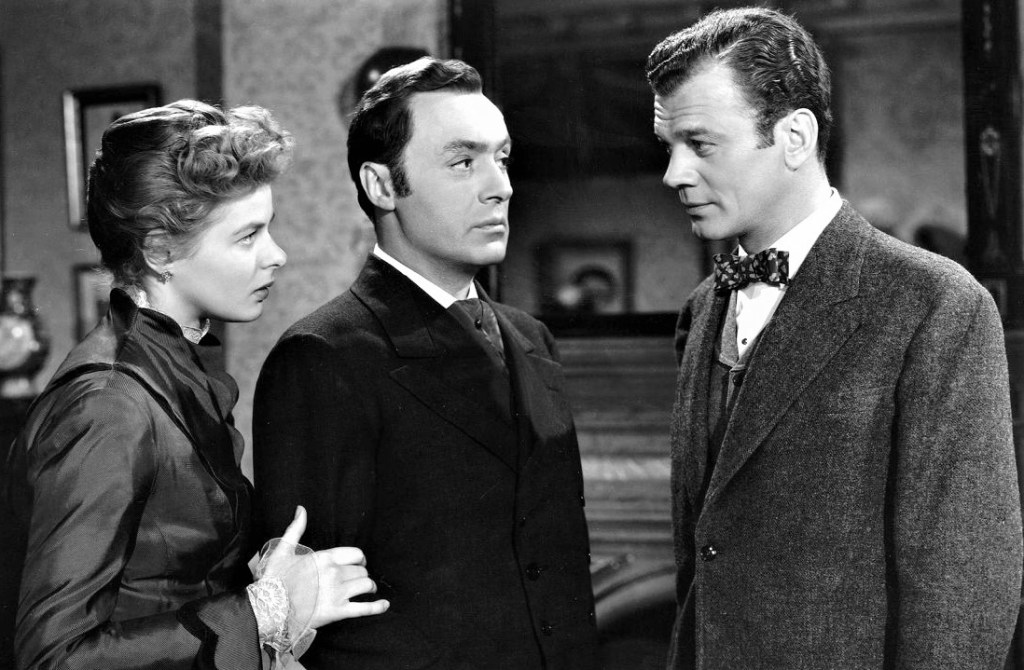
In both the movie and the play,
“…a nefarious man attempts to trick his new wife into thinking she’s losing her mind, in part by telling her that the gaslights in their home, which dim when he’s in the attic doing dastardly deeds, are not fading at all.”
This article:

Took the definition of “gaslighting” even deeper:
“…the psychological manipulation of a person, usually over an extended period of time, that ‘causes the victim to question the validity of their own thoughts, perception of reality, or memories and typically leads to confusion, loss of confidence and self-esteem, uncertainty of one’s emotional or mental stability, and a dependency on the perpetrator.’”
In both the CNN and AP articles there was direct and indirect linking of “gaslighting” and “Trump.”
No surprise there.
There are books about it…

…and plenty of headlines, this one from several years before Merriam-Webster chose “gaslighting” as its Word of the Year for 2022:

Gaslighting: Word of the Year.
Appropriate, alas.
*****
Let’s wrap up Part I with this story and the ultimate word game:
The board game…

The online game…

The tournament game…

Scrabble, a game that’s been around and loved – and hated – for more than 70 years, has published its brand-new…

Here’s the November story:

“Bae, yeehaw, fauxhawk, thingie, adorbs, stan, vibing and sitch are just eight of the 500 new words Scrabble has added to the seventh edition of The Official Scrabble Players Dictionary, out this month. They will join more than 100,000 words from between two to eight letters. The book was last updated in 2018 and published through a partnership between Hasbro and Merriam-Webster.”
“Fauxhawk”?
Is that maybe a…fake…mohawk? As in hairstyle?
Indeed it is:

I learned a new word!
Bring on the Scrabble Tournament!
New words, old words, Old English words, Middle Dutch words – there’s no doubt about it…

Friday, January 13: More Words On Words And…
*****

Potholders aren’t something we give much thought to – unless you need one and it’s nowhere to be found.
You grab a potholder, lift something hot off the stove or out of the oven, put the potholder back where you keep it, and forget about it until the next time you need it.
I, however…
Have a relationship with my potholder.
Which is odd, since I don’t cook.
I was born and raised in Michigan, and though I now live in San Diego, my potholder and I go way back.
My potholder, too, is from Michigan.
My potholder traveled from Michigan to California with me.
My potholder is a two-sided Michigan Mitten:

Michigan is the only state that models a potholder’s shape.
See?

Michigan: Two peninsulas. Upper peninsula, left hand; lower peninsula, right hand.
Oh, other states have potholders:

I say “Piffle!” to those.
Michigan has the perfect potholder profile.
If you live in Michigan and someone asks you where you’re from, if you’re from the Lower Peninsula you hold up your right hand and point to your city with your left hand:

It’s a very handy (get it?) visual aid.
Another way Michigan is unique: It is the only state in the U.S. formed by two peninsulas.
As I was ruminating on potholders and peninsulas, I started wondering…
Why is the upper peninsula part of Michigan?
The upper peninsula shares a border with Wisconsin, not Michigan:

In fact, the upper and lower peninsulas of Michigan don’t even touch each other at any single point.
They are connected, but that’s by the five-mile-long Mackinac Bridge, which spans across the Mackinac Straits of Lake Michigan and Lake Huron:

So if the peninsulas aren’t connected, but the upper peninsula is connected to Wisconsin, why is the Upper Peninsula (or UP as we natives say), part of Michigan?
Gosh – I grew up in Michigan and don’t know the answer to that.

I’m going on a quest to correct my ignorance.
Want to come along?
Let’s get started here:

It turns out that we have to go back to 1787, and to land that was west of the United States that had belonged to the British. The land was ceded to the U.S. in 1783, and in 1787 Congress organized the land into what they then called the “Northwest Territory”:

Today we recognize it as all or large parts of six eventual states – Ohio, Indiana, Illinois, Michigan, Wisconsin and the northeastern part of Minnesota – but back then it was just a lot of land.
Then people in the southeastern part of the Northwest Territory got themselves organized, applied for statehood, and Ohio became a state in 1803. The border between the state of Ohio and Michigan Territory was defined, and Ohio made sure that their new state would include Maumee Bay and Toledo.
Why did Maumee Bay and Toledo matter to Ohio?
Here are the Maumee River and Toledo:

The Maumee River runs from northeastern Indiana into northwestern Ohio, into Maumee Bay and Lake Erie just east of Toledo.
Importance: An east/west water trade route.
Trade route = commerce.
Commerce = profits.
You bet Ohio wanted its border drawn to include Maumee Bay and Toledo.
I know – you’re wondering, “What does this have to do with your Michigan Mitt potholder?”
Hang in there. We’re coming to the Toledo Strip.
All was well in Ohio, says this article:

Until…
“…until Michigan applied for statehood in 1833 and drew the border between itself and Ohio.”
Michigan drew its own border, and that border included Maumee Bay and Toledo. The disputed tract of land, five to eight miles wide, 468 square miles, became known as the “Toledo Strip”:

“Not so fast!” said the people of Ohio (especially the ones who were benefiting greatly from the east/west water trade). Ohio governor Robert Lucas pulled some favors in Congress to deny Michigan’s statehood, and that made Michigan governor Stevens Masons mad.
So the men did what men have done since the beginning of time:
They started a war.
Masons sent 1,000 Michigan militia to the Toledo Strip, and Lucas sent 600 Ohio militia.
As wars go, the Toledo “War” didn’t amount to much; it was mostly bloodless skirmishes, arrests, lawsuits, and saber rattling.
Until things heated up in July 1835, according to this article:

And that heat reached all the way to the White House. President Andrew Jackson got involved, and…
“Jackson brokered a deal and in June 1836, an agreement was ratified: Ohio took control of the Toledo Strip, Michigan would be admitted into the union as the nation’s 26th state, and Michigan would take control of 9,000 square miles of land of the Upper Peninsula.”

Of course, that land wasn’t called the “Upper Peninsula” then. It was just a mass of land that many in Michigan considered a useless wilderness, full of trees and Indigenous Americans.
It wasn’t even connected to Michigan!
Michigan got its statehood, and – many believed – a bad deal.
And that is how the Upper Peninsula became part of Michigan.
And this is how it turned out to be a great deal:

In 1841, Douglass Houghton, Michigan’s first state geologist, filed surveys and reports demonstrating an abundance of copper in the western part of the Upper Peninsula. It was the start of the area’s copper boom.
Copper-seeking prospectors rushed in and since then – according to Michigan’s Copper Deposits and Mining:
“…over 12 billion pounds of native copper have been mined.”
And that’s not all – there’s this:

William Austin Burt and his surveying crew first came upon iron ore in 1844. Within a few years, iron mines opened all across the central Upper Peninsula.
Since its first iron ore shipment of two hundred pounds in 1846, the Upper Peninsula mines have produced well over one billion tons of iron ore.
And there’s also this:

According to this and other articles:

Trees – especially white pine – had always been plentiful in Michigan, and so had creeks and streams. Combine the two – felled trees and waterways to transport them in – and you have a logging industry. Waterways also transported the finished product from the mills to markets on the lower lakes.
By 1869 lumber from the Upper and Lower Peninsulas meant Michigan was producing more lumber than any other state, a distinction it continued to hold for 30 years.
In recent years, Michigan’s forest products industry – products that range from basketball court floors and utility poles to paper envelopes, furniture and much more – generated record amounts of revenue, growing from $14.7 billion five years ago to more $20 billion today, according to the Michigan Department of Natural Resources (MDNR).
Copper, iron ore, lumber…
As this headline summed it up:

And as this wit summed it up:

And as I’ll sum it up:
I got this:

And I turned…

Into…

Here’s how 2023 started in Washington, DC:
January 1:

“Before lawmakers can get down to the nitty-gritty of governing, Congress has some housekeeping to do. Most significantly, the House needs a new speaker and the dust has yet to settle with who will become the face of the chamber.”
The process for choosing a new House speaker is a vote by the majority party, in this case, 222 Republicans.
Once the new House speaker is chosen, all 434 members of the House (there’s one vacancy) take the oath of office, and the business of the House – that “nitty-gritty of governing” – can begin.
All 434 House of Representatives members can get to work, doing what we elected them to do.
What we’re paying them to do.
How’s that working out for us taxpayers so far?
Day 1, January 3:

Day 2, January 4:

Day 3, January 5:

Today is Day 4 of this fiasco.
And they aren’t even bothering to show up until noon:

What – so they can all catch up on their beauty sleep?
No House speaker has been chosen.
No members of the House have been sworn in.
And the business of the House – that “nitty-gritty of governing” – can’t begin.
This seems like an opportune time to mention that members of the House are paid $174,000 per year.

Republicans: 222 members x $174,000 per year = $38,628,000 tax dollars per year.
And since Democrats can’t do anything until they, too, are sworn in…
Democrats: 212 members x $174,000 per year = $36,888,000 tax dollars per year.
Total: $75,516,000 tax dollars per year to 434 people who aren’t doing the jobs we elected them to do.
That we’re paying them to do.
And that, my friends, is…

Everyone does it, but no one likes to talk about it:
Die.
No one likes to talk about dying or death, our own or others.
And I’m no exception.
But I read an article that got me thinking about death:

You can see the article was published on September 4.
That’s how long it’s taken for me to steel myself to talk about death.
The article got me thinking not only about death but also – from the headline – the planning involved in what happens after a death. Meaning, if I had to deal with a loved one’s death, or if someone had to deal with my death.
And that got me wondering about one component of that planning, about which I know nothing:

Death certificates.
“Death certificate” is a phrase we often hear in news stories: “According to the death certificate, the victim died of a gunshot wound…” and, “The death certificate lists pancreatic cancer as the cause of death…”
But what I didn’t know until I started researching death certificates was that if I’m designated as the person responsible for settling the estate of a deceased loved one (or other person), I can’t do this without the deceased’s death certificate.
According to this article:

“There are several reasons why you may need to obtain a death certificate. Most often it’s to serve as proof for legal purposes. These reasons may include accessing pension benefits, claiming life insurance, settling estates, getting married (if a widow or widower needs to prove that their previous partner has passed), or arranging for a funeral.”
“What,” I wondered, “do they mean by ‘obtain’ a death certificate? Doesn’t – someone – just send that to me after my loved one dies?”
No.
Now, I’ll be talking only about my state – California – and we know that guidelines for this (as for so many things) vary from state to state. But I expect there are commonalities among all states with regards to death certificates.
And here’s a commonality to expect:

In California, there is no “someone” who just goes ahead and sends a loved one’s death certificate to you. As my research soon showed…
You must ask for it.
And I must obtain not just a death certificate, but an “authorized certified copy” of a death certificate.
And I can request that authorized certified copy only if I’m a “person authorized under California law,” according to the Marin County, CA website:

“Although vital records are public documents, under California law, certificates are not open for public inspection. Anyone may request copies, however only persons authorized under California law may receive authorized certified copies of death records.”
How do I show that I’m a “persons authorized?” Apparently it’s not enough for me to call the county office and say, for example, “Hello, I’m the legal guardian of the deceased” or, “Yes, I’m the spouse of the deceased,” and the county sends the death certificate to me.
No – I must prove I’m a “persons authorized.”
The Marin County website advises that I do this via a sworn statement that’s part of the death certificate request form, which I may need to sign before a notary public. Here’s the request form:

Here’s the sworn statement section:

I continued my research on the state website:

The California Department of Public Health – CDPH.
The first thing I thought when I saw this site was,
“This looks like another DMV. This is going to take me into a black hole, just like the DMV site does.”

I was right.
The site does tell me right up front:
“Certified death records are $24 per copy.”
And to settle an estate, I’ll need multiple copies for reasons that could include selling a loved one’s house, car, boat and/or second home; settling debts and closing credit cards; claiming life insurance; notifying Social Security; closing online accounts; accessing bank accounts and investment accounts; and making arrangements with a funeral home.
I can request the death certificate via an electronic submission, a mail-in request, or through the County Clerk/Recorder.
Electronic submission seemed like the most expeditious route, so I looked at that first and learned:

“There are independent, third party companies that process online requests for certified copies of vital records. Online services provided by an independent company may charge a processing fee on all orders. That fee may vary with each company, and will be charged in addition to the certified copy fee. Any questions regarding online requests or online orders should be directed to the third-party company involved.”
My interpretation:
Electronic submission will also hit you with a fee, and if there’s a problem – contact them, not us.
How about a mail-in request?
Here’s the first step for the mail-in request:
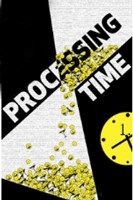
“Before submitting your application to CDPH Vital Records, please view our Processing Times to make sure they are acceptable for your needs and if this is the best option.
“If not, you should submit your request online or to the County Recorder’s Office in the county where the death took place.”
“Processing Times.” Let’s look at that.
“The California Department of Public Health – Vital Records’ (CDPH-VR) average time to process a certified copy request is 6 to 8 weeks.”
“Average time,” of course, means it could be less than six to eight weeks – or it could mean more – before you can begin to settle an estate.
And that “six to eight weeks” may be overly optimistic – according to this website:

Expect a Slow Turnaround
California does not issue death certifies copies quickly, even if you need them to begin executing a will or trust. The Department of Public Health/Vital Records states that it processes requests within 10-12 weeks. Due to the coronavirus pandemic and staffing cuts, it could take even longer.
My third option for obtaining an authorized certified copy of a death certificate is contacting the County Clerk/Recorder. I decided to look at my county, and this led me to a list of “County Registrars and Recorders” by county and city, which led me to my county’s Office of Vital Records and Statistics:

Where I learned that they, too, charge a $24 fee to obtain an authorized certified copy of a death certificate in person or by mail.
If I go the online route through something called “VitalCheck,” there’s an additional processing fee of $12.95. VitalCheck graciously springs for the postage if you request the death certificate by mail (and we know how “by mail” can work out), but if you’re in a hurry, there’s a $19 charge for Express UPS.
Ladies and gentlemen, we are now in that Black Hole I mentioned earlier.
And once you get your authorized certified copies of the death certificate, cautioned this article on CNBC.com:

“Don’t let the death certificates get into the wrong hands. Death certificates can provide a lot of access to personal documents and/or assets.”
There’s a kind of irony in all this.
That the piece I need the most to start settling my loved one’s estate – the authorized certified copy of the death certificate – requires a time-consuming process that could take two months or more, but I can’t get this taken care of ahead of time.
I can’t request this until my loved one dies. Of course not. It’s just…
Ironic.
Now let’s circle back to that September 4 Washington Post article and the phrase that got me started into my research about how to obtain a death certificate.

“What do you do after someone dies? Most people expect to deal with intense grief, but they might not realize how many logistical details arise after a death. Those tasks can feel overwhelming: deciding who to call, learning where to get death certificates, planning memorials and navigating finances.”
The article didn’t tell me how to get an authorized certified copy of a death certificate, so I went on the research journey I’ve recounted.
The article does talk about…
“…new apps and websites with names such as Cake, Lantern and Empathy exist to help people navigate the tumult and confusion after a loss, offering tools that range from organized checklists for the early days of funeral planning to resources for later concerns such as closing a deceased person’s credit card account or finding a home for the deceased person’s pet.”
I wondered if these sites offer information about obtaining a death certificate, so I went on Cake and discovered that they do:

Cake, Lantern and Empathy may be helpful.
I’ll designate the Washington Post article as helpful because it got me thinking about all this. I’m now better informed, and I’ll make sure my husband is, too.
The last thing I’ll include is the full list of “Individuals Permitted to Receive an Authorized Certified Copy,” this time from a Los Angeles County website which refers to the deceased as the “registrant”:

With regards to #4 and #5, it appears an attorney of/representing the estate of the deceased, and a funeral director/employee, can request an authorized certified copy of my loved one’s death certificate, so if I have one or both of those, I may not have to do the requesting.
Though I’ll confess I did not delve into “paragraphs (1) to (5), inclusive of subdivision (a) of Section 7100 of the Health and Safety Code” or, “paragraphs (1) to (8) inclusive of subdivision (a) of Health & Safety Code 7100.”
I just couldn’t deal with one more trip into the bureaucracy…
…black hole:

The state of Georgia is known for many things, including the setting for Margaret Mitchell’s 1936 bestseller, Gone With The Wind:

Georgia is known for peaches:

And, briefly, Georgia was in the news because of this guy:

This is Christopher Spaulding, 40, and his news coverage appeared – and quickly disappeared – back in early December, but I thought the story was worth resurrecting.
Why?
Because ole Christopher is – no question – my nominee for the list of…

The setting is Rockdale County, GA:

And the catalyst was the Rockdale County Sheriff’s Office (RCSO).
On November 28 RCSO posted this on Facebook:

Posting a “most wanted” list is a normal thing for law enforcement to do.
Spaulding, also of Rockdale County, GA saw the post, and I guess his feelings were hurt – that everyone-got-invited-to-the-party-but-me kind of thing.

But whereas most of us who aren’t invited to the party would hide out in a dark room and sulk…

Not Spaulding.
Are you kidding?
Look at him:

This guy is a University of Georgia Bulldogs fan through and through! Right down to his color-coordinated sweatshirt and hat!
And you can bet that Spaulding knows that UGA Bulldogs slogan from back in the ‘80s:

That’s right: GATA.
It stands for…
“Get After Their Asses!”
So Spaulding got after their asses – those Rockdale County, GA Sheriff meanies who didn’t invite him to their “Top Ten Most Wanted” party.
He jumped right on that Facebook page and said this:

And someone at the sheriff’s department took note, did their homework, and confirmed Spaulding had two outstanding warrants.
RCSO replied to Spaulding’s post:
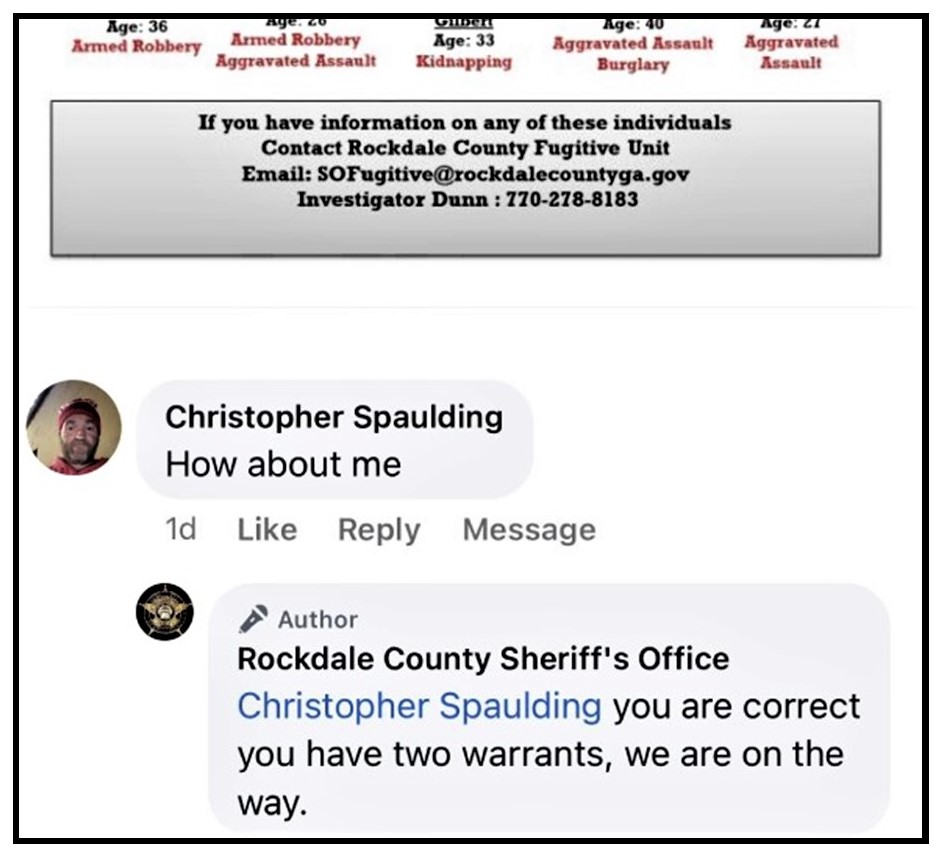
They took a page from Spaulding’s playbook and got after his ass, and arrested him on warrants for felony violation of probation:
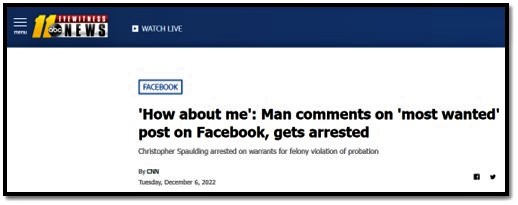
RCSO politely thanked Spaulding for his assistance:

This article:

Noted:
“After Spaulding was taken into custody, the Rockdale County Sheriff’s Office reminded wanted fugitives that being left off the ‘Most Wanted List’ isn’t a get-out-of-jail-free card.
“‘Our Top 10 is compiled based off of the severity of the charges only. By not being on this list does not mean our Fugitive Unit is not looking for you if you have an active warrant.’”
Well, RCSO, that may be.
But Spaulding was walking around Rockdale County with not one but two outstanding warrants, and if you were looking, you sure weren’t finding.
How many other Top 10 candidates are walking around free in Rockdale County, GA?
So Spaulding has taught RCSO a thing or two about…
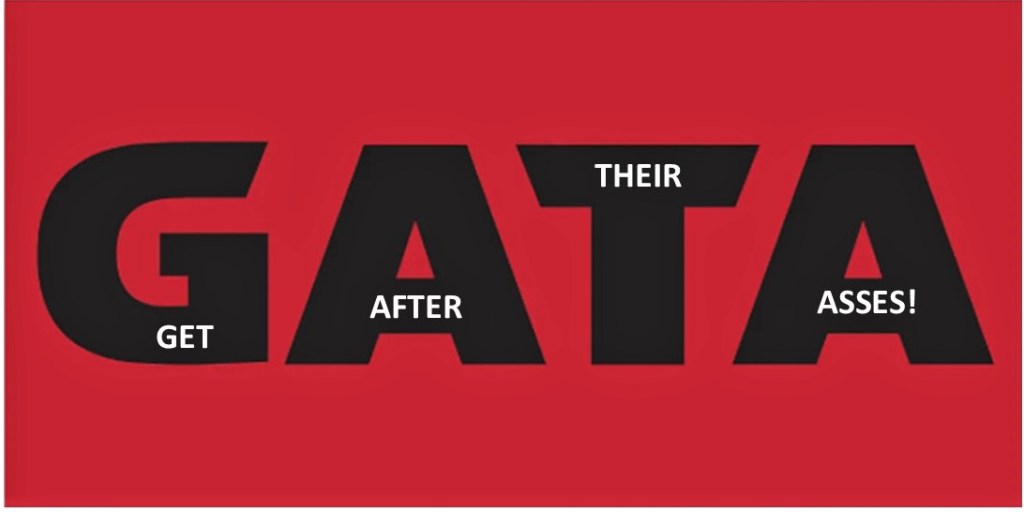
Now I want to return to that ABC 11 Spaulding story from above:

Something right in the middle of the story struck me as odd:
This link:

“How,” I wondered, “could finding a ‘whole alligator’ inside a python be ‘related’ to the Spaulding story?”
The link took me to this story:

I watched the video and read the Florida Everglades/python/alligator story, and found nothing “related” to the Spaulding-getting-himself-arrested story.
But – I did see some mind-boggling images of the 18-foot python…

That made clear just how huge this snake was…
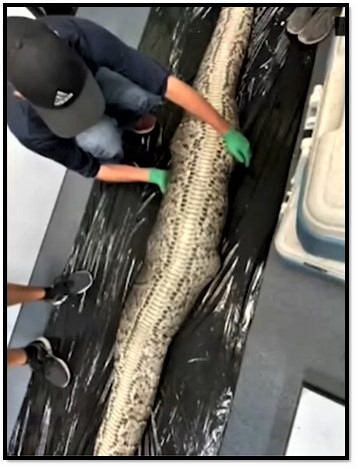
Compared to the humans in the Florida lab that were performing the necropsy on it.
How big?
Big enough to swallow a five-foot alligator:

And though the video narrator was making a joke of the story, I didn’t find anything funny in it.
We all know that pythons aren’t native to Florida, and we all know how they got there.
According to this article:

“Between 1996 and 2006, roughly 99,000 pythons were imported into the United States as pets.
“It’s believed the pythons began breeding in the wild as a result of two primary causes: irresponsible pet owners releasing them, and the animals escaping their loosely-kept cages as a result of hurricane or stormy weather.”
Pythons are decimating the native wildlife in the Florida Everglades, hundreds of thousands of pythons breeding and expanding the python population because the animal has no natural predators in the Everglades.
All because of irresponsible pet owners who may have started with one of these:

But when it got to looking like this:

They loaded it into their car, drove to the Everglades and dumped it.
As for that “animals escaping their loosely kept cages,” the article says:
“In the late 90s and early 2000s, storms likely enabled snakes in loosely secured cages to escape during stormy weather.”
So – Florida’s python invasion is a 100% human-caused problem, start to finish.
Irresponsible humans.
I now see that the Christopher Spaulding and the python stories actually are “related.”
Let’s take a page from Spaulding’s playbook.
And those people responsible for the python disaster in the Everglades?
Let’s…

I’ve never given much thought to lemons.
When I was growing up, there were always a few lemons in the fridge, mainly for my mom to squeeze onto her fish on Friday nights.

No big deal.
Then there was lemonade in the summer, which was a frozen concentrate in a can that you mixed with water. And sugar. A lot of sugar.
When my sister got older and started experimenting with cooking, she made lemon meringue pie, and that was yummy.
When I got older and discovered iced tea, I learned that a wedge or two of lemon added to the flavor. So did sugar. A lot of sugar.

As time passed I also discovered that lemon was good adult beverages – a twist of peel, a slice, or lemon juice as an ingredient for whiskey sours, Cosmopolitans, and a drink called a “Corpse Reviver” (pictured) which was supposed to cure hangovers.
Lemons have been around forever, so…
No big deal.
Or so I thought, until a couple of years ago when I tasted one of these:

I’m talking about the lemon on the right:
A Meyer lemon.
You’ll notice that it’s not just smaller than the regular lemon on the left, but it’s almost orangey colored. That’s because, according to this article:

The Meyer lemon is “A cross between a lemon and a mandarin orange…”
So the Meyer lemon is smaller, it’s a hybrid, and according to this article:

Appearance: Regular lemons have a knobby, yellow skin, a thick layer of white pith, and bright yellow inner flesh. Meyer lemons are rounder, smoother, and more orange in color than standard lemons. Their thin skin ranges from dark yellow to rich egg yolk, and their inner skin is a deep yellow. Additionally, Meyer lemons have barely any pith.
Flavor: Regular lemons are incredibly acidic and sour. Since Meyer lemon is a hybrid, it has a mellow, sweet flavor.
And juicy. Meyer lemons are very juicy.
Sink your teeth into a regular lemon and you do this:

No pucker face with Meyers, due to a flavor that, in addition to the above description of “mellow, sweet” has been described as “slightly floral,” and “fragrant and bright.”
Another interesting thing about Meyer lemons is that in their original use, nobody was sinking their teeth into them.
Instead, says the NPR article,
“In its native China, it was primarily a decorative houseplant.”
Which meant that in their yard and/or home, wealthy Chinese could have these:

Which also meant that they’d have rotten lemons on the ground below:

Until the servants the servants did some lemon aid.
Meyer lemons, said the NPR article, might have remained a mere Asian house/garden decoration if not for this man:

“In the early 1900s, the U.S. Department of Agriculture sent Frank N. Meyer [pictured], an agricultural explorer (yes, that was his actual job title) on several trips to Asia with the mission of collecting new plant species. Among more than 2,500 plants that he introduced to the U.S., the Meyer lemon was named in his honor.”
People in the regions where Meyers could be grown – California, Florida and Texas – took a liking to the lemons, but again – as something to decorate their backyard.
Occasionally someone would show up with a box of Meyers at the local farmers market, but they weren’t a commercial product: “Their thin, delicate skin and high juice content made them too fragile to distribute commercially,” said NPR.
So that was the life of Meyer lemons, and it would likely have remained so if not for none other than…

Yes! Thanks to the late Martha Stewart and her CBD Meyer Lemon Oil Drops…

Now on sale for just $29.99!
I’m kidding.
Though CBD Lemon Oil Drops are among Martha’s Meyer lemon merchandise, along with her CBD Wellness Citrus Medley Gummies (“Delicious gourmet flavors of Meyer lemon, kumquat, and blood orange!”):

Along with her apparently non-CBD Meyer Lemon Solid Paper Tags:

But these items aren’t how Martha made Meyer lemons famous.
No, her love for the fruit goes back at least to 2016 and to her blog, Martha: Up Close and Personal:

Where she extolled the wonderfulness of Meyers:

And began featuring them in recipes like these:

Meyer lemons started flying off grocery stores shelves.
That is, when people could find them on grocery store shelves.
Earlier I mentioned the fruit’s thin fragile skin and the difficulty of shipping them.
That meant that for most people, Meyers were maybe available only from early winter through early spring, unless you lived where the lemons are grown: the citrus growing regions of California, Texas, and Florida.

So I’m lucky – I live in San Diego and for the past two years I’ve been getting Meyer lemons at my grocery store year round. I asked a produce person at the store exactly where they were grown, and the best he could do was, “In the USA.”
Wherever they’re from – I love ‘em.
And if your grocery store doesn’t have Meyers, don’t despair – I found a number of online sites that will ship Meyer lemons, though it’s unclear whether they’re always available.
If you haven’t tried Meyer lemons, you’re in for a sweet treat.
On that note – and not to be outdone by Martha Stewart – I have my own Meyer lemon recipe to share, and I’ll close with that:

It seems like companies announcing layoffs has become a daily occurrence.
While some companies aren’t that well-known, many are high-profile: Morgan Stanley, PepsiCo, CNN, DoorDash, Hewlitt-Packard, Amazon…
And this, from December 16:

But there’s an organization that hasn’t joined the layoff rush hour…
And I wish it would.
I wish the California Innocence Project (CIP) had to lay off everyone due to…
Lack of clients.

According to their website, the California Innocence Project in San Diego…
“…is a law school clinic, founded in 1999 at California Western School of Law, dedicated to freeing the innocent, training law students, and changing laws and policies in the state of California.”
It’s “the innocent” I’m referring to, when I say that I wish the California Innocence Project had to layoff everyone due to lack of clients.
The clients – “the innocent” – are people wrongly convicted and serving time in prison. Since 1999, says their website, CIP has freed 37 wrongly convicted people:
“Our clients do not have the resources to prove their innocence. The California Innocence Project provides pro bono services and pays all of the investigation and litigation costs for all of our cases – more than 1,500 cases each year.”

I admire the CIP team.
Now, before you accuse me of being a bleeding-heart liberal who thinks prisons are full of innocent people…
I don’t.
People do bad things, and when someone commits a crime, our system says they should serve time for it.
But I also believe there are innocent people who are convicted of crimes they didn’t commit.
“Well,” you might ask, “if they’re innocent, how could they be convicted?”
There are plenty of reasons, according to this and other articles…

…and I think it’s worthwhile to consider them:
Mistaken Witness ID
Eyewitness error is the single greatest cause of wrongful convictions nationwide, playing a role in 72% of convictions overturned through DNA testing.

While eyewitness testimony can be persuasive evidence before a judge or jury, 30 years of strong social science research has proven that eyewitness identification is often unreliable. Research shows that the human mind is not like a tape recorder; we neither record events exactly as we see them, nor recall them like a tape that has been rewound.
In case after case, DNA has proven what scientists already know – that eyewitness identification is frequently inaccurate.
False Confession
In about 30% of DNA exoneration cases, innocent defendants made incriminating statements, delivered outright confessions or pled guilty. These cases show that confessions are not always prompted by internal knowledge or actual guilt, but are sometimes motivated by external influences including the possibility of a reduced sentence.

False Forensic Evidence
Since the late 1980s, DNA analysis has helped identify the guilty and exonerate the innocent nationwide. While DNA testing was developed through extensive scientific research at top academic centers, many other forensic techniques – such as hair microscopy, bite mark comparisons, firearm tool mark analysis, and shoe print comparisons (pictured) – have never been subjected to rigorous scientific evaluation.
Meanwhile, forensics techniques that have been properly validated – such as serology, commonly known as blood typing – are sometimes improperly conducted or inaccurately conveyed in trial testimony. In some cases, forensic analysts have fabricated results or engaged in other misconduct.
Perjury
In 18% of wrongful conviction cases overturned through DNA testing, an informant testified against the defendant at the original trial. Often, statements from people with incentives to testify – particularly incentives that are not disclosed to the jury – are the central evidence in convicting an innocent person.
Official Misconduct
Some wrongful convictions are caused by honest mistakes. But in far too many cases, the very people who are responsible for ensuring truth and justice – law enforcement officials and prosecutors – lose sight of these obligations and instead focus solely on securing convictions. The cases of wrongful convictions uncovered by DNA testing are filled with evidence of negligence, fraud or misconduct by prosecutors or police departments.

While the majority of law enforcement officers and prosecutors are honest and trustworthy, criminal justice is a human endeavor and the possibility for negligence, misconduct and corruption exists. Even if one officer of every thousand is dishonest, wrongful convictions will continue to occur. DNA exonerations have exposed official misconduct at every level and stage of a criminal investigation.
There are more reasons – like inadequate defense. And how about corrupt judges:

When you think of what can go wrong and turn into a wrongful conviction, it makes me…

Here’s what went wrong for Kimberly Long, one of the California Innocence Project’s clients:
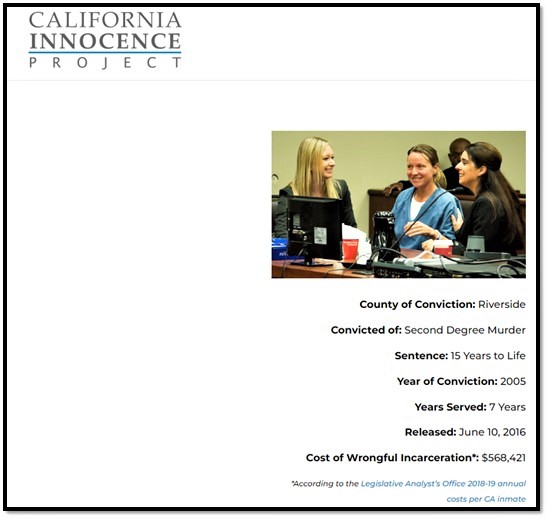
I – fortunately – cannot begin to imagine the horror of being in prison.
Being deliberately deprived of your liberty, your dignity, and sense of self. Stripped of your rights – to vote, the right to privacy, and some of your First Amendment rights. Decisions about eating what you want, showering when you want, making a phone call when you want – are no longer your decisions.
All this and worse happened to Kimberly Long.
And she was wrongly convicted.
On April 22, 2021, thanks to the work of the California Innocence Project, the Riverside District Attorney formally dismissed all charges resulting in Kimberly’s full exoneration:

You can read Kim’s story on the California Innocence Project website, along with the stories of the other clients the organization has helped.
And you can read about other Innocence Projects online, and the Innocence Network, and all the other organizations whose mission is to free the wrongly convicted.
And you can join me in hoping that someday…
All their employees will face this kind of lay off…

We humans have a propensity for building big things.
Big buildings:

Big ships:

Big burgers:

So back in the early 2000s, when the powers-that-be decided to put an aquarium in the lobby of the Raddison BLU Hotel in Berlin, Germany…

…it’s no surprise that they weren’t thinking…

No, they were thinking big:

It’s called “AquaDom.”
AquaDom opened in 2003 and back then cost about $13.5 million. There are a variety of statistics online – not all of them agreeing – but reportedly it’s a freestanding, 52-feet-tall acrylic glass aquarium with a diameter of 36 feet that holds 260,000 gallons of water.
To put that in perspective, your average toilet holds 3.5 gallons of water. Now picture about 75,000 toilets tanks stacked up…

That’s a lot of water.
When it opened, AquaDom was declared the world’s largest cylindrical aquarium by Guinness World Records, and was home to more than 100 species of 1,500 tropical fish – “clown fish and angel fish, trigger fish and parrot fish, among many other kinds”:

And that isn’t the only thing in the fish tank – AquaDom has a transparent elevator inside where you can get a view of all those fish, and divers feeding them:

So AquaDom has all the bells and whistles: biggest ever, flashy, expensive, elevator inside, with a walkway above:

And a tunnel below:

Complete with its own shark mascot.
Various media described the AquaDom as “mesmerizing,” “gigantic” and “impressive,” as in this 2016 article:

While this 2017 article:

Described it as “incredible,” “towering,” and “absolutely need to add to your bucket list.”
So things were going along swimmingly at the Radisson BLU’s AquaDom, until Friday morning, December 16, when…

Verbs used to describe what happened to the AquaDom include “bursts,” “explodes” and “ruptures,” but whatever the wording, the results were the same. AquaDom:
“…burst, spilling debris, water and hundreds of tropical fish out…parts of the building…were damaged as the 260,000 gallons of water poured from the aquarium shortly before 6am. Berlin’s fire service said two people were slightly injured.”
There were pictures of the damage inside the hotel:

And outside:

But – thankfully – there was an upside:
“Mayor Franziska Giffey said the tank had unleased a ‘veritable tsunami’ of water but the early morning timing had prevented far more injuries.
“‘Despite all the destruction, we were still very lucky,’ she said. ‘We would have had terrible human damage’ had the aquarium burst even an hour later, once more were awake and in the hotel and the surrounding area, she said.”
And while the cause of the burst/explosion/rupture is under investigation, it appears that an American company…

May have some explaining to do.
It seems to me that in human’s quest for the big, bigger, biggest, AquaDom was more of an AquaDumb.
Seriously – while this idea was still on the drawing board, did anyone suggest that maybe, just maybe, this was not a good idea? Putting a monster freestanding water tank in a hotel lobby? On the assumption that this human-made thing was perfect, invulnerable, and would stand, intact, forevermore?
Another upside: The police aren’t suspecting foul play…

“Berlin police say they are not seeking suspects following the explosion of the ‘AquaDom’ aquarium on Friday, warning the public about what they say is a fake tweet suggesting they are.”
And speaking of ‘fake tweets’ – enter Elon Musk!
In an attempt to demonstrate what a great, caring person he is and more importantly, placate at least one European country over recent headlines lines this…

Shortly after AquaDom burst, Musk reportedly contacted the Radisson BLU with a suggestion on how to turn the AquaDom loss…
Into a financial win:


This story starts on December 6 when a Reddit user posted something on the r/antiwork subreddit.
For those who aren’t familiar with Reddit and its r/antiwork subreddit – that would include me – according to this article:
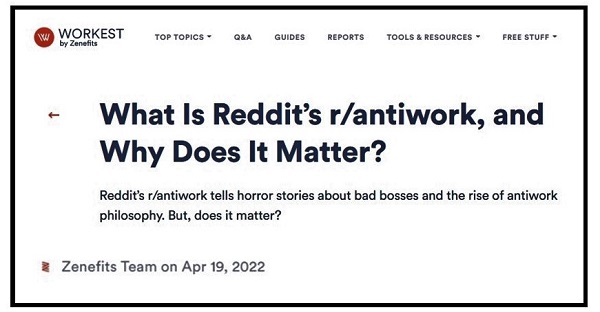
“…r/antiwork is a subreddit that’s become a place for people to talk about their dissatisfaction with working conditions and their negative experiences. In 2021, the subreddit grew to more than 900,000 followers (which the site calls ‘idlers’) and now boasts more than 1.8 million.”
Here’s the intro to that December 6 post:

What this led to was a news story that, when I googled it, brought me millions of results on December 13 and read like a who’s who in the national and international media world: CBS, NBC, Fox, the Guardian, the Washington Post, the Washington Examiner, The Hill, Fortune, the New York Post, MarketWatch, Business Insider, the Today Show and many others.
And as I started reading the stories, I found myself feeling sympathy, and empathy, for the people getting all this attention.
The central figure is unidentified, and the articles refer to the person as the “manager” and “they,” so I’ll do likewise.

The story starts at an Olive Garden Restaurant in Overland Park, near Kansas City, KS.
The manager sent a mass email to the team members. The email, variously referred to as a “rant,” a “tirade,” and a “diatribe” was about employees who had apparently repeatedly “called off” with various excuses for why they were unable to show up for work.
As you read the manager’s email, it doesn’t take a psychologist to see that the manager was angry. Enraged. Seething with frustration.
Here’s the local media outlet that broke the story:

The article included the rant/tirade/diatribe in full.
And yes, the “dog” part in the headline is an excerpt from the email. Here’s how it starts:
“Our call offs are occurring at a staggering rate. From now on, if you call off, you might as well go out and look for another job. We are no longer tolerating ANY excuse for calling off. If you’re sick, you need to come prove it to us. If your dog died, you need to bring him in and prove it to us. If its a ‘family emergency’ and you can’t say, too bad. Go to work somewhere else.”
Is the manager angry, enraged, and seething with frustration?
Oh, yeah.
And this is where my sympathy and empathy kicked in:

I’ve been on both sides of this – as a team member and in management.
I’m a Team Member
I’m sick and I’m not going to work. First, because I feel too rotten to get out of bed. And second, because I don’t want to come into work and spread whatever I’ve got.

And in our current “tridemic” of COVID, the flu and RSV, any sane manager would agree I should stay home.
And if I call in sick and I’m not actually sick, well – I’ll call it a “mental health day,” or something like that. (Everyone does this. Well, practically everyone.)
I’m a Manager

Any absence – of even just one person – puts a burden on the entire team, including me. They and I will have to do our jobs and pick up the duties of the absent person. This increases the stress level, and when the business is a restaurant and the restaurant is busy, the stress level goes way up. Orders get botched, food gets cold, customers don’t tip and may not return.
And if an employee is “calling off” – calling in sick – multiple times and/or multiple employees are calling off, that restaurant’s day could be a disaster.
As a manager, I’ve had it. Enough is enough. I know these people aren’t sick. This is…

So…
The manager’s email – two paragraphs and more than 300 words – includes multiple invitations to unhappy employees to find work elsewhere.
As a manager, on more than one occasion I’ve felt like saying the same.
The Olive Garden’s manager’s email cites themself as an example – how they’ve never called in sick in their “11.5 years” with the company; how they came to work after being in a wreck that totaled their car; and how, at night, they’d “rather be home with my husband and dog, going to the movies or seeing family. But I don’t, I’m dedicated to being here.”
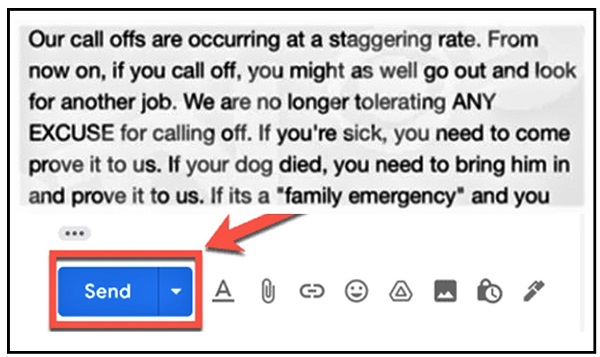
I suspect this manager had reached their limit of one too many staff calling off one too many times. So they grabbed their phone or sat down at their computer and dashed off the email – whatever thoughts came into their head.
Including that part of about bringing in the dead dog.
Did the manager pause and think twice before hitting “Send”?
Was the satisfaction of writing and sending that email worth losing their job?
Did the manager regret the email after they were fired?
Would Olive Garden have fired the manager if this story had not gone viral?
The manager was fired…

“A spokeswoman for Darden restaurants, which owns Olive Garden, confirmed to The Washington Post that the missive had been sent to employees and said that the ‘restaurant fired the manager after learning about it.
“‘We strive to provide a caring and respectful work environment for our team members. This message is not aligned with our company’s values,’ read a statement from the company. ‘We have parted ways with this manager.’”
Now I’ve got my team member hat back on, and I’m rolling my eyes about that “caring and respectful work environment for our team members.”
Yeah, sure. What a bunch of…

So, the restaurant manager and Olive Garden have “parted ways.”
The team members will get a new manager who may be great – or far worse than the one they had.
Life will go on, including at the Olive Garden Restaurant in Overland Park, near Kansas City, KS.
And as for me…
I’ve learned a new phrase:

“Recreational Ranting”
Gosh – I’ve been doing that since I started this blog!
Judges, how am I doing?

There are stories making the rounds that, following Trump’s November 15 announcement that he’s running for president, what we’re seeing is…

“Four weeks after declaring his 2024 White House bid, former President Trump appears to be a candidate in name only.”
“Since then, Trump has not held any formal campaign events. He has not traveled to early voting states, made any major staffing announcements or done much of anything to scare off would-be rivals.”
I think otherwise.
I think Trump’s advisers decided that since their presidential campaign efforts in 2020 were a dismal failure, they’d revamp their strategy as follows:
No more traveling around the country for rallies, no more media interviews, no more presidential debates.
The new strategy is:
Trump Sits on His Lard Ass at Mar-a-Lago and Makes Headlines
Here’s what I mean.
Since Trump’s candidacy announcement on November 15…
Step #1: The Trump dinner on November 22:

Step #2: The Trump declaration on December 3:

Talk about headlines!
And last Thursday, a true pièce de resistance:
Step #3: December 15:

“Mr. Trump announced an online store to sell $99 digital trading cards of himself as a superhero, an astronaut, an Old West sheriff and a series of other fantastical figures. He made his pitch in a brief, direct-to-camera video in which he audaciously declared that his four years in the White House were ‘better than Lincoln, better than Washington.’”
Talk about strategy!
But first, the Trump team set the stage: On December 14, Trump made an announcement that he was going to be making a “major announcement” on December 15:

“Donald Trump shared a bizarre video depicting himself as a ‘superhero’ on his social media platform Truth Social in which he teased a ‘major announcement.’
“The announcement is set to be made on Thursday, 15 December, according to the video posted by the former president on Wednesday.”
The video included this image:

“‘America needs a superhero,’ Mr. Trump says in the footage before an animated image of him wearing a superhero outfit with the letter ‘T’ on his chest appears as beams of light stream from his eyes.”
But, says this article:

“The Truth Social post on Wednesday didn’t give any hints about what Mr. Trump would announce.”
Strategic, yes?
Not so much as a hint from Trump of what was to come.
Attention – and speculation – was widespread!
Would Trump’s “major announcement” involve something about the Speaker race playing out among House Republicans? Would he offer solutions for ending the war in Ukraine, ending food insecurity, and ending inflation?
Or perhaps, as politics correspondent Bess Levin at Vanity Fair speculated:
“Would he be letting people know that after giving it a lot of time and thought, he’d come to the realization that his time in office was net negative on humanity, and that he would be both suspending his campaign and retreating to an out-of-the-spotlight life in the country?
“That he was ready to take responsibility for January 6 and whatever legal repercussions that come with doing so?

“That he’d been quietly volunteering at a local soup kitchen since leaving the White House and it had really opened his eyes to how the other half lives, and also taught him that small acts of kindness can have big impacts?”
Alas, it was none of the above.
Instead, Trump’s “major announcement” on December 15 was this:

The New York Times article suggested that…
“…Mr. Trump’s direct pitch for the trading cards underscored how secondary his campaign for president has seemed to his personal efforts over the last month.”
Au contraire, New York Times.
Trump is campaigning for president, intensely but subtly.
Subtly – something Trump is well-known for.
For example, TrumpCards.com says,

Those clever Trump advisors know that everyone will want to “instantly become part of a new league of collectors” – and Trump voters!
Then there’s this:

I’ll get a “rare collectible” and I’ll be entered into a sweepstakes?
Wow! What can I win?
They’re glad you asked! Here’s just a sampling of what you could win!

“Memorable”! “Luxurious”! “Unforgettable”! “Exclusive”!


Clearly, Trump’s digital trading cards will draw in his entire base and add millions to it!
Let’s see…buy 45 trading cards at $99 each, that’s…$4,455…
Hmmm. That’s a lot of money, especially since, as Trump’s website puts it:

“No inherent monetary value.”
So, what are you getting for all that money?
Trading cards that you cannot hold in your hand, or spread out on your table and admire.
Trump’s trading cards are NFTs – non-fungible tokens.
As I said in a post a year ago, when Melania Trump launched her own worthless NFT:
“A non-fungible token is a piece of data verifying that you have ownership of a digital item, such as a piece of artwork.”

“A digital item means it exists electronically and has no physical presence.”
So when you purchase an NFT, you’ve purchased an electronic thing that says you own another electronic thing.
But – that’s all part of the Trump advisors’ subtlety strategy.
And so is this, from the New York Times:
“…Mr. Trump’s campaign won’t earn any money from the digital cards…Money from the digital cards will instead be pocketed by Mr. Trump under a licensing deal…”
By giving the appearance that he’s not raising money for his campaign, Trump could raise tons of money for his campaign!
And we know this because allegedly Trump’s digital trading cards…

“Former President Trump’s digital trading cards have sold out less than 24 hours after he first announced they were available.
“As of Friday morning, the site selling the non-fungible tokens (NFTs) says they are sold out, and links to purchase the digital cards are no available.”
“OpenSea Data, which tracks the sales and markets for NFTs, indicated there were 45,000 of the Trump cards initially made available for purchase for $99 each.”
Let’s see…buy 45,000 trading cards at $99 each, that’s…$4,455,000.
That’s a nice piece of change for a guy who’s campaigning for president by sitting on his lard ass at Mar-a-Lago.
Big money, but not for actual, physical trading cards you can hold in your hand…
And…maybe…here’s an idea…
Play Go Fish with.
You know – Go Fish?

Where you’re dealt some cards and you take turns asking the other player, “Do you have any aces?” or whatever card, and if the other player does, they have to give you all their aces or whatever, and if they don’t have any, they say, “Go fish!” and you draw a card from the pile:

If Trump’s cards were real cards – and if Trump were anything remotely resembling a real human with a moral compass – you could hold the cards and play with the cards and ask, “Do you have any Trump Cowboys?” and, “Do you have any Trump Super Heroes?”

And win Go Fish Trump!
Let’s go back to that The Hill article from December 16 that said,
“OpenSea Data, which tracks the sales and markets for NFTs, indicated there were 45,000 of the Trump cards initially made available for purchase for $99 each.”
“Made available for purchase.”

Not “were sold.”
And this:
“…the site selling the non-fungible tokens (NFTs) says they are sold out…”
Oh…the site says they’re “sold out”?
So we have only Trump’s word that the cards were sold out?
And just because the “links to purchase the digital cards are no longer available” doesn’t mean they were sold out.
It doesn’t take a marketing genius to know that the greatest way to create a demand for something is to tell us we can’t have it.
Plus, we know that Trump is the biggest liar who ever lived:

So I’m doubting the veracity of the site’s claim that Trump’s digital cards are “sold out.”
And I’m doubting that this digital card enterprise is anything but a trashy, keep-Trump-in-the-headlines-while-stroking-his-ego ploy.
Here is my wish: This will join the list of Trump’s failed businesses.
Trump is a person with many failed businesses, as recounted in this May 2022 article:

I’ve rearranged the list into bullets to make for easier reading:

The list creators noted,
“The foregoing does not purport to be an exhaustive list.”
They’re darn right the “foregoing” is not “an exhaustive list.”
Among others, they forgot these failures:

And finally…
The Washington Post headline at the top of this post…

Referred to Trump’s digital cards as “laughably bad.”
And they are.
Or so I thought, until I happened across one of Trump’s digital cards that I hadn’t seen on the website.
This one – a perfect example of Trump’s total disrespect for our country, his nonstop narcissism, and his enormous megalomania…
This one is absolutely unacceptable:

The other night I was half-listening to a story on the evening news about a cat in an animal shelter and the couple who rescued it.
The cat, variously described as “sad and depressed” and, “chubby-cheeked and sad-eyed” with a “heartbreaking expression…”

…is named Fishtopher.
Again, I was only half-listening, but then something at the end of the story caught my full attention:
“Fishtopher, whose Instagram profile has more than 29,000 followers…”

A cat’s Instagram has more than 29,000 followers?
A profile the new owners only started on November 26, 2022?

When I heard this, I couldn’t help but wonder about our values.
Values that prompt more than 29,000 people to become Instagram cat followers.
While – for example – my hometown library…

Has less than 2,500 Instagram followers.
I’m comparing apples to oranges, you say?
I don’t think so.
I think it says something about our values…
I’m just not sure what it says.


This is one of those stories that should have gotten more media attention. In lieu of that, I’m giving it my attention!
*****
I’ve never really noticed the signatures on our paper money:

I’ve never had any reason to.
But now I do.
And the reason I do is the same reason that the women in the above images are smiling, and clasping hands.
The women are Janet Yellen (left) Lynn Malerba.
Yellen is U.S. Treasury Secretary, and Malerba is the U.S. Treasurer.
And on December 8, Yellen and Malerba made history:

“1st Female Pair to Sign US Currency”!
Here’s the full picture from above:

Yellen and Malerba also made history by doing this:

I’m fairly sure male Treasury Secretaries and male Treasurers don’t do this.
These are firsts to smile about.
And there are other firsts:
Malerba is the first Native American to serve as U.S. Treasurer.

According to her bio on treasury.gov:
“Chief Mutáwi Mutáhash (Many Hearts) Marilynn ‘Lynn’ Malerba became the 18th Chief of the Mohegan Tribe on August 15, 2010 and is the first female Chief in the Tribe’s modern history. The position is a lifetime appointment made by the Tribe’s Council of Elders.”
Regarding Yellen, the first female Treasury Secretary, the article succinctly noted,
“The Treasury Department was created in 1787, and until Yellen only white men had led it.”
The only money-related thing better than two women’s signatures on our paper currency will be three women on our currency:
Women left, right and center.
And by “center” I mean Harriet Tubman on the $20 bill, as announced back in 2016:

There was an artist rendering of how the Harriet Tubman $20 might look:

And since that was seven years ago – surely the Harriet Tubman $20 bill will be in our hands and wallets soon?
No.
Not unless you think this means “soon”:

2030 – that’s 14 years after the 2016 announcement.
I learned this when I was writing this post. I was doing research online and found this March 2022 video of Jonathan Capehart of the Washington Post asking Yellen when we’d start seeing the Tubman $20:

Yellen said:
“2030. I know it’s a long way off. It adheres to the original schedule that was announced in 2014 by Secretary Lew and President Obama. We lost four years during the Trump administration and pushing it forward, but we have made efforts to catch up and we remain on that schedule…I’m looking forward to seeing Harriet on the $20 in 2030.”
So much for “women left, right and center” any time soon.
For now, it seems my vision of three-female currency will exist only in my imagination…

But there’s no imagining this:
When it comes to Tubman, Yellen, Malerba and other extraordinary women, current and past…
We women, today and in the future, are grateful because…

Do you know what the above logo stands for?
I didn’t, which sent me on a quest for information.
First: GSA stands for General Services Administration.
Second: The General Services Administration is “an independent agency of the U.S. government established in 1949 to help manage and support the basic functioning of federal agencies.”
Could that be any vaguer?
Third: The GSA headquarters are in this building in Washington, DC:

And though I can see the American flag on its roof, I’m not seeing the GSA’s flags, of which it has at least three:

Why any federal agency requires at least three flags is a mystery to me.
So is the size of the GSA’s budget:

Yes, you read that correctly:
$53.76 billion in FY 2022.
What does the GSA actually do?
What are we taxpayers getting for that almost $54 billion?
Here’s the GSA’s mission statement, from their website:

Could that be any vaguer?
To clarify at least a bit, I found something specific in a December 7 Washington Post article (more from the article to come) that said one role of the GSA is to:
“assist former presidents during their transition to private life…”
This is also a mystery to me.
Former presidents are just that – former. They’re private citizens. Why are we taxpayers paying to move them out of the White House to…wherever?
Can’t former presidents pack their own stuff and call these guys:

Like the rest of us private citizens do?
Apparently not.
So in 2021, when Trump was vacating the White House, he had the services of the GSA to transport his stuff.
But not all of that stuff went to his residence, Mar-a-Lago.
No, it appears – again, according to the Washington Post article – that the GSA…
“…helped rent the storage unit at a private facility in West Palm Beach on July 21, 2021. The unit was needed to store items that had been held at an office in Northern Virginia used by Trump staffers in the months just after he left office.”
I haven’t been to Mar-a-Lago, but it looks like it’s got plenty of storage rooms to me:

Why a storage unit at a private facility was rented…
And paid for by us taxpayers…
Is…you guessed it:
A mystery to me.
And we didn’t pay just for storage – the Washington Post article said:
“…the GSA and Trump staffers worked together to arrange to ship several pallets of boxes and other items weighing more than 3,000 pounds from Northern Virginia to the Florida storage unit in September 2021.”
So the Florida storage facility was rented in July 2021 but Trump’s stuff wasn’t moved until September 2021.
We paid for that empty space.
And we also paid for shipping 1½ tons of Trump’s stuff.
It’s now December 2022, and we’ve been paying for that storage facility for 18 months.
Shipping + storage =

And what is all this stuff in the storage facility? Washington Post:
“A person familiar with the matter said the storage unit had a mix of boxes, gifts, suits and clothes, among other things. ‘It was suits and swords and wrestling belts and all sorts of things,’ this person said. ‘To my knowledge, he has never even been to that storage unit. I don’t think anyone in Trump World could tell you what’s in that storage unit.’”
So 1½ tons of Trump stuff just sitting while the meter kept running, wasting our…

Stuff just sitting…ignored…languishing…
Until this:

“Lawyers for Donald Trump found at least two items marked classified after an outside team hired by Trump searched a storage unit in West Palm Beach, FL used by the former president, according to people familiar with the matter.”
Over the past almost week, you’ve no doubt heard the story – many times.
What you may not have heard was that to conduct the search, Trump’s lawyers, according to this article…

“…utilized a firm that had expertise in searching for documents.”
Which presents yet another mystery:
What requires expertise about going through boxes in storage and ascertaining that these items over there – they’re wrestling belts; and these items here – these are classified documents?
Here’s a visual aid to help – wrestling belts, left; classified documents, right:

Looks pretty straightforward to me.
The storage facility search was part of a multi-part effort that also included the search “experts” going through other Trump properties.
The Washington Post article said
“The former president’s lawyers have told federal authorities no classified material was found in additional searches of Trump Tower in New York and his golf club in Bedminster, N.J.”
But, according to the New York Times article:
“People close to Mr. Trump had said earlier on Wednesday that no classified material had been found during the searches, a claim that was later proved incorrect.”

And if the “experts” were “incorrect” about the Florida’s storage facility’s contents…
Who’s to say they aren’t also “incorrect” about Trump Tower and Bedminster?
That’s our last mystery in this post.
The rest is no mystery.
I believe that Trump will never be held accountable for all the crimes he’s committed throughout his life.
But I also believe Trump will be held accountable for some of those crimes.
And by accountable, I mean Trump will be:

No more delays, no more appeals, no more suing everyone in sight.
Nothing but a one-way trip.
And this time, when my tax dollars pay to assist this former president “during their transition” to private prison life…
I’ll be thrilled to pay for it.

Part III: Let’s Head Further North
On Wednesday in Part II, I talked about the San Onofre Nuclear Generating Station, located on the coast about 25 miles north of San Diego County, where I live.
Also on the Pacific Coast, about 275 miles north of me, is this:

The Diablo Canyon Nuclear Power Plant in Avila Beach, west of the city of San Luis Obispo. It began operations in 1985 and is also an investor-owned utility, that utility being the Pacific Gas and Electric Company (PG&E).
Ugly, isn’t it?
I was unable to learn exactly how much nuclear waste is stored at Diablo Canyon, though this article from September 2022…

Said:
“Each of Diablo Canyon’s two reactors kick out about 80 tons of high-level radioactive waste when the old fuel rods are traded out for new ones every one to three years.”
How much nuclear waste is stored at Diablo Canyon?
How’s this:
Any amount is too much.
Six years ago, according to this article:

“In 2016, PG&E announced plans to close the nuclear plant, noting that the transition to renewable energy would make continued operations too costly.”
Diablo Canyon Nuclear Power Plant is also located on the coast, also near a major earthquake fault line.
Diablo Canyon Nuclear Power Plant is also the last nuclear plant in the state.
And when the closing was announced in 2016, I cheered.

Prematurely, it turns out:

“Repay the loan”?
I’m doubtful.
But there’s no doubt here:
We taxpayers are on the hook for an additional $1.1 billion in federal funds:


It’s going to cost federal taxpayers more than a billion dollars to keep Diablo Canyon Nuclear Power Plant operating – and producing more nuclear waste.
And it’s likely it will cost California taxpayers as well.
I was angry, and got angrier when I read this recent article in the San Luis Obispo Tribune:

“…as the U.S. turns to nuclear power to keep the lights on, will President Joe Biden and his successors be equally committed to securing a permanent home for the nuclear waste generated by commercial reactors?

“That was a promise first made to residents of San Luis Obispo County more than 50 years ago, when PG&E assured skeptical residents that they needn’t worry about spent nuclear fuel because the federal government would take care of it.”
I wonder if, 50 years ago, PG&E clued in the federal government that they – the federal government – were supposed to “take care of” the waste generated by Diablo Canyon Nuclear Power Plant?
The article continues:
“The state of California must have seen all this coming. In 1976, it imposed a moratorium on the construction of new nuclear plants until such time as the federal government makes good on its promise to accept the spent fuel.

“But where does that leave Californians living in the vicinity of Diablo Canyon, or near shuttered plants like San Onofre, located close to San Diego?
“They are exactly where they’ve been for the past five or six decades: serving as de facto spent nuclear fuel storage sites, without ever having the benefit of the consent-based siting process.”
(In a consent-based siting process, communities are only considered as potential locations if they agree to “host” a storage facility that would accept spent fuel from commercial reactors.)
The article said plenty more that stoked my anger:
“There is no excuse for the lack of progress in the United States, especially given the renewed interest in keeping plants like Diablo Canyon running.

“Political leaders have been content to leave it to future generations to figure out what to do with spent fuel that will need to be kept safe for tens of thousands of years.
“It’s…unfair to future generations stuck with the consequences of yet another short-sighted decision by those who should know better.”
Part IV: Let’s Head Back South – in the Interest of Equal Time
If I sound locked-in to my opinion that the only good nuclear power plant is a closed nuclear power plant…
I am.
So I was stunned to read a recent editorial in the San Diego Union-Tribune that contradicted my locked-in opinion.
I’m a huge fan of the Union-Tribune, including their editorials. To encounter an editorial that took a position I disagreed with – starting with the headline…
Here it is:

That headline – “Embrace Nuclear Power”?
“Are they kidding?” I thought.
No, they weren’t kidding. The “CARBON” vs. “NUCLEAR” cartoon above the editorial attested to that.
So did the editorial’s content.
And – shockingly – some of it actually made sense to me:

“…nuclear power is finally being accepted for the crucial role it can play in reducing the greenhouse gas emissions that put human civilization and survival at risk.”
“…ignoring the vast potential of nuclear power to respond to the climate emergency is no longer an option – as should be clear to anyone who believes the emergency is real.”
To the writer’s credit, they did acknowledge…
“…the failure of the U.S. government to find a long-term solution to the need to safely store nuclear waste.”
And then there was this:

“…nuclear plants have continued to be the nation’s largest source of relatively clean power, generating 19 percent of U.S. electricity in 2021. Despite billions of dollars spent to expand solar and wind power in recent years, nuclear power supplies nearly as much as all the other zero-carbon sources of energy in the U.S. combined.”
“Combined”?
Wow.
Well.
This editorial prompted me to stop automatically disagreeing…start thinking…and even reconsidering…
I really was reconsidering…
Until…
I read this on November 25:

“The lunar base will likely be powered by nuclear energy, Chinese news website Caixin reported.”
“‘Nuclear energy can address the lunar station’s long-term, high-power energy needs,’ said Wu Weiran, chief designer of China’s lunar exploration programme.’”
87,000 metric tons of spent fuel on Earth now.
Nuclear power plants on the moon.
Nuclear waste on the moon.
If China puts a nuclear power plant on the moon, the U.S. is sure to do the same.
And who’s next? Russia? Iran? And, and, and…

Part I: Once Upon a Time
Once upon a long, long time ago – in the 1950s – a major goal of nuclear research was to show that nuclear energy could produce electricity for commercial use.

Though I suspect the actual “major goal of nuclear research” was how to monetize nuclear energy.
And if producing electricity for commercial use made money – let’s go for it!
And if those scientists ascertained that nuclear energy could generate electricity without the harmful byproducts that coal, oil and natural gas emit – even better!
Not that a lot of 1950s folks had a high level of awareness of the harmful byproducts that coal, oil and natural gas emit. But a post-World War II growing population meant more people and that meant more electricity was needed, and why not grab a slice of that electricity pie by providing electricity from nuclear energy?
But what those scientists – or it appears anybody – did not think about was the radioactive waste that would be created in nuclear power plants.
And what to do with it.
Here’s how the U.S.NRC – the United States Nuclear Regulatory Commission…

…explains nuclear waste:
“High-level radioactive waste primarily is uranium fuel that has been used in a nuclear power reactor and is ‘spent,’ or no longer efficient in producing electricity. Spent fuel is thermally hot as well as highly radioactive and requires remote handling and shielding.”
Maybe the movers and shakers who were hot to start generating nuclear-energy-powered electricity did a Scarlett O’Hara and figured they’d think about it tomorrow. Maybe they figured the waste was someone else’s problem to solve.
Maybe they didn’t care.
It’s for sure that 1950s consumers didn’t care. As long as the electricity kept flowing into their homes and businesses, who cared what the source was?
According to this brochure from the Department of Energy:

In December 1957 the world’s first large-scale nuclear powerplant began operation in Shippingport, Pennsylvania:

The plant reached full power three weeks later and supplied electricity to the Pittsburgh area.
Today, according to the Energy Information Administration (EIA), the statistical agency of the Department of Energy…

“As of May 25, 2022, there were 54 commercially operating nuclear power plants with 92 nuclear power reactors in 28 U.S. states. Of the currently operating nuclear power plants, 19 plants have one reactor, 32 plants have two reactors, and 3 plants have three reactors.”
And all 92 of those nuclear power reactors are generating nuclear waste.
Here’s a map showing the 28 states with nuclear power plants:

If you don’t live in one of the 28 states, please don’t think that the unsafe storage of nuclear waste doesn’t affect you.
Part II: Let’s Head North
I live in San Diego County, and about 25 miles north of me is this:

Ugly, isn’t it?
This is the Southern California Edison (SCE) San Onofre Nuclear Generating Station (SONGS). It’s an investor-owned utility that began operating in 1967 and made lots of money for SCE and its shareholders.
SONGS was shut down in 2012 after a series of inconveniences, including a radioactive leak.
Today, according to this article in The Hill and many other articles:

SONGS is the site of 3.6 million pounds of nuclear waste.
“The waste is buried about 100 feet from the shoreline…near one of the busiest highways, and next to a fault line that could generate an earthquake. The site could…also be exposed from erosion.”
So earthquakes and/or erosion are possible disasters involving 3.6 million pounds of nuclear waste stored at SONGS.
Here’s another possible disaster:

The article says:
“In the event of a severe accident at San Onofre, radiation leaks could create a permanent ‘dead zone’ [extending] beyond Los Angeles, San Diego, Catalina, and Riverside.”
Here’s that potential “dead zone”:

That’s by land – what about by sea, i.e., the Pacific Ocean?
“San Onofre’s ‘30-foot tsunami wall’ is only 14 feet above high tide.”
You can imagine how this potential “dead zone” is of momentous concern to those of us who live here.
So that’s the amount of waste sitting at San Onofre Nuclear Generating Station. What’s the size of the total nuclear waste accumulated in the U.S.?
According to this article:

“U.S. Department of Energy data indicates that the spent nuclear fuel discharged and stored by the electric power industry totals close to 85,000 metric tons over the past five-plus decades.”
That was written in April 2021.
The U.S. generates about 2,000 additional metric tons of spent fuel each year.
Let’s put that 87,000 metric tons in more relatable numbers:

Regarding that increase of 2,000 additional metric tons of spent fuel each year, our government’s Office of Nuclear Energy website:

Assures us that:
“This number may sound like a lot, but the volume of the spent fuel assemblies is actually quite small considering the amount of energy they produce.
“The amount is roughly equivalent to less than half the volume of an Olympic-sized swimming pool.”
Did that “swimming pool” shit make you feel any better?
Me, neither.
And those 192 million pounds of nuclear waste have nowhere to go. So says the U.S.NRC, the United States Nuclear Regulatory Commission:
“At this time there are no facilities for permanent disposal of high-level waste.”
But wait!
What about this November 26 article:

I was thrilled when I saw this headline!
The “Waste Isolation Pilot Plant” in southeast New Mexico!
“Finally,” I thought, “finally we’re making progress dealing with the horrendous problem of our unsafe storage of nuclear waste.”
Then I read the article and…

No.
“…the new area consists of seven separate rooms for placing special boxes and barrels packed with lab coats, rubber gloves, tools and debris contaminated with plutonium and other radioactive elements.”
“…the nation’s multibillion-dollar cleanup program for Cold War-era waste.”
The Cold War ended in 1991 and our government…
Is still cleaning up contaminated crap from it.
I am not opposed to electricity generated by nuclear power plants – I’m opposed to the unsafe storage of nuclear waste. And I am furious and frustrated that our state and federal governments aren’t working smarter to provide those “facilities for permanent disposal of high-level waste.”
So, for a long time my attitude has been:
The Only Good Nuclear Power Plant is a Closed Nuclear Power Plant.
At least that would stop the generating of yet more nuclear waste.
On December 9: Part III: Let’s Head Further North, and Part IV: Let’s Head Back South – in the Interest of Equal Time
For a long time, women have been asking for, fighting for and demanding their rights:

For gender equality:

For equal pay:

For freedom from sexual harassment:

And while much progress has been made, much more is needed.
So it’s heartening to learn about one small step for womankind:
A female joining the big leagues!
The big leagues of males.
Male criminals.
Crooks.
Con artists.
Yes, when the door to opportunity opened, she stepped right up and stepped right through it:

Makes you proud, doesn’t it?
Granted, she’s not in the major leagues like Charles Ponzi (1882-1949), whose last name is now synonymous fraudulent investment schemes. Ponzi’s con cost investors around $20 million in 1920 dollars, or $298 million today.

Or Bernie Madoff (1938-2021), who masterminded the biggest investment fraud in U.S. history, ripping off tens of thousands of people of as much as $65 billion.
But for our con artist –Ruixue “Serena” Shi (pictured) – that $26 million is a respectable con.
And if she hadn’t been caught…
Who knows who far she might have gone?
The Fortune article says,
“Prosecutors said that from late 2015 to mid-2018, Shi was the general manager of a real estate company based in China that had a Los Angeles office. She solicited investments, mainly from Chinese investors, in a 207-unit luxury complex to be built in the city of Coachella, in the desert southeast of Los Angeles.”
Here’s Coachella:

The location for this luxury complex was not exactly the Garden Spot of the West:

But the location was, as one article put it, “situated in between the Fantasy Spring and the Spotlight 29 Casinos in Coachella.”
So casinos nearby, but also important, says this 2017 article:

The complex – going by the name of Hyde Coachella Valley Resorts and Residences at the time – would have been the first hotel in the City of Coachella.
This is a long, convoluted story and there’s plenty about it online so I won’t get into all of that. But here are a few highlights from various articles:
Shi tricked more than 160 people into putting down payments on the condos – the majority of whom were investors from China. She often gave sales presentations at hotels, and contacted individuals over the Chinese messaging and social media app WeChat.
In 2015 and again in 2017, Shi had sales presentations in China where she was accompanied by Coachella city officials. (It seems investors in far-off China weren’t the only people Shi conned.)

By 2017 investors were questioning why they weren’t receiving the promised rental income from the condos they’d purchased. The finger-pointing began, and so did the lawsuits.
The Department of Justice got involved, and Shi was arrested in June 2020, charged with one count of wire fraud:

Up until then, Shi had been living well, as big- and major-league con artists often do:
“‘For example, she allegedly used $2.2 million of investor money to pay a company that provided luxury travel and concierge services, nearly $295,000 to purchase two Mercedes-Benz automobiles, and hundreds of thousands of dollars to buy clothes, restaurant meals, and hotel stays in Beverly Hills, France, Thailand and China,’ said a Department of Justice press release.”

Shi was in federal custody since August 2020 after law enforcement discovered she had been researching how to flee the United States on a contraband iPhone while free on bond in the criminal case. She remained in custody, and in October 2021 Shi pleaded guilty to that one count of wire fraud:

At her sentencing in November 2022 the judge refused to allow Shi to withdraw her 2021 plea to wire fraud, saying “There has been no acceptance of responsibility; there has been a denial of responsibility.”
And then…

In addition to prison time, Shi was ordered to pay $35.8 million in restitution.
So…
The site plan for Hyde Coachella Valley Resorts and Residences Shi happily shared with the City of Coachella in November 2015…

Never went beyond the drawing stage.
The land she promised to develop for investors…

Remains as it was.
The City of Coachella website…

Lists five hotels – but none of them in Coachella.
And as for Shi’s victims, according to this from the Department of Justice:

“In connection with the sentencing hearing, more than two dozen victims submitted statements to the court, with many describing the substantial financial hardship they experienced. Several discussed their reliance on Shi’s false promises that their investments would assist them in securing visas to immigrate to the United States.
“One victim wrote that, after losing his retirement savings to Shi’s scheme, he ‘even contemplated suicide,’ according to court papers filed by prosecutors.”
It’s unlikely Shi’s victims will ever see any of that $35.8 million in restitution she was ordered to pay.
Ruixue “Serena” Shi was smart and brave and bold – good things for a woman to be.
Then she boldly went where many men have gone before: into the con game.
Now Shi, 38, is going to where many men have also gone before:

Dear California Residents:
Thanks to you, we five major oil refineries that supply most of California’s gasoline – Chevron, Marathon Petroleum, PBF Energy, Valero Energy and Phillips 66 – are going to have our best year and merriest Christmas – ever!
You know that hearing we all skipped on November 29?

Yes, they were all ready for us. See – five nameplates, and five empty chairs, all set up but no one to sit in them:

We no-showed!
HO, HO, HO!
We heard all about the meeting, of course.
Including what that blabbermouth from that advocacy group Consumer Watchdog said.
You know – that part about how our companies posted profits of $67.6 billion in the first nine months of 2022, up from $17.6 billion during the same period last year?
Well, it’s true! And we’re proud of that!
Isn’t that…

The American Way?
We’re glad you agree!
No, we didn’t need to go to no stinkin’ meeting to hear those Consumer Watchdog whiners.
Instead, we skipped the meeting, and were we smart! We told a girl to go as our representative. We knew those people would badmouth us, but not a girl. What – and risk making her cry?

So the girl – Catherine Reheis-Boyd, or something like that – she’s the president of the Western States Petroleum Association. At the meeting she said…
“The factors that determine gasoline and diesel market cost are complicated. In-state production is artificially limited by government policy and local and state policy is causing for production of fuel to fall faster than production.”
Talk about baffling with your bullshit!
Some other whiners complained about how California’s average statewide price for a gallon of gas was nearly $5 on Tuesday, about $1.48 more than the national average.
Tuesday, schmoozday!

Everything costs more in California, dummy! It’s called “The Sun Tax!”
And in case you don’t know what that means, it means everything costs more in California, dummy!
And if you don’t want to pay the Sun Tax, move to North Dakota – no Sun Tax there!

And Governor Newsom – don’t get us started on him.
On the same day as the meeting, Newsom called a special session of the Legislature for this coming Monday, December 5, to “pass a price-gouging penalty on oil companies that choose to rake in excessive profits at the expense of Californians.”
We’re not worried – it’ll be business as usual at that special session…

Finally, in keeping with the holiday season, we’ll wrap this up with our warmest thanks for a great 2022.
We look forward to gouging providing you with all the gasoline you want in 2023!
From…

It’s easy to imagine this scenario:
You consider yourself a savvy person, and when it comes to your phone, you always check your caller ID before you answer. If you don’t recognize the caller’s name and/or company name and/or phone number, you let the call go to voicemail.
It’s likely a robocall, and you’ll check it later. Maybe.
But now your phone rings, and since you live in San Diego County, here’s what you see:

San Diego Gas & Electric – SDG&E is your utility company.
“Hmmm,” you think. “Why would SDG&E be calling me? Oh, hell – are they calling to tell me there’s going to be a rolling blackout? Or there’s some sort of problem in my area?”
Your savvy self is suspicious, but you decide to answer. If it is SDG&E and if it is bad news, there’s no sense in postponing it.
You: Hello?

SDG&E: Hello, this is Ashley Martin – I’m a customer service representative from SDG&E. Your telephone number, 619-111-1234, is identified with SDG&E account number 123456789 and home address of 1234 Almond Street, residence of Frederick and Catherine Simmons. Am I speaking to Mr. Simmons?
(You’re starting to feel less suspicious – this isn’t a robocall, and the connection is clear – not that distorted long-distance-eastern-Europe stuff. She has your correct telephone number, address and names. As she’s talking, you’re opening your laptop, googling SDG&E and logging into your account.)

You: Yes, this is Fred Simmons. (You’ve got your account open on your laptop.) What did you say that account number was?
SDG&E: That account number is 123456789.
(That’s your account number, so your suspicion level decreases a bit more.)
You: Is there a problem?
SDG&E: Mr. Simmons, on October 15 we notified all SDG&E customers by text and/or email that we were changing our payment system, and all customers who pay via direct deposit from their bank needed to contact their bank to update their information.
(She knows you pay SDG&E by direct deposit from your bank – she must be on the level. But…)

SDG&E: Our records indicate that your SDG&E account number 12345689 has not been updated, so your current balance of $566.12, payable on or before October 19, is now more than 30 days overdue. This means your gas and electricity service will be shut off at 8pm this evening.
You: That can’t be right. And I never got an email or text from SDG&E about anything. I’m on my laptop – I’m going to open my bank account and check. I’m sure that payment went through.
SDG&E: Go right ahead, I’ll stand by.
(Silence while you access your bank account.)
You: Yes, I’m showing a payment of $566.12 to SDG&E on October 19.

SDG&E: SDG&E shows no record of that payment, so there appears to be an issue between you and your bank, Mr. Simmons.
You: I’ll call the bank and get this straightened out and –
SDG&E: Mr. Simmons, since it’s 7:35pm now and you’re going to lose power in 25 minutes, may I suggest you provide your credit card number and we can handle your overdue payment that way?
You’ve now gone from savvy – to scared. Your only option is to give this person your credit card number or your power is going to be shut off.
What do you do?

Hang up.
Here’s why:

According to the article,
“SDG&E has received 178 reports of scams this year that have cost customers about $173,000. In one instance this spring, an impersonator told a homeowners association its electronic payment did not go through. The HOA made multiple payments and ended up losing $26,000.
“Pacific Gas & Electric, the largest investor-owned utility in California, has reported a surge in scams. So far this year, PG&E has received more than 23,000 reports from customers who combined to get swindled out of nearly $1.3 million in fraudulent payments. That’s more than twice the number of reports PG&E received in all of 2021.”
And this fraud isn’t limited to California – the article referenced this source:

Which said:
“Utility imposter scams were the third-most common scam category according to consumer claims tracked by the FTC. The Better Business Bureau (BBB) describes common scams involving utility company imposters threatening to shut off services if payment is not immediately collected. According to the BBB, utility scam victims experience a median financial loss of $500.”
And the scammers don’t limit themselves to residential customers, says the Union-Tribune:
“Another ruse involves scammers calling restaurateurs just prior to lunch hour, threatening an immediate power disconnection. Owners and managers worried about losing their noontime crowd may be vulnerable to fraudulent demands for payment.”
The problems – and the losses – have become so widespread, especially during the holidays, that this group:

Declared November 16 as Utilities Scams Awareness Day:

Ah, for the good old days. When the only things on the November calendar were things like National Nachos Day (November 6), National Play Monopoly Day (November 19) and, of course – Thanksgiving.
SDG&E assures us that they will never call customers and tell them they must make an immediate payment over the phone or their service will be disconnected. And:

“As for suspicious actors who may show up at your door, SDG&E says all of its employees on company business are required to carry a photo ID badge.”
If someone from SDG&E had called me as in my imagined call at the start of this post, I would have answered. Could I have fallen for this scam?
Here’s what SDG&E says: If someone calls and asks for a payment, hang up and call SDG&E customer service. If you get a text or email from SDG&E that looks suspicious: Ditto. If someone shows up unexpectedly at your door, even if they show SDG&E ID: Ditto.
Here’s hoping your utility company is offering the same advice.
Now: We know that thieves have always been with us.
And thieves will always be with us.
Like those guys in the image at the top of this post. They aren’t putting their revered pharaoh to rest.
They’re the guys who came in right after the revered pharaoh was put to rest:
Tomb robbers:

Thieves will always be with us, so it’s up to me to take what steps I can to protect myself, and that includes lessons I’ve now learned about utility scammers.
And also this, from a story on – no coincidence – National Scam Awareness Day.
It’s about “trending crimes” I’d never heard of – have you?

“Thieves are stealing paper checks from mailboxes, ‘washing’ them with nail polish remover, and filling in new amounts and payees – causing endless grief for victims and their banks, which typically foot the bill.”

“Nail polish remover” as a weapon?
Here’s an example of a washed check:

The victims of this washed check are a veteran and his wife. He mailed a $230 check at a post office and now they’re out nearly $5,000 because the bank hasn’t yet agreed to a refund.
He paid an account by check.
My husband and I still have a few accounts we pay by check.
We’re going to change that.
And I don’t mean later, I mean…


There’s a government agency that I’ve never heard of – I suspect there are many of those – called the Institute of Museum and Library Services, or IMLS.
In 2014 IMLS announced that there were 35,000 active museums in the U.S. I found higher and lower counts, so I decided to go with that one.
I’ve worked in two of those 35,000 – a fine arts museum and a science museum – which by no means makes me an expert on museums. Far from it.
But those eight years did give me some insights, and here’s one of the things I learned:
Many, and I suspect most, museums tend to take themselves very, very seriously.
You can tell by reading museum mission statements:
“…to inspire, educate, and cultivate curiosity through great works of art.”

“…to foster in its audiences a passion for understanding the world around them and a lifelong love of learning.”
“…to engage and inspire a diverse range of audiences by pursuing an innovative program of exhibitions, education, publications, and collections activities.”
No matter how many museum mission statements I read, I couldn’t find one that said its mission for visitors was to …
“…just have fun.”
Which has a lot do to with why a lot of people don’t go to museums.
Then I recently heard someone refer to a museum I’d never heard of, and thought, “I’ll bet that museum wants visitors to just have fun.”
Welcome to the…

And no – it is not a museum dedicated to those crappy unsolicited messages that show up in our email accounts that are supposed to go directly into a spam folder but all too often do not.
I’m talking about the SPAM Museum in Austin, MN:

Here’s Austin, MN:

And soon as I discovered this was for real, I wondered if the SPAM Museum might be a museum where visitors have fun.
Because…when you think of museum dedicated to SPAM, what can you do but laugh?
And entire museum dedicated to something that comes out of a can, looking like this?

A product that, during World War II, soldiers referred to as “ham that didn’t pass its physical” and, “meatloaf without basic training”?
According to various online sites, SPAM was introduced by George A. Hormel on July 5, 1937. Hormel had founded George A. Hormel & Company in Austin, MN in 1891, and its business was packaging and selling ham, sausage and other pork, chicken, beef, and lamb products to consumers.

But there was one meat item that didn’t sell well – pork shoulder. It was considered an undesirable byproduct of hog butchery, which left Hormel with a lot of unsellable pork shoulders and no profits from that part of the pig.
Consumers were already accustomed to canned meat – in 1926 the company introduced Hormel Flavor-Sealed Ham, America’s first canned ham, and added a canned chicken product line in 1928.
Then someone came up with the idea of taking those pesky pork shoulders and putting them in cans, too.
Who was that someone?
According to this article on eater.com:

It was Hormel’s son Jay who came up the idea of canned pork luncheon meat – likely being careful to not refer to the meat as pork “shoulder.” And then…
“According to current Spam brand manager Nicole Behne, there’s no one Hormel team member credited with inventing the final ingredient blend…”
That final ingredient blend, says eater.com, was pork shoulder, water, salt, sugar, and sodium nitrate (for coloring). That remained unchanged until 2009, when Hormel began adding potato starch to sop up the infamous gelatin “layer” that naturally forms when meat is cooked.
So SPAM was launched in 1937, and a few years later a terrible thing happened for the world, which would prove to be fortuitous for Hormel:

The Japanese bombed Pearl Harbor on December 7, 1941. The U.S. declared war on Japan on December 8, Germany and Italy declared war on the U.S. on December 11 and the U.S. declared war on Germany and Italy that same day. U.S. military were heading overseas, and that meant a lot of food had to go overseas as well.

Delivering fresh meat to war zones was pretty much impossible, but canned meat – now, that was doable. During World War II Spam (pictured) became a ubiquitous part of the U.S. soldier’s diet, frequently three times a day. Over 150 million pounds of SPAM were purchased by the military before the war’s end.
I would have thought that when the war ended, soldiers returning home would refuse to eat the stuff.
But a visit to HormelFoods.com suggested otherwise in this article:

“After the war, the troops reportedly brought their appreciation for the canned mean to the home front, and Spam ingrained itself in Americana.”
And that article linked to this article:

Many believe that SPAM stands for “spiced ham,” and indeed an early can says exactly that on the label:

But the “six things” article says otherwise:
“The Name is Still a Mystery
While many assume that Spam is short for ‘spiced ham,’ only a handful of people know its true origin – and they’re not telling…Other theories under the acronym category include ‘special processed American meat’ and ‘shoulders of pork and ham.’”
Whatever the true origin of the name “SPAM,” my favorite is the most recent acronym, seen in current SPAM commercials:

There’s so much online information about SPAM – including how many flavors of SPAM (15) – that I started going into SPAM overload. So I circled back around to my original premise:
Is the SPAM Museum in Austin, MN fun?
The Hormel Foods website assures us:
“The SPAM Museum is stuffed with interactive exhibits that bring the iconic history of the SPAM® Brand to life like you’ve never seen it before!”

“Go behind the scenes and behind the can for an experience adults and kids will savor…And best of all, admission is FREE!”
And free is fun but…what else will I find at the museum?
Well, the exhibits look cool:


And I can learn fun stuff including:



And speaking of plethoras, while the SPAM Museum does not have a restaurant, the website has a more-than-a-lifetime supply of recipes:

That isn’t to say that you’ll starve while enjoying the SPAM Museum. Volunteer guides – known as Spambassadors – offer visitors small bits of Spam on a toothpick or pretzel stick, commonly known as Spamples:

“SPAMbassadors”???!!!
I’m thinking this is a museum that does not take itself very, very seriously.
So, while I’ve yet to visit the SPAM Museum in Austin, MN in person, my conclusion is:
The SPAM Museum does look like fun.
But perhaps the most fun of all is the original SPAM premise:
That it all started close to a century ago when a bunch of folks at Hormel were sitting around wondering, “How the hell do we turn this unprofitable pig part…into money?”
And someone said, “Mix it up with water, salt, sugar, and sodium nitrate, cook it, and put it in a can! We’ll call it…we’ll call it…
“What should we call it?”
And a deep, commanding voice came from the heavens and intoned…
“Call it…

“…SPAM.”

Update: ‘Tis the season…
I don’t know that anyone asked Hormel Foods to do this – I’m doubtful – but, says this article, in celebration of the holidays, Hormel has created a new SPAM product:

Hormel said,
“The makers of the SPAM® Brand wanted to create a limited-edition seasonal variety that captures the magic, warm flavors and nostalgia we all crave during the holiday season. And with SPAM® Figgy Pudding, the brand did it all in one can.”

The November 21 article advises:
“The product launched last week, and is already sold out at Spam.com and Amazon. Your best bet now is Walmart.com, or you’ll have to resort to the secondary market (not making this up) on eBay, where prices are already double the list price.”
Walmart.com was selling SPAM Figgy Pudding for $9.98 – operative word: “was.” When I checked on November 23 and again this morning, they were “out of stock.”
And alas, it appears that eBay has run out of Figgy Pudding as well:

Here are some examples of what SPAM Figgy Pudding had been offered for on eBay on November 23:

Looks like we know who bought up all that Figgy Pudding to price gouge on eBay.
Looks like no SPAM Figgy Pudding for most of us this holiday season.
Uh-oh…

The purpose of a headline is to catch your eye, draw you into the article, and encourage you to read the entire piece.
A headline will catch your eye.
A good headline will catch your eye and draw you into the article.
A great headline will catch your eye, draw you into the article, and make reading the article…

Irresistible.
So irresistible that we’ll think, “I like how this media outlet covers the news!” We’ll return to that outlet for more of their stories. Maybe share them with others.
I’ve seen a slew of great headlines recently, prompted by this:
On November 15, Trump announced he was running for president in 2024.
That night, the next day and for several days after, I feasted on great headlines.
Let’s start with this November 17 editorial in my hometown newspaper, the San Diego Union-Tribune:

The article opened with:
“Since launching his victorious campaign to be president in 2015 by saying Mexican immigrants bring drugs and crime and are rapists though ‘some, I assume, are good people,’ Donald Trump has repeatedly shown he shouldn’t be trusted with democracy.”
No one can accuse that writer of mincing words.
The editorial also talked about coverage in other media outlets of Trump’s running-for-president-in-2024 announcement:
“The New York Post relegated Trump’s announcement to page 26 of Wednesday’s edition, teasing to the story on its cover with the four words, ‘Florida Man Makes Announcement.’”
Here’s that New York Post:
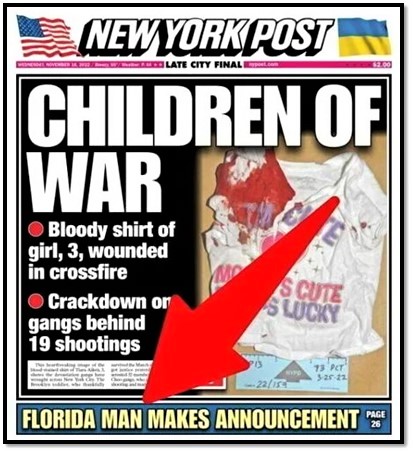
Great headline!
Or perhaps I should say, bottomline?
And speaking of irresistible, The New York Times cited another great headline from the New York Post:

Here’s the headline:

The Union-Tribune editorial also mentioned this from CNN:

Irresistible! The article was a veritable feast of Trump’s “false and misleading claims,” though the writers assured us was “not a comprehensive list.”
And that story led me to this one:

Here’s one example from the story:
“‘When the wall was finished, that’s how we set all these records. We have records that nobody can even compete with right now,’ Donald J. Trump said.”
“False.”
“The Trump administration constructed 453 miles of border wall over four years, and a vast majority of the new barriers reinforced or replaced existing structures. Of those, about 47 miles were new primary barriers. The United States’ southwestern border with Mexico is over 1,900 miles.”
And Fox News – Fox News! – was the reason for this great headline about Trump’s announcement:

Here’s another great headline, recounting the audience reaction to Trump’s announcement:

Trump’s speech was so awful that it took security guards to force some people to stay.
Now let’s take a headline-related stroll down Memory Lane and a great headline from 2015 that didn’t get the attention I think it deserved.
So I’ll offer it now:

“When Donald J. Trump bought a fixer-upper golf club on Lowes Island here for $13 million in 2009, he poured millions more into reconfiguring its two courses. He angered conservationists by chopping down more than 400 trees to open up views of the Potomac River. And he shocked no one by renaming the club after himself.”
It was business as usual for Trump.
Just FYI, here’s a map showing Lowes Island, the Potomac River, and Trump’s golf club:

So, why do I consider the above headline from 2015 a great headline?
Because it caught my eye, drew me into the article, and made reading the article…
Irresistible.
Plus, any article that recounts Trump’s abysmal ignorance of history is going to keep me reading.
What’s the “history” that Trump “dressed up”?
“Between the 14th hole and the 15th tee of one of the club’s two courses, Mr. Trump installed a flagpole on a stone pedestal overlooking the Potomac, to which he affixed a plaque purportedly designating ‘The River of Blood.’”
Here’s the pedestal and plaque:

Here’s a close-up of the plaque:

And here’s the problem with the plaque, says The New York Times article:
“‘No. Uh-uh. No way. Nothing like that ever happened there,’ said Richard Gillespie, the executive director of the Mosby Heritage Area Association, a historical preservation and education group devoted to an 1,800-square-mile section of the Northern Virginia Piedmont, including the Lowes Island site.”

“Mr. Gillespie’s contradiction of the plaque’s account was seconded by Alana Blumenthal, the curator of the Loudoun Museum in nearby Leesburg.
“(‘A third local expert, who said he had written to Mr. Trump’s company about the inscription’s falsehoods and offered to provide historically valid replacement text, insisted on anonymity because he did not want to cross the Trump Organization by disclosing a private exchange.’)”
I’m trying to imagine who came up with the idea of a fake Civil War memorial to put on Trump’s golf course. It couldn’t have been Trump, whose knowledge of history might stretch as far back as what he had for breakfast that morning.
I can just hear Trump explaining our Civil War:
“Yeah, it was that war where – and I know this stuff, I’m a big history fan, everybody knows that. People come up to me all the time and say so. They say, ‘Mr. President’ – that’s what everybody calls me – they say, ‘Mr. President, you sure know your history.’ And the Civil War was a war, and it was where everybody was nice to each other. You know – civil? Nice?”
In his first 18 months in the White House, Trump screwed up history facts many times, according to this June 2018 article:

This article (great headline, by the way) was written too early to include my personal favorite of Trump’s history gaffes, from his July 4th speech in 2019:
“In June of 1775, the Continental Congress created a unified army out of the revolutionary forces encamped around Boston and New York. Our army manned the air, it rammed the ramparts, it took over the airports, it did everything it had to do, and at Fort McHenry, under the rockets’ red glare, it had nothing but victory.”
Gaffe #1: There were no airports in 1775 for the army to take over.
Gaffe #2: Fort McHenry was a battle site in the War of 1812, not the Revolutionary War (1775-1783).
Gaffe#3: “The rockets’ red glare” is a lyric from our National Anthem, inspired by the battle at Fort McHenry in 1814.
Trump’s remarks generated many great headlines, both national and international, like this one from the United Kingdom:

It also generated a social media storm, including this:

So it likely wasn’t Trump who came up with the fake Civil War memorial idea, and it must have been one of his toadies.
There have been and are so many, I couldn’t begin to guess which one.

After The New York Times story in 2015, when reporters pointed out the fake memorial discrepancy – that it was a lie – Trump offered his usual, useless, illogical responses:
“‘That was a prime site for river crossings,’ Mr. Trump said. ‘So, if people are crossing the river, and you happen to be in a civil war, I would say that people were shot – a lot of them.’”
In true Trumpian fashion, he repeatedly said that “numerous historians” had told him that the golf club site was known as the River of Blood, but he said he didn’t remember their names.
Then he said the historians had spoken not to him but to “my people.” But he refused to identify any underlings who might still possess the historians’ names.
Finally, as reporters persisted, telling Trump that local historians had called his memorial a fiction, he responded with:
“‘How would they know that?” Were they there?”
Well, no, Donald.

Were you?
In summary…
The Bad News:
Now that Trump has declared he’s running for president in 2024, we’re going to see a lot of Trump-related headlines.
The Good News:
Some of those headlines will be great headlines.
And on November 6, 2024 this will be the greatest headline of them all:

I’m guessing most of us know that if you’re making a traditional Thanksgiving dinner tomorrow, it costs more this year – significantly more:

Inflation is hitting most all of us, and here comes my conundrum – my “confusing and difficult problem or question”:
Americans are hurting from inflation, yet Americans are also handing over money at a “record pace” to…

“Figures released November 9 show the U.S. commercial casino industry had its best quarter ever, winning over $15 billion from gamblers in the third quarter of this year.”
In other words, in just three months – July, August and September – gamblers gave $15 billion+ to casinos.

Let’s consider that $15 billion+.
The population of the U.S. is around 332 million people, and we know not every U.S. resident goes to casinos.
So let’s hypothesize that half of U.S. residents go to casinos – 166 million people.
For those 166 million people to lose $15 billion+ in three months, each of those 166 million people had to lose at least $90 at casinos.
Now let’s go back to those more expensive Thanksgiving dinners. The CNN article says:
“A feast for 10 with 12 menu items including a turkey, stuffing, cranberries, and pumpkin pie mix will cost $64.05 on average – up $10.74 from last year.”
So an increase of almost $11 for a Thanksgiving dinner for 10.

How many of those 166 million people who lost at least $90 in the third quarter at casinos – are also whining about the high cost of Thanksgiving?
Many of them. I’ll say most of them.
Maybe all of them.
Yet how can they whine about the high cost of Thanksgiving, when they’re losing money at casinos – money that would have covered that $64.05 Thanksgiving dinner for 10…
With money left over?
That’s my Thanksgiving conundrum.
So, if any of you out there can help me figure this out – people complaining about the high cost of Thanksgiving while they’re doing this…

But if you can’t solve my conundrum – that’s OK.
And let’s all…

I recently saw the above ad in the San Diego Union-Tribune.
This immediately prompted the questions:
Free?
For Whom?

And this answer:
Not us taxpayers.
Who are the “Airmen of Note”?
The ad describes them as “The Premier Jazz Ensemble of the United States Air Force.”
Suggesting that there is more than one “Jazz Ensemble of the United States Air Force” and those others – the not “premiere” – are then apparently inferior?
Of course, this called for a visit to the Airmen of Note website:

Where we learn that the Airmen of Note…
“…is one of six musical ensembles that form The U.S. Air Force Band…the current band consists of 18 active-duty musicians, including one vocalist.”
Here they are:

I couldn’t help but notice that there is a female member in Airmen of note:

Perhaps the Air Force decided that “Airmen and Airwomen of Note” didn’t have quite the same cachet. And perhaps the Air Force also decided that “Airpersons of Note…”

Didn’t cut it, either.
Either way, this jazz ensemble was advertising a “FREE CONCERT!” which meant free admission.
But the concert cost plenty.
Cost us taxpayers, that is.
I could find no recent articles about the cost of Airmen of Note and/or all the military musicians playing their little hearts out, courtesy of us taxpayers. This article from 2019:

Used figures from three years earlier:
“…in 2016, the 136 military bands maintained by the Department of Defense, employing more than 6,500 full-time professional musicians at an annual cost of about $500 million, caught the attention of budget-cutters worried about surging federal deficits.”
I realize that $500 million – even $620,840,225 in 2022 dollars – is barely a drop in the bottomless bucket also known as national defense budget, which in FY 2022 was around $777 billion.
It’s just that…I don’t believe it’s an effective use of my tax dollars to pay thousands of military people to play music.
And back in 2016, then-Senator Martha McSally seemed to feel the same, according to this article:

“Martha McSally, a Republican Congresswoman from Arizona, made waves this week by attacking the Air Force’s bands. ‘We have hundreds of people playing the tuba and clarinet,’ she said at a hearing of the House Armed Services Committee. ‘If we had a manning crisis, from my perspective, we would tell people to put down the tuba and pick up a wrench or gun.’”
That was March 2016, and then came this article in June 2016:

“Last week, the Arizona Republican [McSally] pushed forward, introducing a plan that would limit all military ensemble performances at social functions outside official military duties.”
“‘For every dollar that is spent on our bands to entertain at social functions, that’s a dollar we’re not spending on national security and our troops and families,’ said McSally, a retired Air Force colonel.

“‘This is not an attack on the arts,’ she continued. ‘I’m a vocalist myself. I care deeply about the arts…While our communities certainly do enjoy being entertained by our military bands, they would prefer to be protected by our military.’”
Apparently McSally’s “plan” went nowhere, and McSally went home in December 2020 after losing a special election to Senator Mark Kelly.
I can find no recent evidence online of anyone in the House or Senate challenging the Defense Department’s use of military members in bands and our tax dollars paying for it.
The above Air Force Times article, on the other hand, quoted several people who spoke about military bands “shouldn’t be underestimated” in the headline. Here’s one of them:

“Senior Master Sergeant Matthew Ascione, guitarist and co-writer on many original songs for the band, said joining Max Impact gave him the opportunity to ‘serve my country and use that power and influence of music to further the goals of the Air Force…I make sure it gives me that emotional movement, because I know that if it moves me, it may move other people.’”
Well, Senior Master Sergeant Ascione, that’s really nice, but I’m wondering – how exactly does your writing and playing music “further the goals of the Air Force”?
And if the music “moves other people,” what is it moving them to?
Is it moving people to…
Enlist?
To borrow Martha McSally’s phrase about a “manning crisis” in our military, according to this September 19 article, we’re having exactly that:

“The U.S. military’s all-volunteer force (AVF) is slowly dying…the armed services are struggling to meet their recruiting goals like rarely before. The Army is the most affected, projected to fall short by up to 15,000 soldiers, with a larger deficit expected next year.
“Experts point to a variety of reasons, such as insufficient pay and benefits, a difficult work-life environment, ‘culture war’ issues, COVID-19, and a strong job market. Even if each were ‘fixed,’ the core issues driving the AVF’s decline still won’t be reversed.”
Can the Air Force track any – even one – enlistment by people hearing its music?
Where’s the payback here? Where’s the ROI – the Return on Investment?
The taxpayers’ investment?
I’ve been talking about the Air Force bands, but let’s take a look at all these bands we’re paying for.
This guide came in handy:

It’s dated 2018 and you’ll see it comes with a “may be outdated” disclaimer, but here’s what I’ve learned:
Air Force: 17 bands.
Army: 88 bands.
Marines: 10 bands.
Navy: 11 bands.
Coast Guard: 1 band.
What? No Space Force Band?
That’s OK. When the Space Force does get a band – or two or 50 – this September article says they have an official song for their band(s) to play:

And since I had to read the lyrics, so do you:

I also listened to a recording of Semper Supra and, wow – talk about being “moved” by military music!
Not.
Not when I’m paying for it.
I know the Department of Defense will never agree to give back the money we taxpayers are spending on military bands, so I’ll offer an alternative.
Take those half-billion+ annual dollars and start fixing this:

What is this?
It’s images that show just some of the issues facing many military members and their families who live in military housing.
As this March 2022 article put it:

“In 2018, Reuters reported on the dangerous conditions that military families have faced in base housing, including mold growth, toxic exposure, lead-based paint and asbestos, pest and rodent infestations, and water and sewage issues. Many conditions were exacerbated by poor or slow response to maintenance requests.
“…three residents of military housing told the subpanel that many of the issues meant to be corrected by the reforms persist throughout the system.”
So, how about it, fellow taxpayers? Are you with me?
Disband the bands, put the personnel to work with that “wrench or gun” that Martha McSally talked about, and use the money to help provide decent housing for our all-voluntary military?
So we can stop seeing headlines like this recent example:

And stop seeing ads like this:

And stop paying for – Heaven help us – stuff like this:

Which would you rather pay for?

Release date: August 2021 in UK, August 2022 in U.S.
Review, short version: All thumbs up.
Review, long version:
When a program is produced by the British Broadcasting Company (BBC), I know it will be well done.
When a program is carried by the Public Broadcasting Service (PBS), I know it will be well worth watching.
Put these two powerhouses together and – you get outstanding:

If you’re a fan of English royal history, Tudor history, the Boleyns, and/or Anne Boleyn, then The Boleyns: A Scandalous Family is must-see viewing.
My fandom of all these topics started a long time ago with my first novel about Anne. Since then I’ve read many more novels about her, plus biographies, and watched Anne of the Thousand Days (1969), The Six Wives of Henry VIII (1972), The Other Boleyn Girl (2008), Wolf Hall (2015) and whatever else I could find. Some more than once.
But The Boleyns stands out for me because it’s the facts, insofar as they are known, spoken about by articulate experts, with well-done reenactments:

And an interesting thing about those reenactments is that Henry VIII – Anne’s husband and eventual executioner – appears infrequently, more in the shadows than not, and to the best of my recollection had little or no speaking role at all.
But then – this is the Boleyns’ story, after all.
There are many articles online about the documentary, but I thought this description from a PBS station covered it well:
“Based on 16th-century sources, including rare original letters and documents, this new three-part series uses insights from leading Tudor scholars and dramatic re-enactments to bring this story to life from the family’s own perspective.
“Tight-knit, cunning and power-hungry, rising from obscurity to the apex of power, the Boleyns played a dangerous game and paid the ultimate price…A riveting story of love, sex, betrayal and obsession.”
The Boleyns garnered a lot of reviews, some negative – like this one from the United Kingdom, where The Boleyns premiered in 2021:

And this one, also from the UK in 2021, had a rather cheeky (as the Brits would say) headline:

When The Boleyns debuted in the U.S. in August 2022, reviews were largely favorable, and I’ll close with this one:

And how did the Boleyns get that “last laugh” in the headline?
Here’s how:
“The Boleyns changed the course of British history and left a remarkable legacy in the form of two magnificent monarchs: Queen Elizabeth I, daughter of Anne, and Queen Elizabeth II, a direct descendant of Mary Boleyn”:

I’ve done more than a half-dozen posts on this blog that were critical of USPS – the United States Postal Service.

And I’ve enjoyed doing every one of them.
This time, though – there’s no enjoyment here.
I’m angry, and I’m sad, and that’s because…
It’s personal.
*****
Somewhere, someone employed by USPS is enjoying a windfall.
Not a large windfall – not enough for a month’s rent or car payment, but still…
A windfall is a good thing for the recipient.
But this time, not for the person who provided it:
Me.
My younger brothers – twins – had a milestone birthday coming up, and they were celebrating by going on a five-day bro trip to a U.S. city they’d never visited.
I wanted to treat them to birthday dinner, so I decided to purchase a gift card they could use on their special day. I wouldn’t be there in person, but they’d dine with my gift and that was how we’d celebrate.

A nice plan except, as it turned out, for one circumstance: They live in Michigan and I live in California. So to get the gift card into their hands, I sent birthday cards to both brothers, and enclosed the gift card in one.
Are your alarm bells going off?
Mine weren’t.
Buy gift card, insert into birthday card, insert card into envelope, seal, address, apply stamp and mail – easy!
I’d asked my brother to let me know when the card and gift card arrived, and he did.
He also let me know that the envelope flap was unsealed.
And the gift card was gone.
The envelope hadn’t been torn open or slit open – none of this:

No, someone, somewhere at USPS unsealed the flap, took the gift card, and sent the envelope and card on their way.
No need to seal the envelope back up. Nothing in it now but a birthday card.
How do I know the thief was a USPS employee?
Because I went to the post office, walked inside, and put both birthday cards in the indoor slot:

From the local USPS employees’ hands the cards went to Michigan, each to my brother’s homes and in through their front door mail slots, so – no hands on that mail between California and Michigan other than USPS employee hands:

When my brother shared the news, I experienced a rush of feelings, all bad: anger, sadness, helplessness, frustration, disappointment in my fellow man/woman, ripped off, more anger and more sadness.
This wasn’t just a theft from my brothers and me, it has a wider context:
We trust USPS to do what they promise to do: Deliver mail from us and to us. Unscathed, intact, and reasonably on time.
As a high-ranking USPS employee put it very recently,
“For over two centuries, the Postal Service has honored its fundamental commitment to protect the sanctity of the U.S. Mail.


I’ve thought a lot about this since the theft happened, and my thoughts go back and forth.
“Maybe,” I speculated, “that postal worker will use the money to buy Christmas presents for their kids.”

And then,
“Maybe that postal worker will use the money to buy drugs.”
Maybe it doesn’t matter.
The point is the theft, not what the thief did with the money.
You could ask – logically – “Why didn’t you purchase an electronic gift card? No post office, no snail mail, your brother pulls out his phone and dinner is paid for!”
Yes, I know. The internet abounds with sites like this:

But…I’m just old-fashioned enough to have wanted my brothers to enjoy the heft of the gift card in their hands, the pleasure of placing it on top of the dinner tab, and maybe the anticipation of putting the gift card back in his wallet to enjoy spending the bit of balance left somewhere else.
They’ll enjoy none of that, and I won’t get to hear about the wonderful birthday dinner I’d treated them to on their milestone birthday.
And here’s an irony.
On November 9 as I was sitting at my computer writing this post, I heard this local news story about a USPS mail carrier here in San Diego County:

“A U.S. Postal Service mail carrier from Oceanside’s Brooks Street Station pleaded guilty in federal court to stealing over $2,000 from customers, announced San Diego Attorney Randy Grossman’s office.
“Breanna Wares, 39, admitted to stealing gift cards, cash and jewelry from around 20 residents along her route, according to her plea agreement.”
This thief definitely merits the How-Low-Can-You-Go award:
“The attorney’s office said most of the addresses on her route were located on the U.S. Marine Corp Base Camp Pendleton and many of the victims were active members of the military.”
Stealing from our military. As low as you can go.
A quick online search revealed that those military members – and I – have plenty of company, because theft by USPS employees is everywhere, not just here in San Diego County.
Here’s a story from Illinois:

And Connecticut:

And Alabama:

And USPS is very aware of internal theft:

But USPS isn’t stopping it.
The USPS Office of Inspector General has a hotline for reporting postal employee thefts, but I decided not to bother after reading this:
“Unless you are contacted directly by one of our investigators, there will be no communication from our office, outside of the confirmation that the Hotline received your complaint, and which may advise you that your matter has been referred to another entity for appropriate action, where and if applicable.”
You see that reference about referring my “matter” to “another entity”?
Here it is:

Why waste my time?
No – all I can do is let go of my feelings of anger, sadness, helplessness, frustration, disappointment in my fellow man/woman, ripped off, more anger and more sadness.
And learn from this experience.



I don’t bake, but I have baking soda in my house.
What the heck is baking soda?
And why is it used in baking?
I had never pondered these questions before, but as I was about to recycle that empty, ubiquitous, orange Arm & Hammer baking soda box, some impulse prompted me – for the first time ever – to read it.
Box top, back and sides.
According to the box of Arm & Hammer, there are dozens of reasons to have baking soda around besides baking.
And a long history to go with it.
How long?
This long, says ArmAndHammer.com:

Here’s the back of the box, with just some of the ways to use Arm & Hammer baking soda:

But wait – there’s more. The internet abounds with articles about uses for baking soda – I found 10, 30, 50, and topped out at 101:

Let’s go back to – what the heck is baking soda?
My research says it’s this:
“Sodium bicarbonate (IUPAC name: sodium hydrogencarbonate), commonly known as baking soda or bicarbonate of soda, is a chemical compound with the formula NaHCO3. It is a salt composed of a sodium cation (Na+) and a bicarbonate anion (HCO3−). Sodium bicarbonate is a white solid that is crystalline, but often appears as a fine powder. It has a slightly salty, alkaline taste resembling that of washing soda (sodium carbonate). The natural mineral form is nahcolite. It is a component of the mineral natron and is found dissolved in many mineral springs.”
That formula looks like this:

And if you understood all that, you get an “A” in chemistry today.
As to – why do we use baking soda in baking?
Because somewhere, someone somehow acquired the ingredients of NaHCO3, experimented by trying them with some other ingredients, and discovered…
“Look at how soft and fluffy my bread is!”
They may not have understood why, but – as the HomeMadeSimple.com website explains it:
“… baking soda releases a carbon dioxide gas which helps leaven the dough, creating a soft, fluffy cookie.”
And not just cookies, but bread and cake as well.
Arm & Hammer didn’t invent baking soda, and they make no claims to that on their website. Instead, they say:

“…in 1846 brothers-in-law Dr. Austin Church and John Dwight began preparing bicarbonate of soda for commercial distribution. They proudly packaged this simple, yet versatile product by hand into paper bags in their first factory: Mr. Dwight’s kitchen.”
John Dwight and Company was officially formed in 1847 to sell Dwight’s Saleratus, saleratus being Latin for aerated salt, another term for baking soda.
In 1867, says the website, the Arm & Hammer “logo was born”:

“It symbolizes the myth of Vulcan, the Roman god of fire, who would strike his mighty hammer on his anvil. Over time, this strong and powerful icon becomes recognized as a symbol of quality all across the world.”
And speaking of myths, this seems like a good place to pause and dispel the myth about Arm & Hammer getting its name from a guy named Armand Hammer – a myth that many people, including me, thought could be true, until several websites clarified:
“It is often claimed that the brand name originated with tycoon Armand Hammer; however, the Arm & Hammer brand was in use 31 years before Hammer was born.”
Myth dispelled.
Over the years Arm & Hammer experimented with lots of other baking soda uses, like in 1972, when they decided that our fridges and freezes stank – and only they had the cure:

As marketing ploys go, this was pretty good – convince people to buy this product specifically made for fridges and freezers BUT that needed to be changed every 30 days, and voila! Millions of boxes going into shopping carts.
As the Los Angeles Times put it 1994:

“By the industry’s own score card, boxes of baking soda are sucking up odors inside nearly nine out of 10 American refrigerators. More refrigerators are likely to have baking soda than working light bulbs.”
Another use: In 1986, says the Arm & Hammer website:
“Lady Liberty Gets a Lift
In preparation of the Statue of Liberty’s 100th anniversary on July 4, 1986, 100 tons of ARM & HAMMER™ Baking Soda are used to gently clean and beautify her. We remove 99 years of coal tar without damaging the delicate copper interior.”
I wanted to verify this and found some websites confirmed it, while others used words like “apparently,” and others simply referred to generic “baking soda.”
So – can Arm & Hammer can make that Lady Liberty claim?
I think I’ll choose to believe it.
But there’s no doubt Arm & Hammer definitely can claim this – a variety of products:

You’ll notice that one of the products is cat litter, which brings us back around to the title of this post:
What Do My Mouth And A Cat’s Litter Box Have In Common?
Arm & Hammer puts their baking soda in their cat litter. The website says:
“Whether you’re a one-cat or multi-cat home, ARM & HAMMER has the best kitty litter to give all your cats the freshness they deserve. Find your purrr-fect ARM & HAMMER kitty litter below.”
“Below” was by my count was 16 pet products that will help you avoid this:
Scrubbing…

And this:
Scraping…

And this:

I love that “Do not attempt” in the lower-left corner.
And here’s what my mouth and a cat litter box have in common:
I put baking soda in my mouth.
My dentist suggested brushing with baking soda because I’m a big-time iced tea and coffee consumer, which can stain teeth.
According to this and other websites:

Can brushing with baking soda whiten teeth?
Yes, it can, because an alkaline solution is made when baking soda mixes with water. This leads to the release of free radicals, which help to break up plaque on the teeth and surface stains. In addition, for anyone experiencing mouth ulcers, baking soda is an effective treatment. It also assists in freshening bad breath by neutralizing acids from leftover food particles.

How often is it OK to use baking soda to brush teeth?
The Journal of the American Dental Association states that baking soda is safe for daily use. It is a good idea to only use baking soda to brush the teeth once per day. Use a good fluoride toothpaste to brush teeth the rest of the time.
Conclusion
Baking soda is an effective teeth whitener when used appropriately to brush the teeth. Keep in mind that it is also important to maintain regular dental visits and continue using a good toothpaste with any baking soda brushing routine. For the best results, consult with a family dentist to find out the best uses for baking soda when brushing teeth.
And yes – I know Arm & Hammer makes a number of oral care products including toothpaste, but I figure…
If plain old Arm & Hammer baking soda was good enough for her…

For sure it’s good enough for me:

Intending no disrespect to Canada’s national anthem which begins, “O, Canada…”
But O, Canada – I think you’ve been cheated.
Here’s the story:
In early October the Frito Lay Company, maker of these:

Announced in a news release:

Frito Lay was proudly unveiling a “statue to commemorate Cheetle, the official term for the brand’s orange dust”:

If you’re not a Cheetos consumer, you may be wondering about the phrase “the brand’s orange dust.” Cheetos are a finger food, and the orange dust is a powdery substance that sticks to your fingers, making them look like this:

The news release describes the statue as an “almost-17-foot-tall, impressive homage to Canadians’ cheesy, orange-dusted fingertips” and…
“…is of a hand proudly holding a Cheetos Puffs snack, with its Cheetle-dipped fingers boldly on show…”
Closer inspection reveals…

That the hand missing two fingers.
I don’t know why two fingers are missing. Maybe Frito Lay was facing budget restraints? Or dealing with supply chain issues? Or…
But that isn’t the cheating part. Stay with me, here.
If you’re wondering about the reference to “Canadians’ cheesy, orange-dusted fingertips,” the statue unveiling took place in Cheadle, described in this article by the venerable Food & Wine magazine…

As “a town of around 100 people…about 30 miles east of Calgary in south-central Alberta, Canada…”
Now, not to disparage the town of Cheadle in any way – I’m sure it’s a nice place, and I found this nice picture online:

But why would Frito Lay choose such a small place to unveil such a big statue?
The news release explains:
“The Cheetos brand, rooted in mischievous fun, was on the lookout for the perfect home for its statue until it came across a hamlet in Alberta with a kindred name, Cheadle. (What could be more perfect?)”
Well, I’m stumped.
Seriously – what could be more perfect?
World peace? An end to the pandemic? Marjorie Taylor Greene deciding to become a cloistered nun?
And also seriously – don’t book your airline tickets for Cheadle, Alberta, Canada because, says this article:

“…the unique piece of art won’t stay in Cheadle forever, according to the news release. Cheadle residents and visitors can check out the big, cheesy fingers until November 4. Then, the monument will embark on a tour of other locations in Canada.”
And in my opinion, the “around 100 people” of Cheadle should say “good riddance” because the Frito Lay orange fingers statue was there under false pretenses.
Here’s the cheating part.
The Frito Lay news release defined “Cheetle” as:
“…the official term for the brand’s orange dust.”
The news release also says,
“‘Cheetos fans have always known that the delicious, cheesy dust on their fingertips is an unmistakably delicious part of the Cheetos experience, but now it officially has a name: Cheetle,’ said Lisa Allie, Senior Marketing Director, PepsiCo Foods Canada.”
Lisa, Lisa, Lisa.
How can you claim that the “cheesy dust” now “officially has a name: Cheetle” when this story:

Proclaimed that very same thing in January 2020?
“‘Cheetle is defined as ‘that orange and red dust symbolic of true Cheetos fandom,’ according to a news release from Frito Lay and spokesman Chester Cheetah.”
And this article, also from January 2020, said the same:

“…‘Cheetle’ is by no means a new term. A Frito-Lay rep told HuffPost the company trademarked the term with that particular spelling 10 years ago.
“In addition, brand mascot Chester Cheetah used ‘Cheetle’ as a hashtag in 2015…and the term (also spelled ‘cheedle’) was added to the Urban Dictionary in 2005…”
And Lisa at Frito Lay, your very own news release from January 2020:

Said:
“Now, ‘Cheetle,’ as the orange and red dust symbolic of true Cheetos fandom is officially known, is taking over a new snack for Cheetos fans to enjoy in the new year: popcorn.”
You see?
Frito Lay said that “Cheetle” was “officially known” close to three years ago, yet they had the nerve – the unmitigated gall – to tell the residents of Cheadle, Alberta, Canada that the orange dust “now officially” had a name.
This, as well as the almost-17-foot-tall statue, was the impetus for all the Cheetos/Cheetle/Cheadle excitement.
Well, I call it…
Cheating.
Chicanery.
Cheesy.
I’ve searched the Frito Lay website as to where they were going to display the statue after the Canada tour, but they’re not saying.
But if they think they’re going to bring this…

…to the U.S. and try to flimflam us – in, say, Cheadle, Montana:

Or at Cheadle Lake in Oregon:

Or at actor Don Cheadle’s former home in California:

Well, Frito Lay, think again.
Because when you get to the U.S./Canada border…
We’ll be ready:

P.S.: If you’re noticing less Cheetos in the bag, and you’re concerned about a reliable, ongoing source of Cheetle fingers…
Worry no more.
PepsiCo, parent company of Frito Lay and maker of all 21 types of Cheetos, was mentioned in this recent article:

“In mid-October, PepsiCo, whose prices for its drinks and chips were up 17 percent in the latest quarter from year-earlier levels, reported that its third-quarter profit grew more than 20 percent.”
Here’s one reason why PepsiCo’s profits rose 17 percent in one year:

“…if you buy a bag of Doritos, expect about five fewer chips. Frito-Lay reportedly confirmed that they dropped the weight of bags from 9.75 ounces to 9.25 ounces. ‘Inflation is hitting everyone,’ a spokesperson told Quartz. ‘We took just a little bit out of the bag so we can give you the same price and you can keep enjoying your chips.’”
The Doritos bags look the same and the price is the same:

You’re just getting more air and less Doritos.
And rest assured, if PepsiCo is doing this with Doritos, it’s doing this with all its snack foods including 21 types of Cheetos.
But that’s OK, because everyone’s paycheck has gone up 17 percent from a year ago.
Right?
Hello? Anyone out there?
I’ll close with offering my own statue of a giant hand, a 16.5-foot response to PepsiCo and their shrinkflation practices they thought we consumers would be too stupid to notice:

My giant hand statue is currently on loan to Milan, Italy where it resides in the Piazza Affari, the square in Milan where the Italian stock exchange has its headquarters.
But I’m going to bring it back to the U.S. and loan it to PepsiCo so they can install it at their global headquarters in Harrison, NY.
Looks nice there, don’t you think?

When a toilet makes local, national and international headlines, I want to know about it.
The story first appeared here, on October 19:

It was quickly picked up by national media:

And then international media:

(I particularly liked how the Daily Mail’s multi-purpose headline addressed both the $1.7M toilet issue and California Governor Gavin Newsom’s presidential ambitions.)
All this led to a profusion of potty-mouth headlines:

While in the meantime, Governor Newsom intervened:

And the Chronicle’s reporter was no doubt congratulating herself on coining a new word:
“Toiletgate.”
What’s the cause of this tempest in a toilet?
Let’s start with the where:
Noe Valley, a neighborhood in San Francisco:

The population is around 22,500 out of San Francisco’s 887,000 residents.
An online site described Noe Valley as…
“…a quaint, in-demand place to live that’s geared toward young families. The neighborhood features tidy rows of Victorian and Edwardian homes, and thanks to surrounding hills, has some of the city’s sunniest weather. Stroller pushers and dog walkers jostle along 24th Street, which is stocked with bakeries, wine and cheese shops and relaxed cafes. A weekly farmers’ market is held in the modest town square.”
Here’s that “modest town square”:

Which this article…

Described as evolving from:
“… a defunct gas station, to a parking lot, to a farmers market and now to a town square that is a quite large community gathering-place.”
The space is used “to encourage community-building events, including live music and political meetups. On Saturdays, the town square plays host to a lively farmers market”:

What the town square is not playing host to is an appropriate public toilet. The October 21 San Francisco Chronicle article noted:
“…at the Noe Valley Town Square, a ratty Porta Potti leans in the corner, unlocked only on Saturdays for farmers’ market vendors.”
The San Francisco Chronicle says the proposed $1.7 million toilet is just that – one toilet enclosed in a structure, presumably with a sink – in 150 square feet of space.
The project has already been in the works for nearly a year.
It won’t be ready for use until 2025.
And that $1.7 million price tag?
That, says the Chronicle is “about the same as a single-family home in this wildly overpriced city.”

Here’s a cost and size comparison: Proposed Noe Valley toilet, 150 square feet, $1.7 million. The above single-family San Francisco home recently sold for $1.475 million; 1650 square feet, two bedrooms, 1½ bathrooms.
Why that $1.7 million was ever approved, why the cost is so high, and why the construction will take so long is a crazy, convoluted story that you can read about if you wish.
I read about it, gnashed my teeth, then took two Advil and a long nap.
That $1.7 million is in limbo, being reviewed by a committee in the California State Legislature…

And for now, the residents of Noe Valley will continue gathering in their treasured town square, enjoying the live music, and shopping at the weekly farmers market.
And when they need a public toilet, well…
Here it is:

